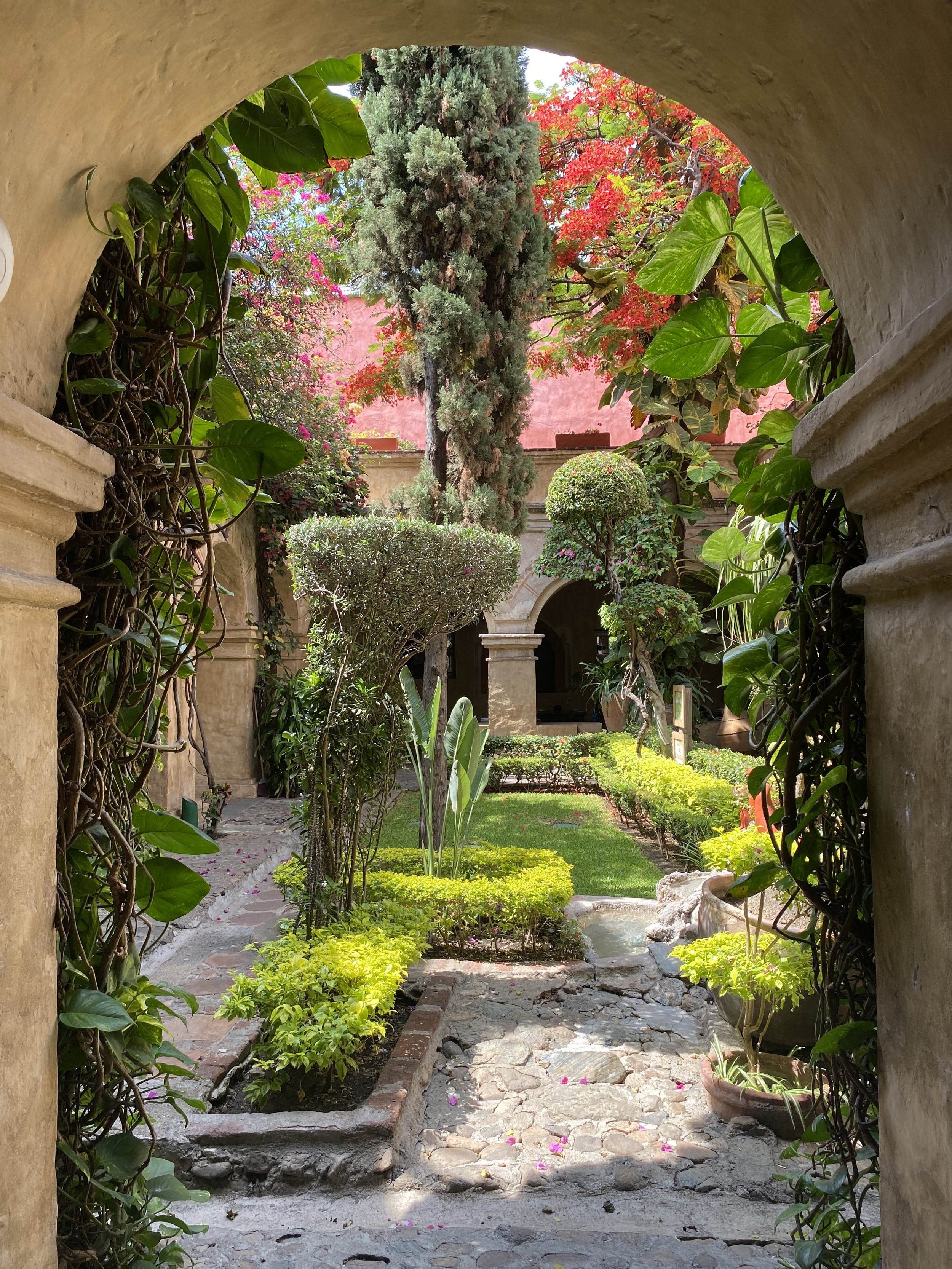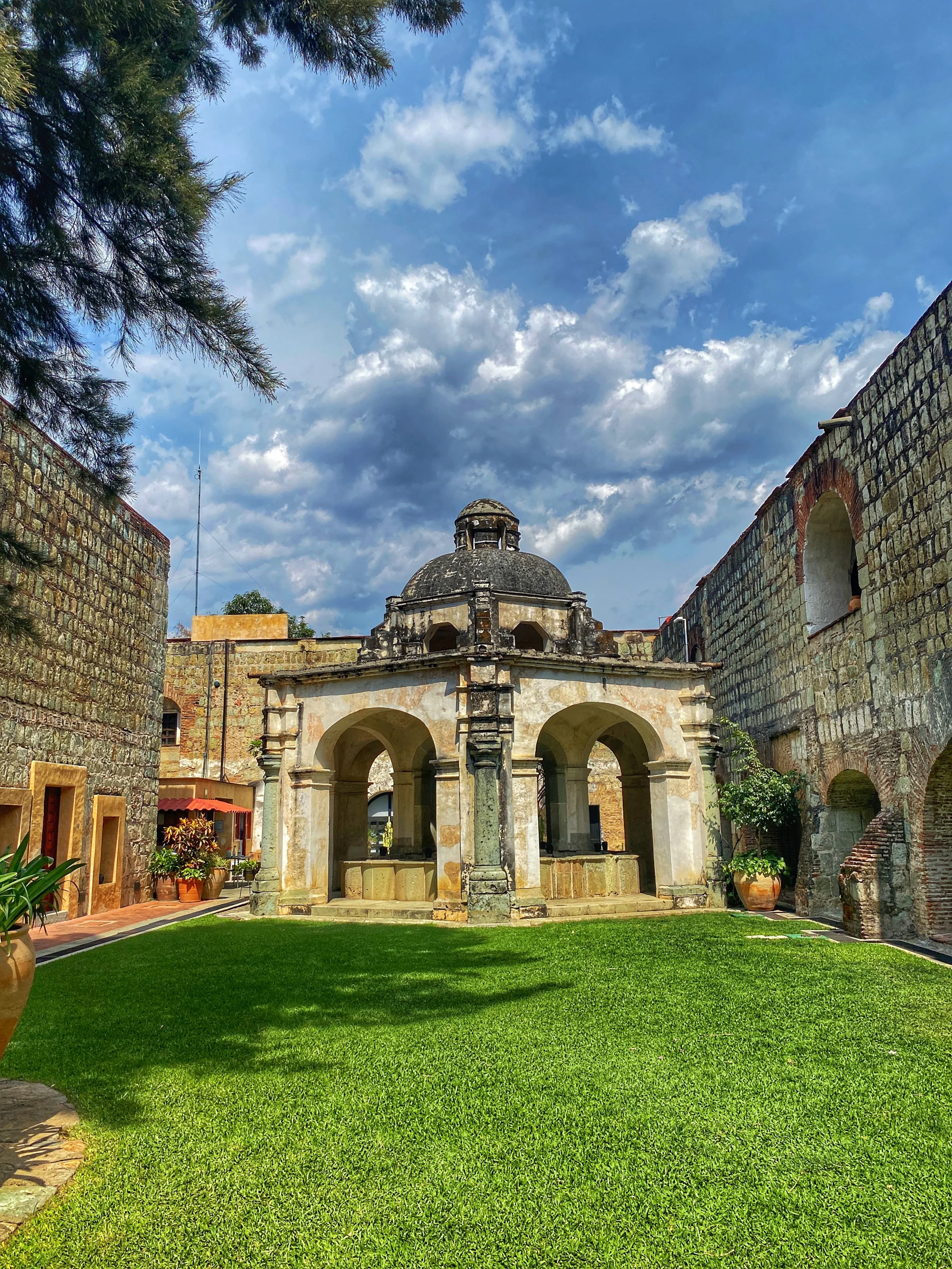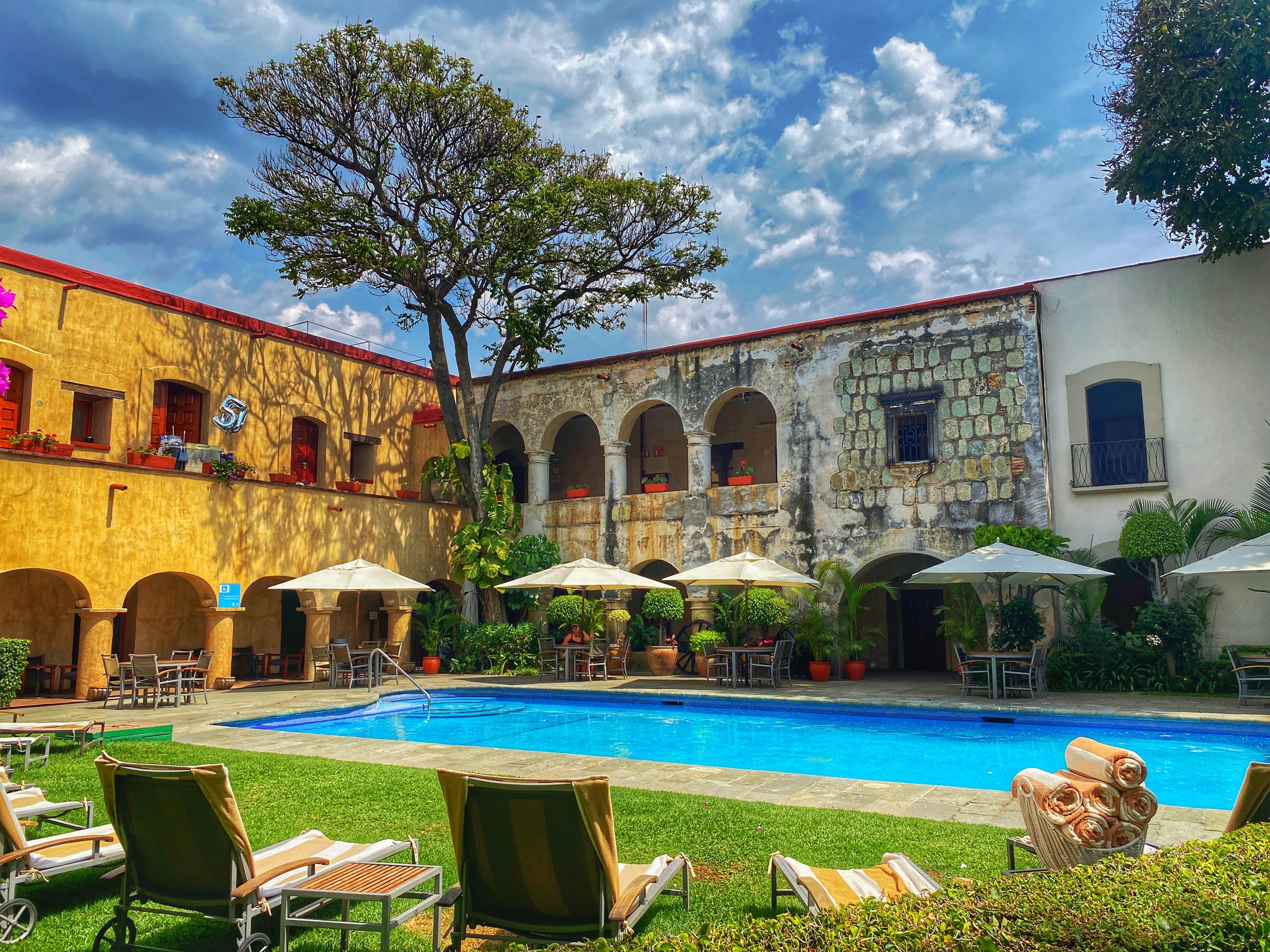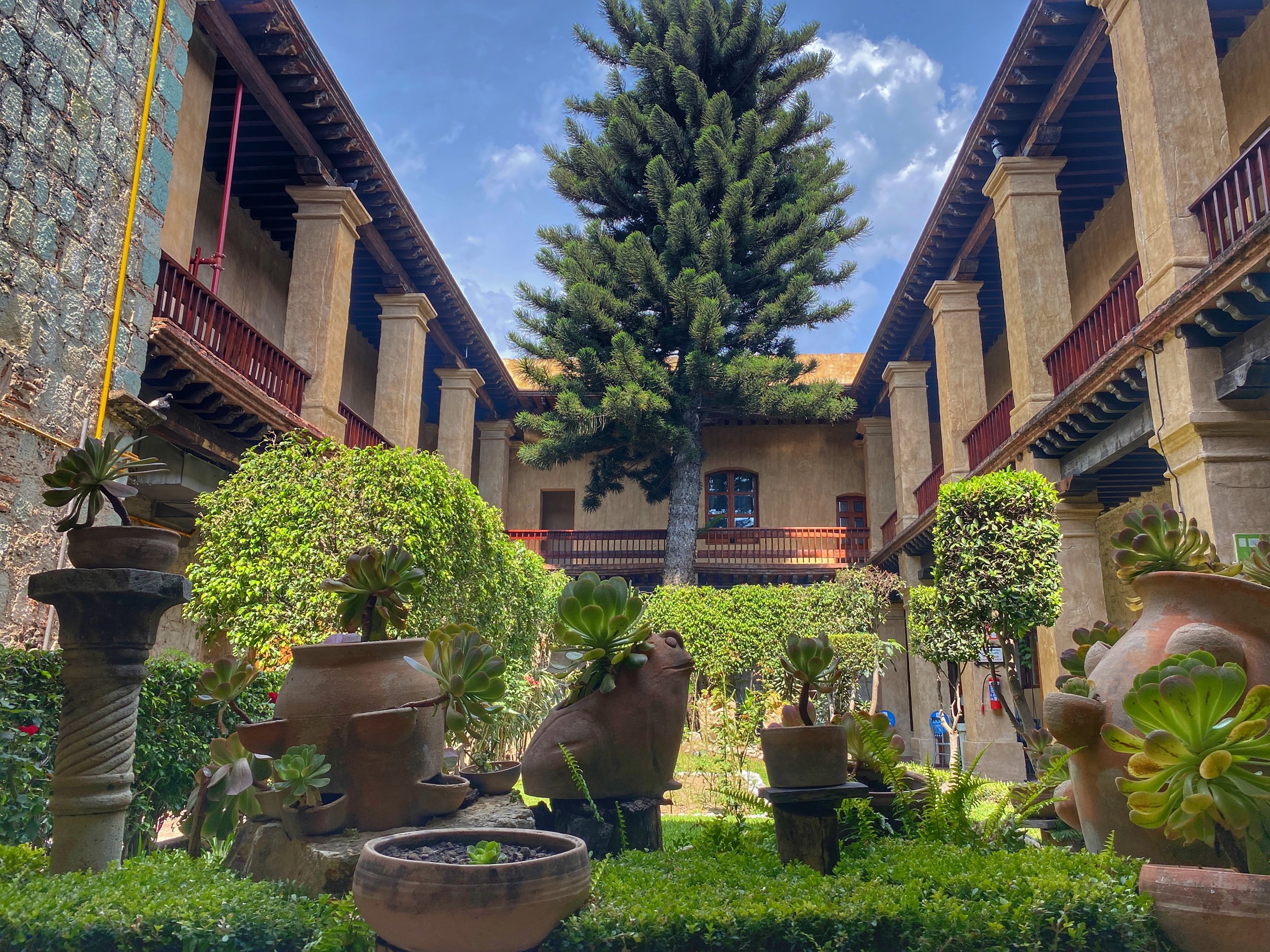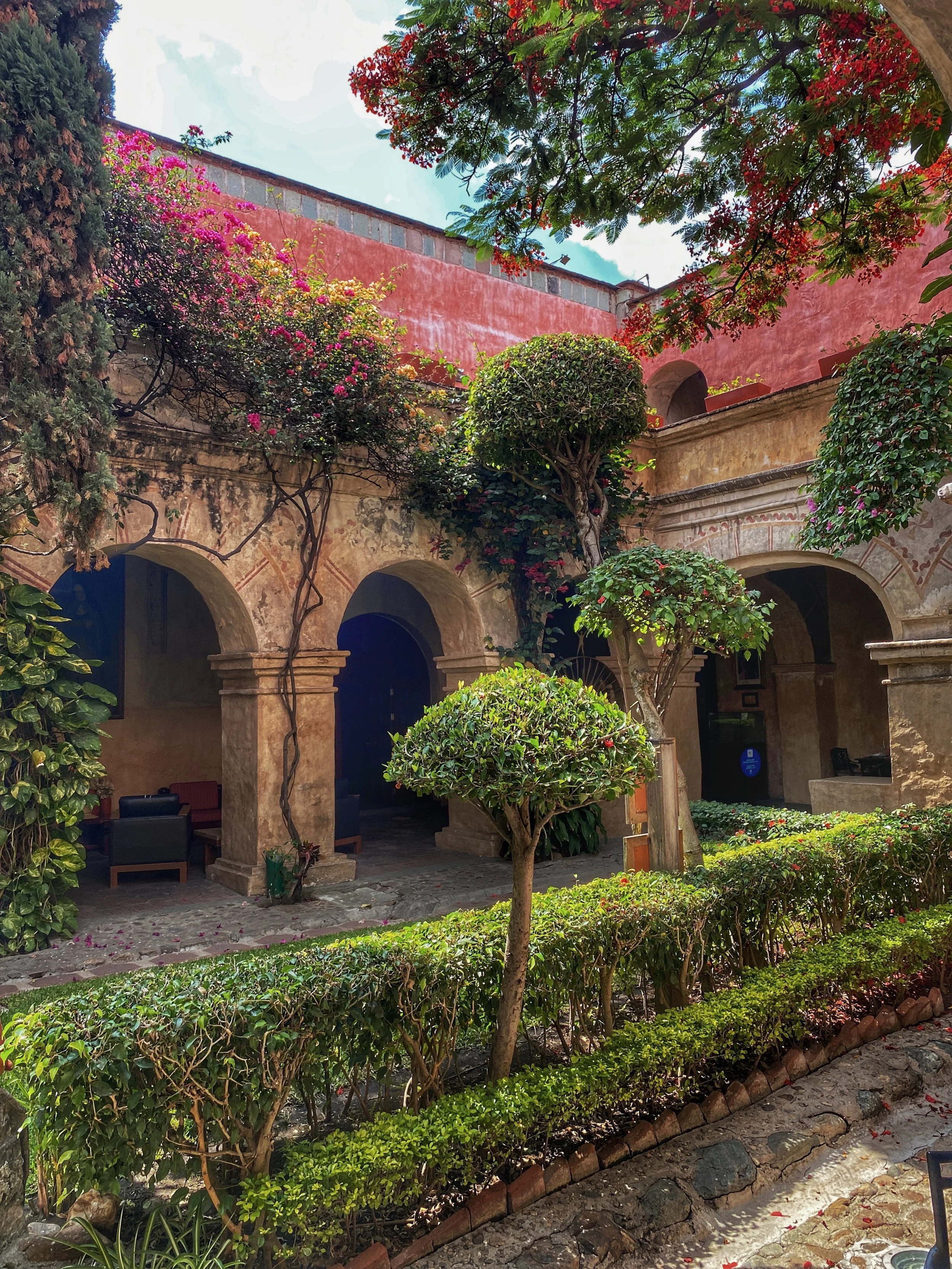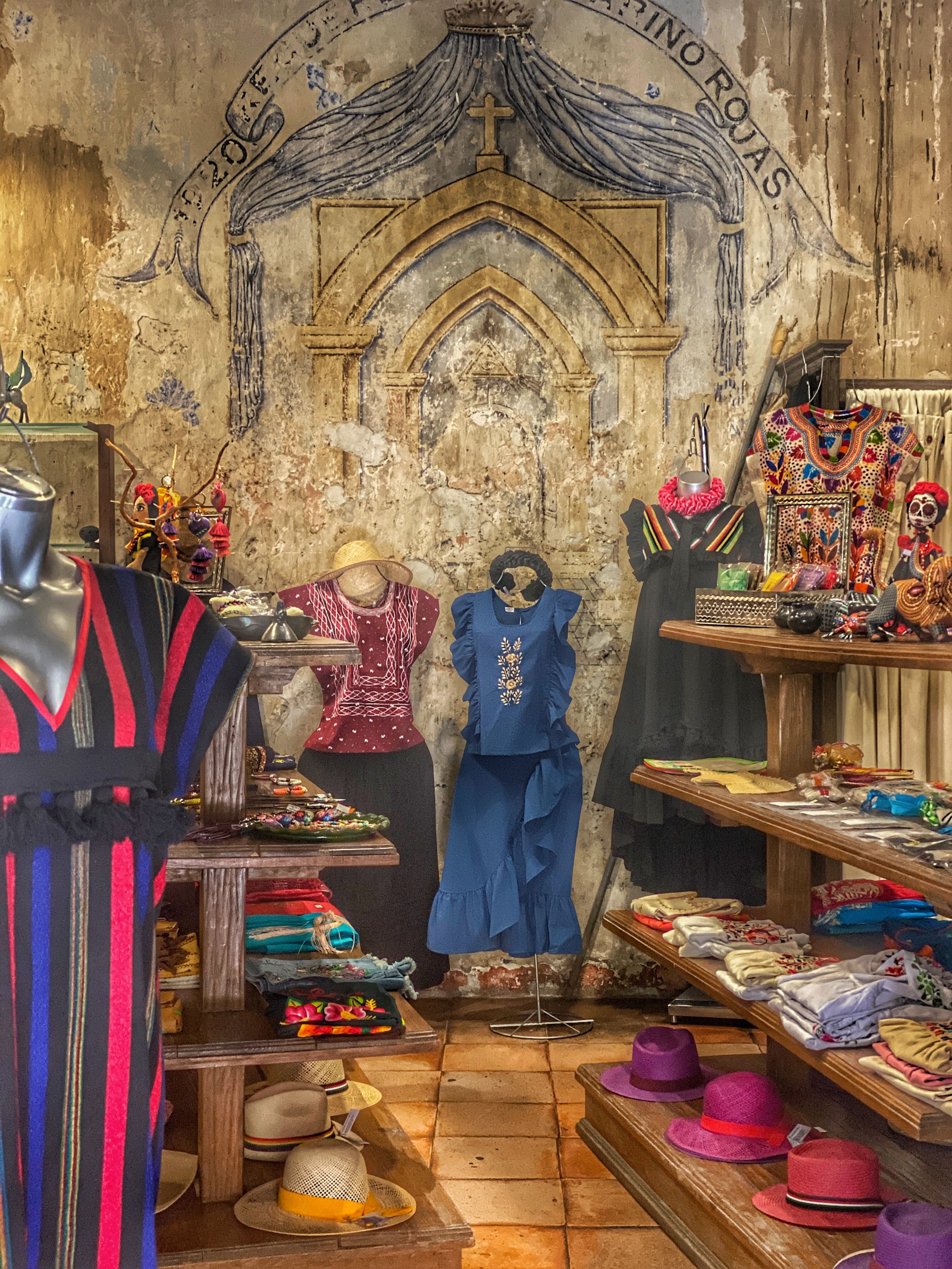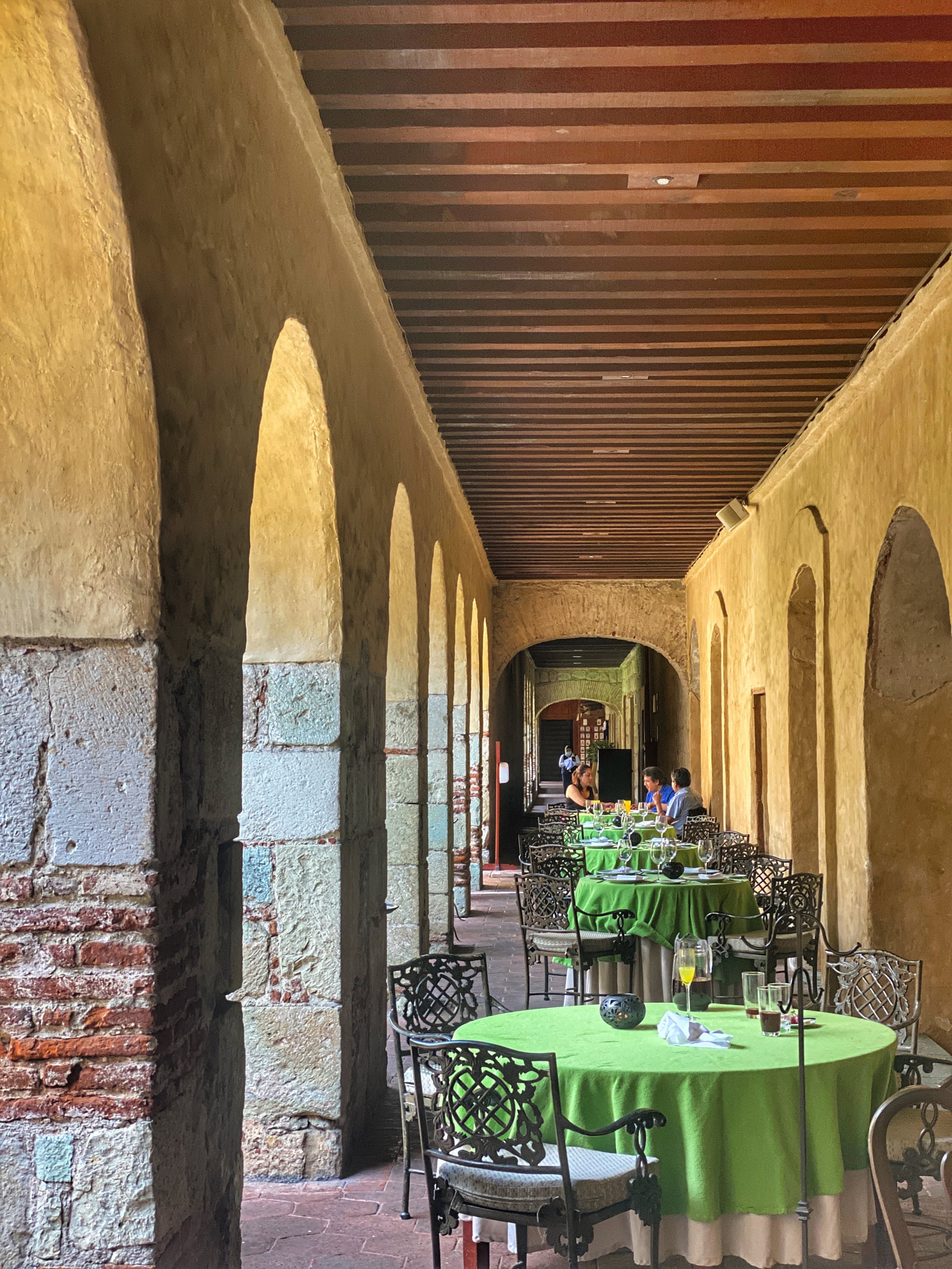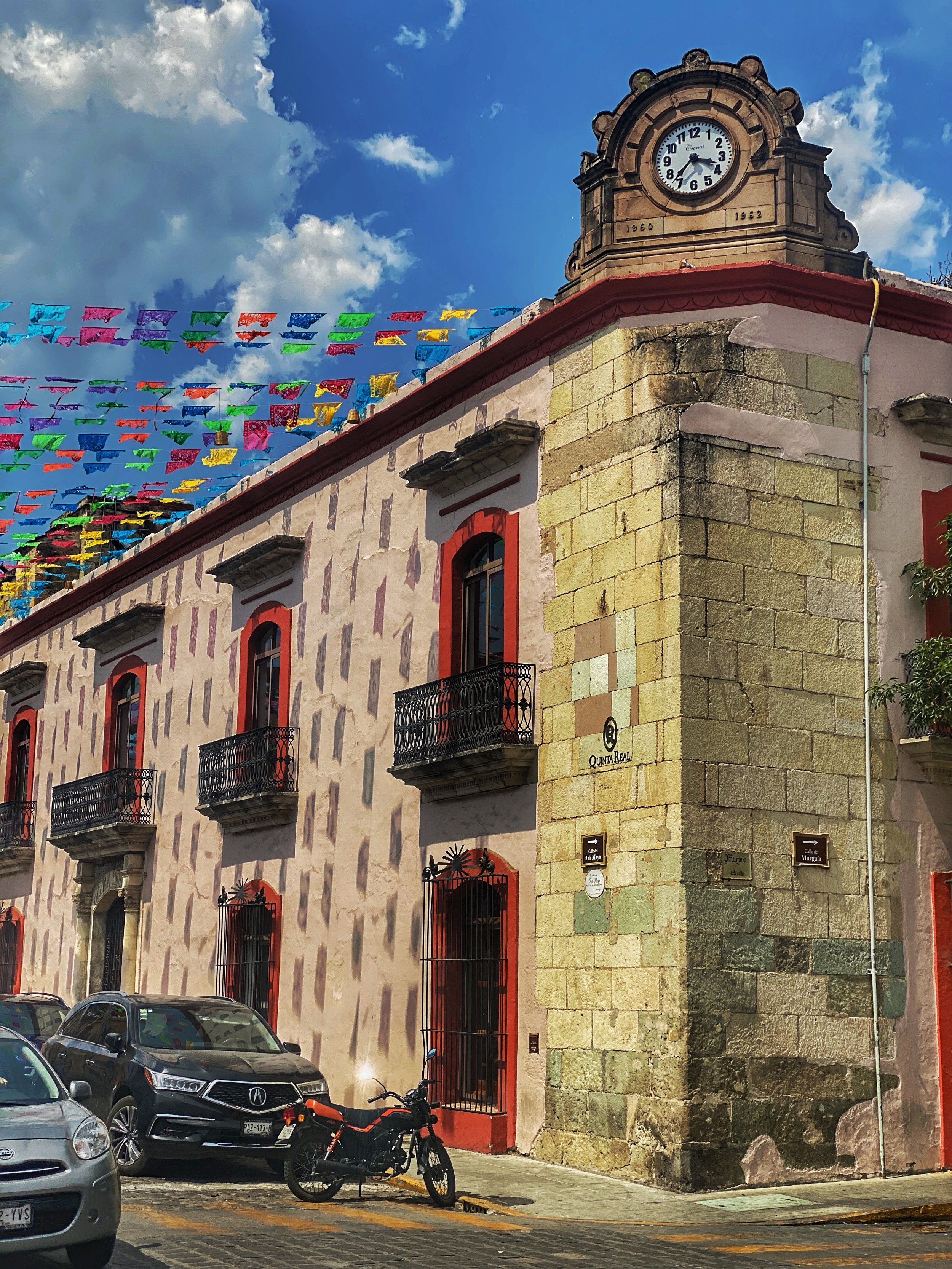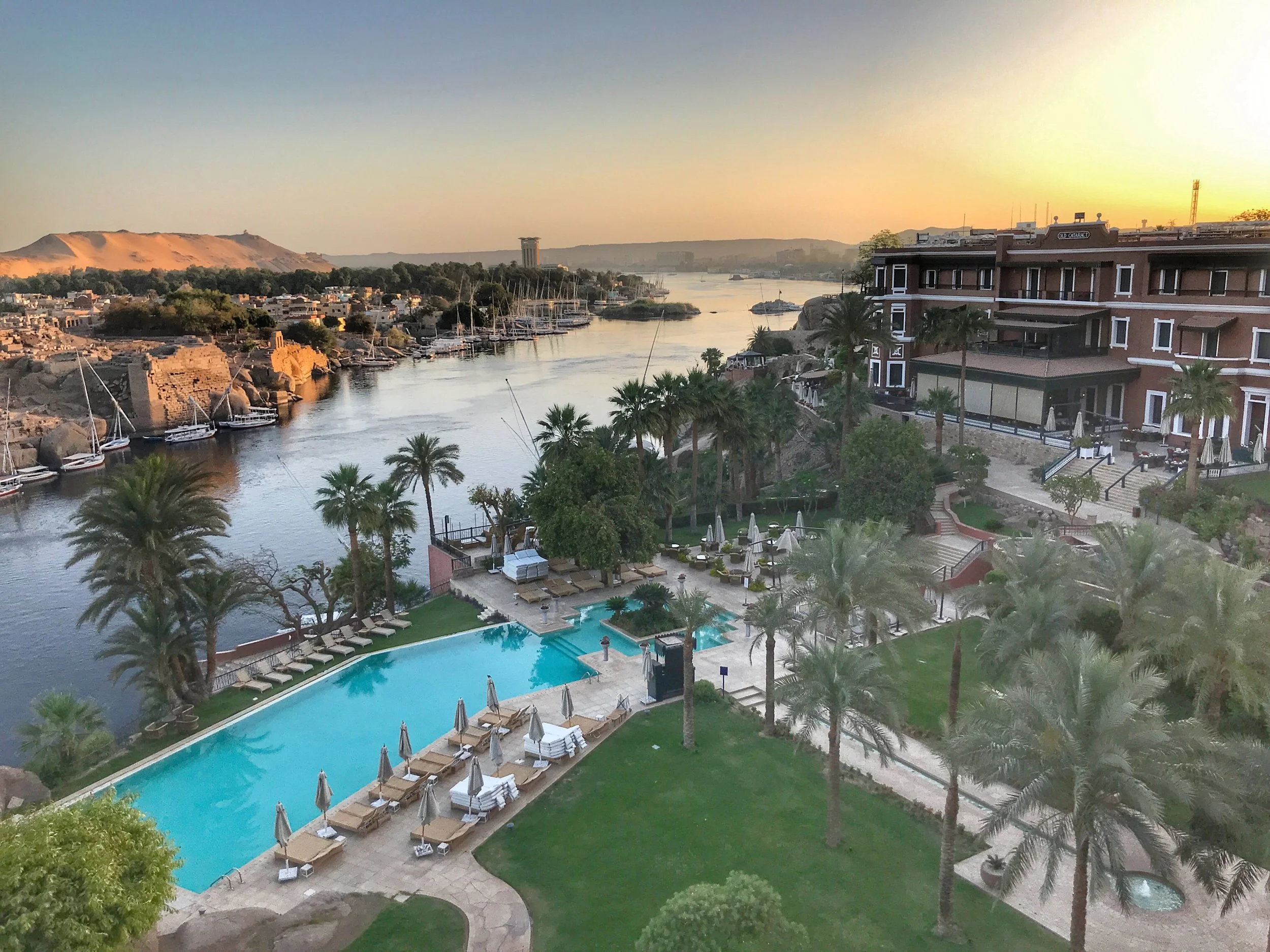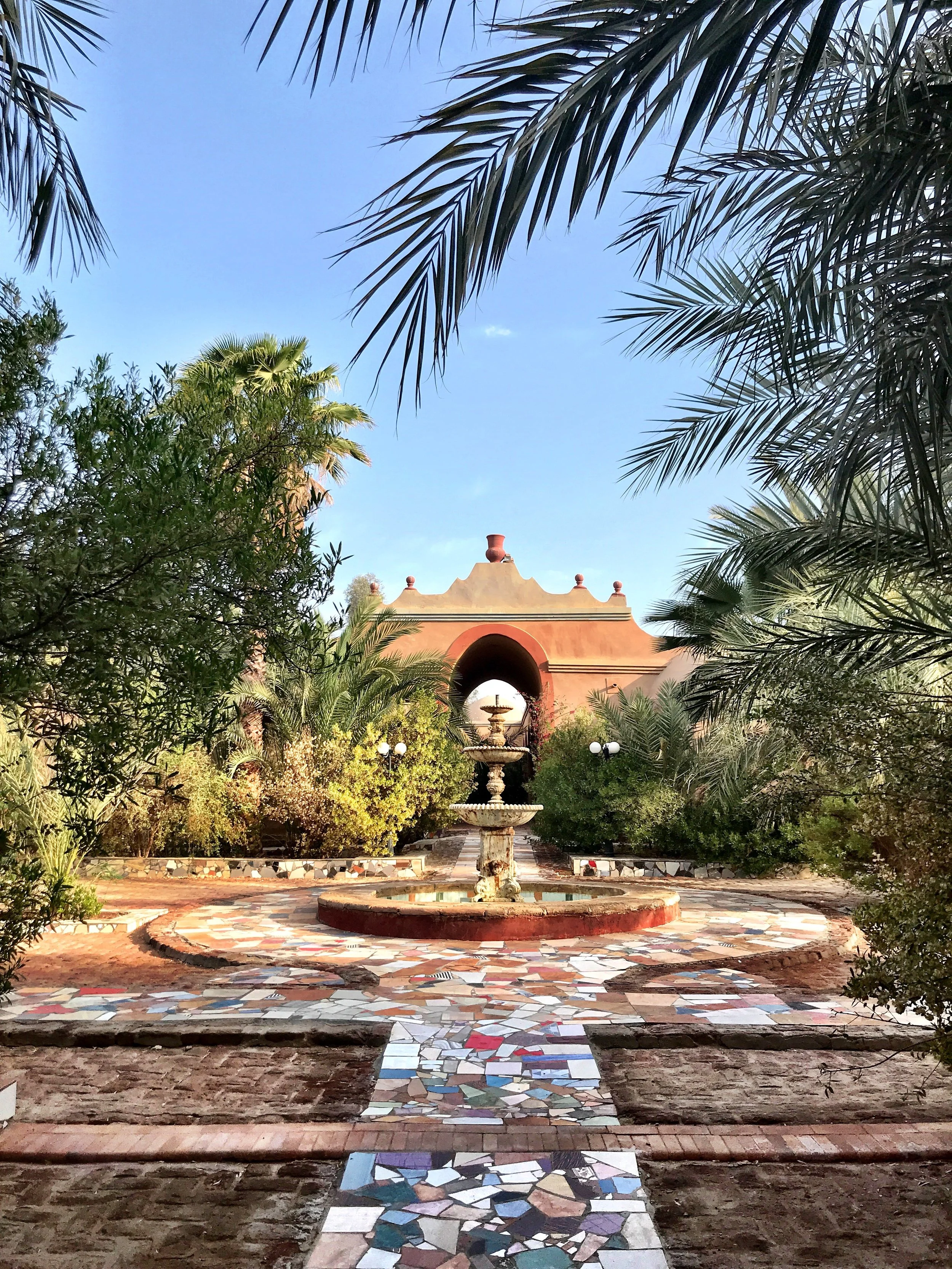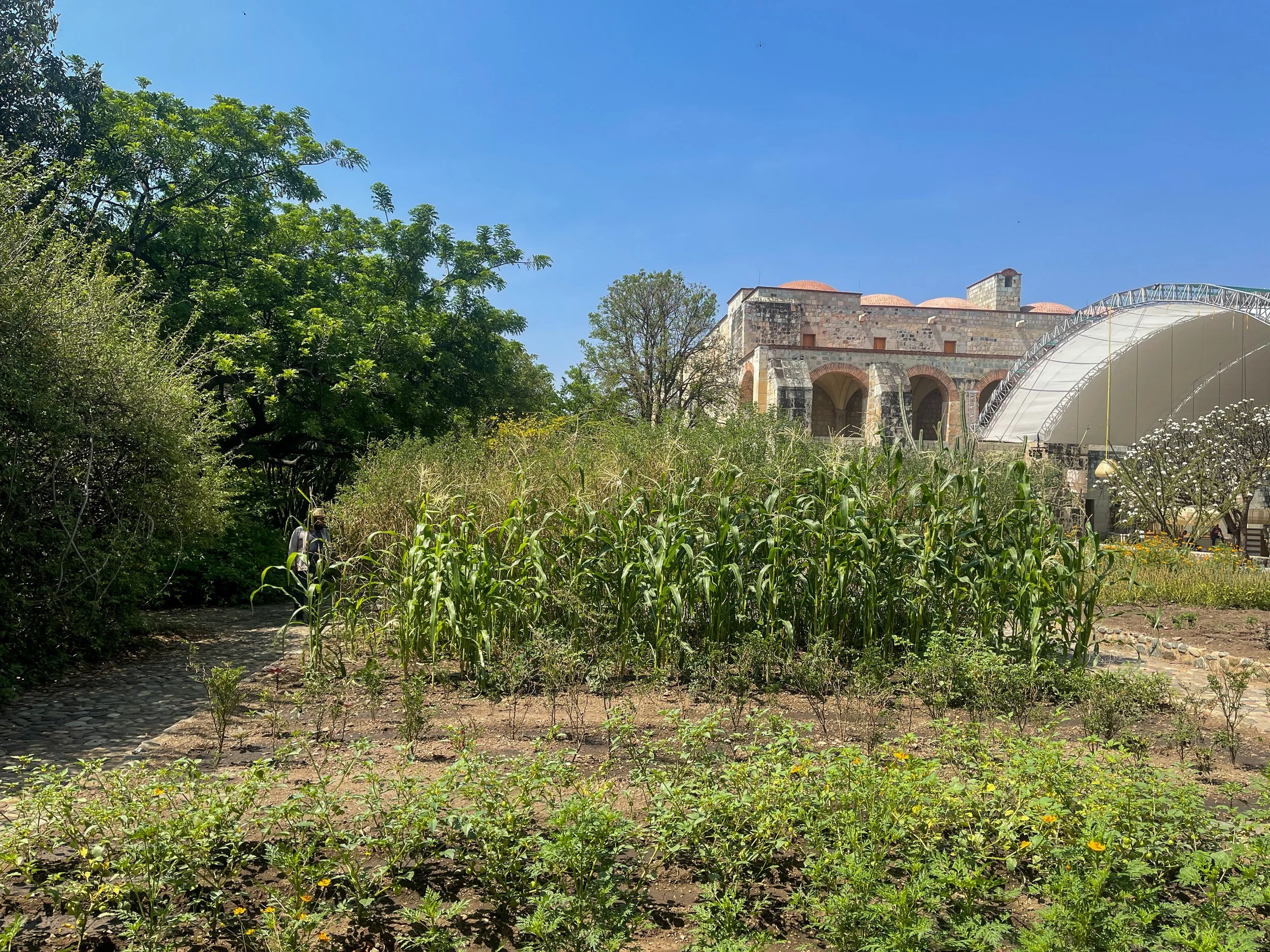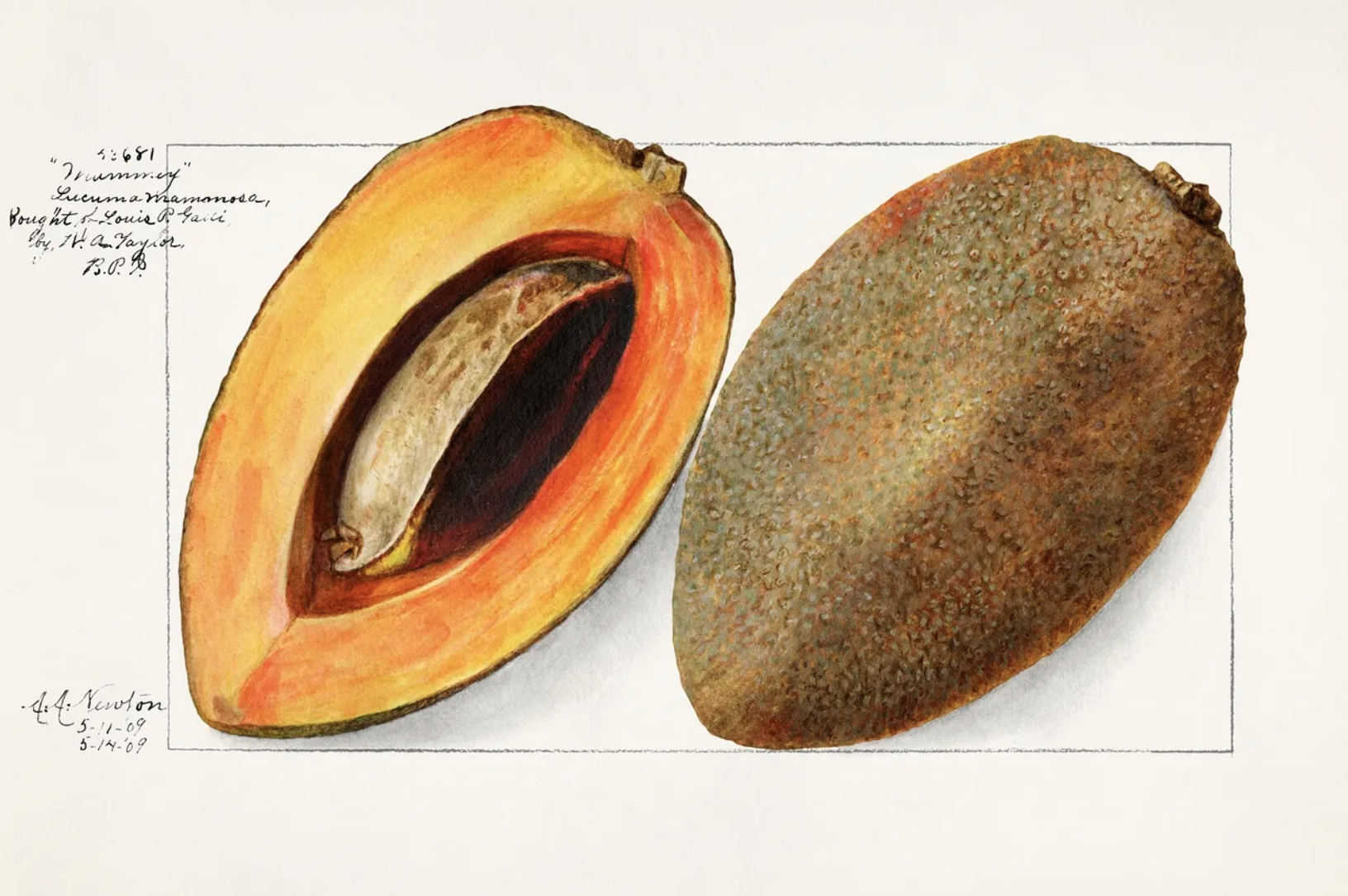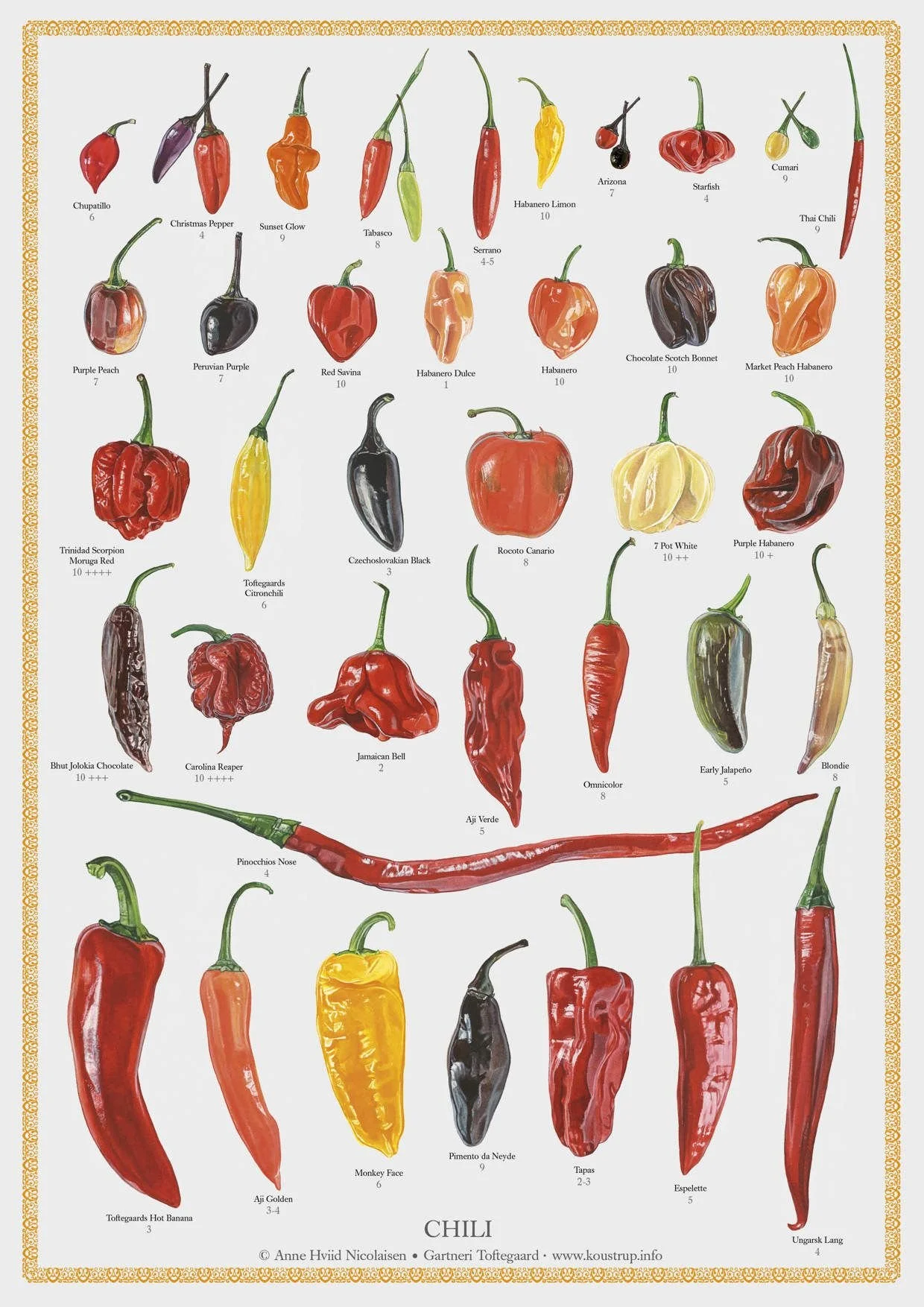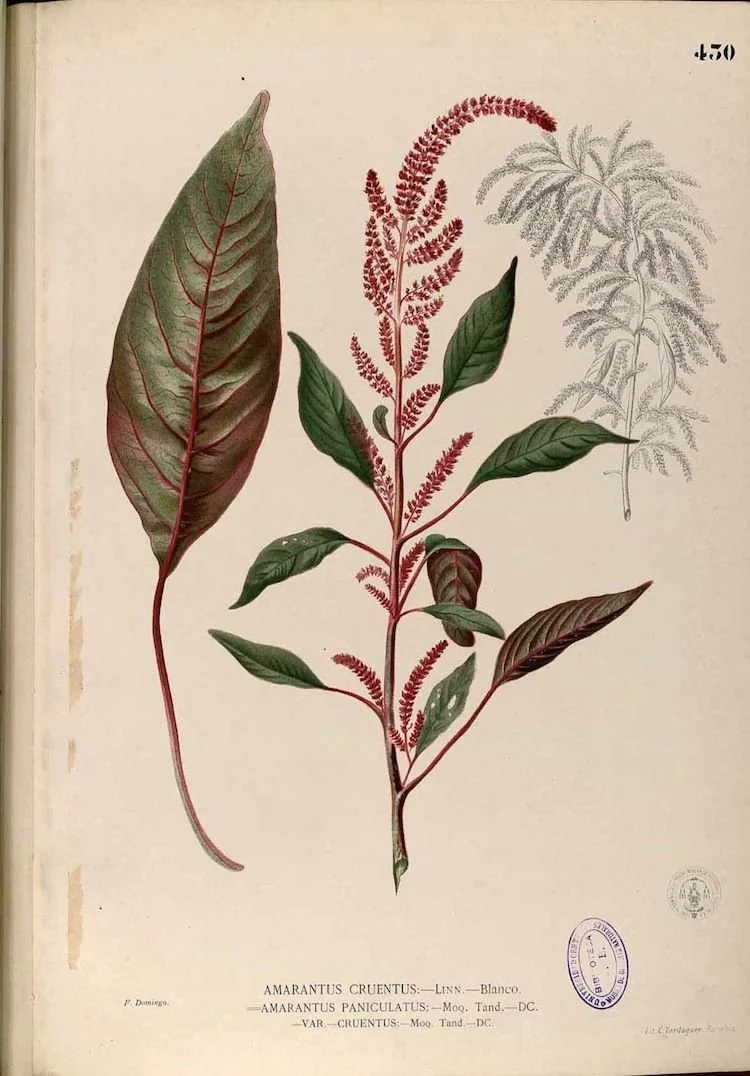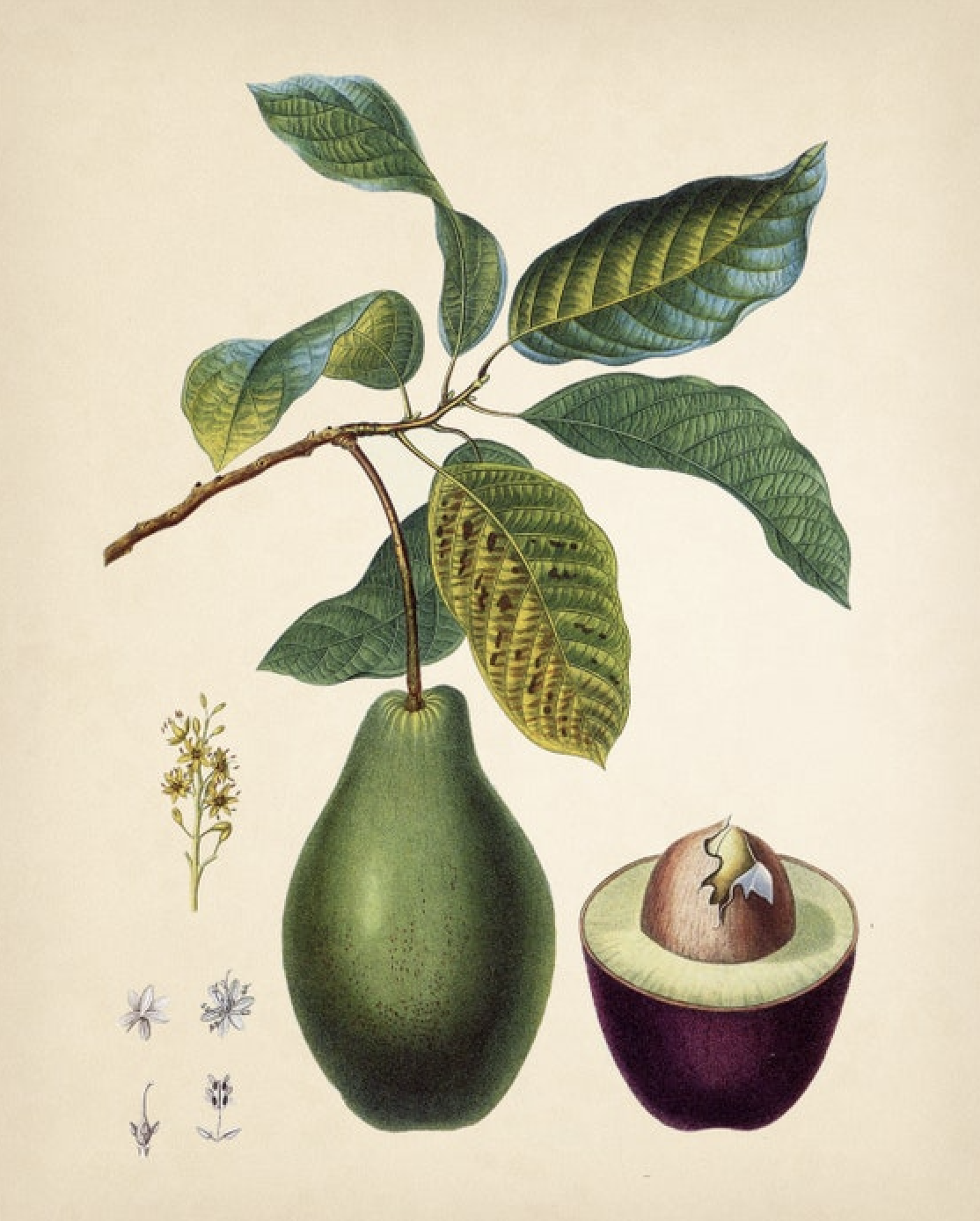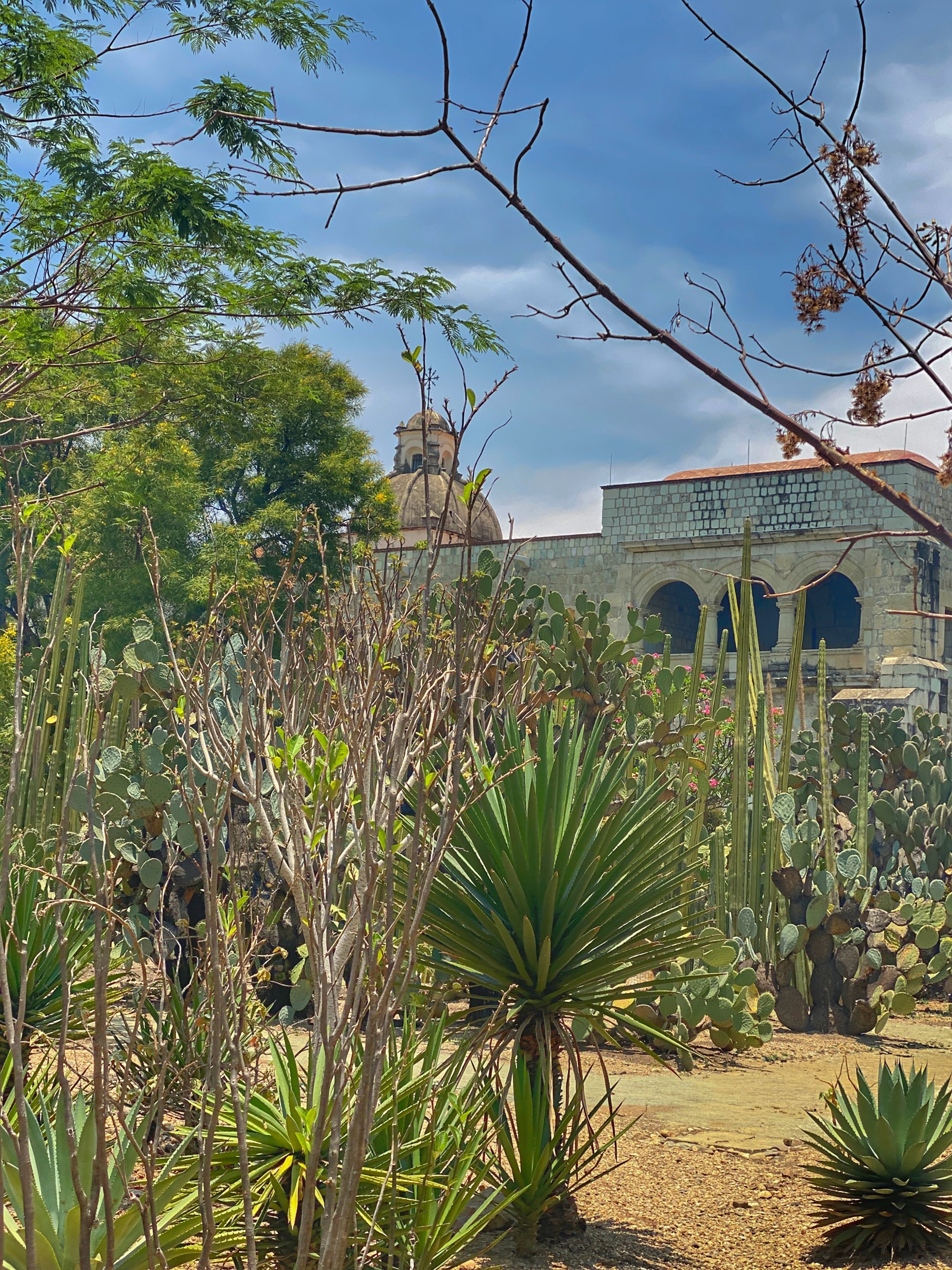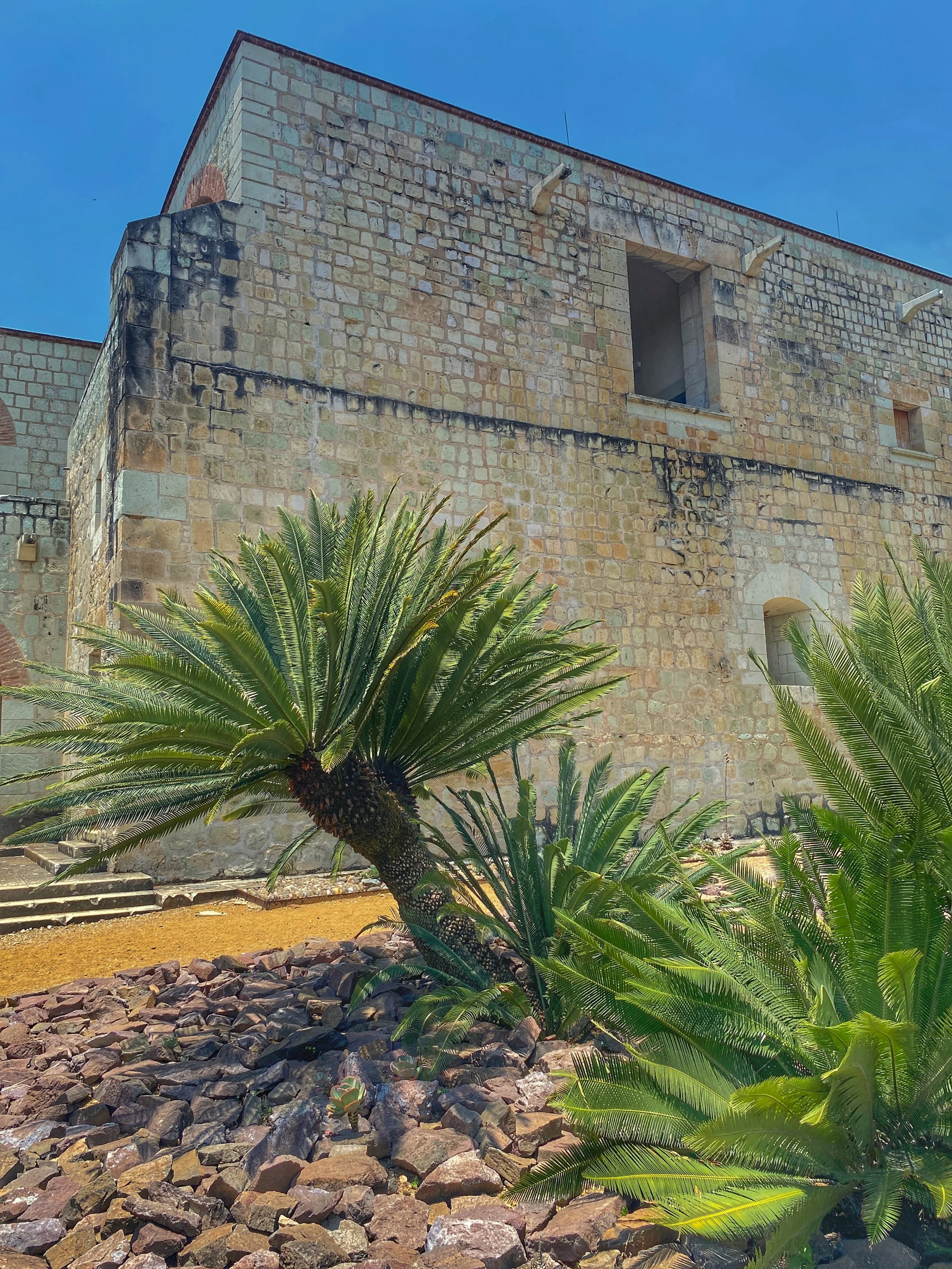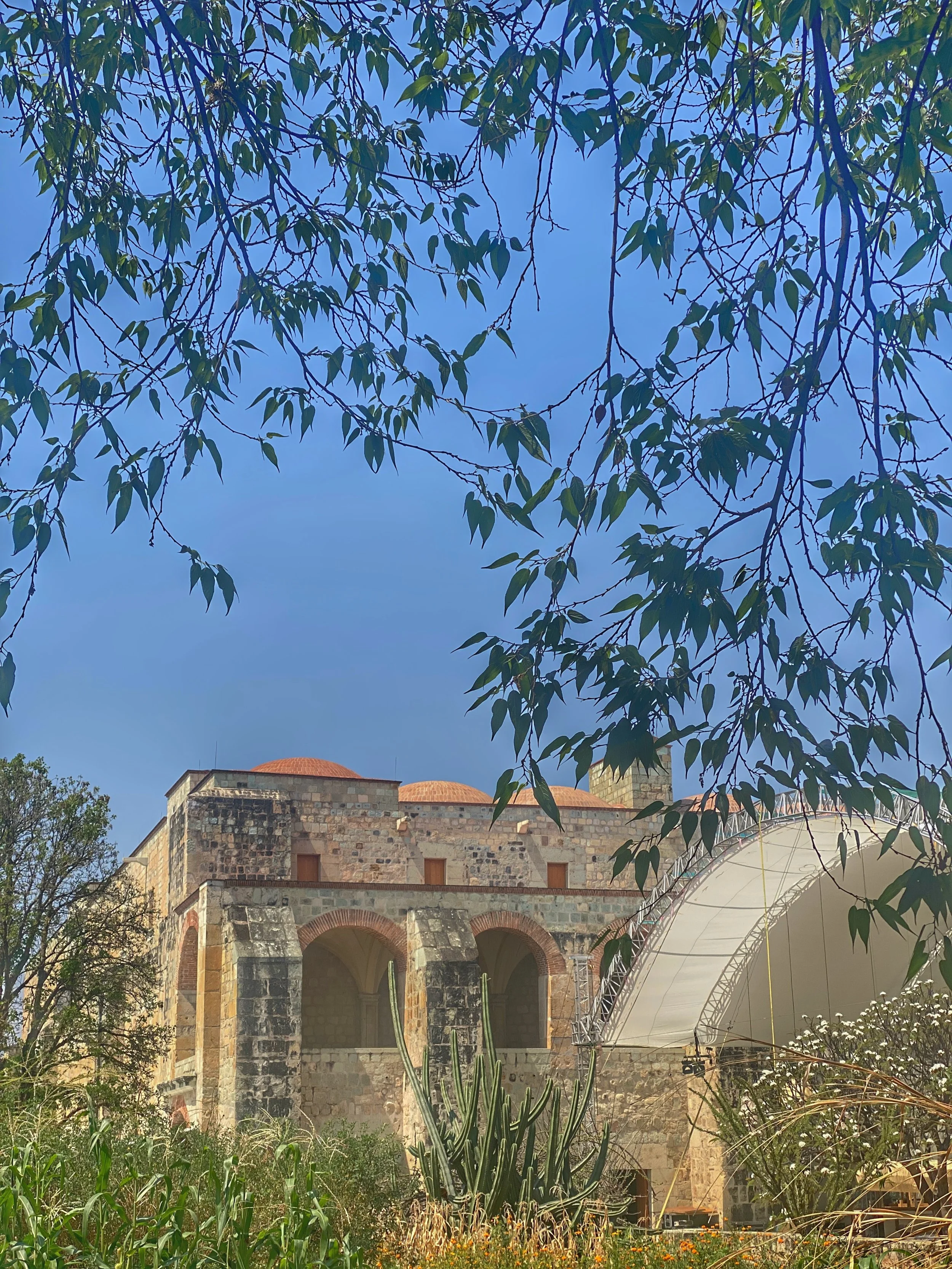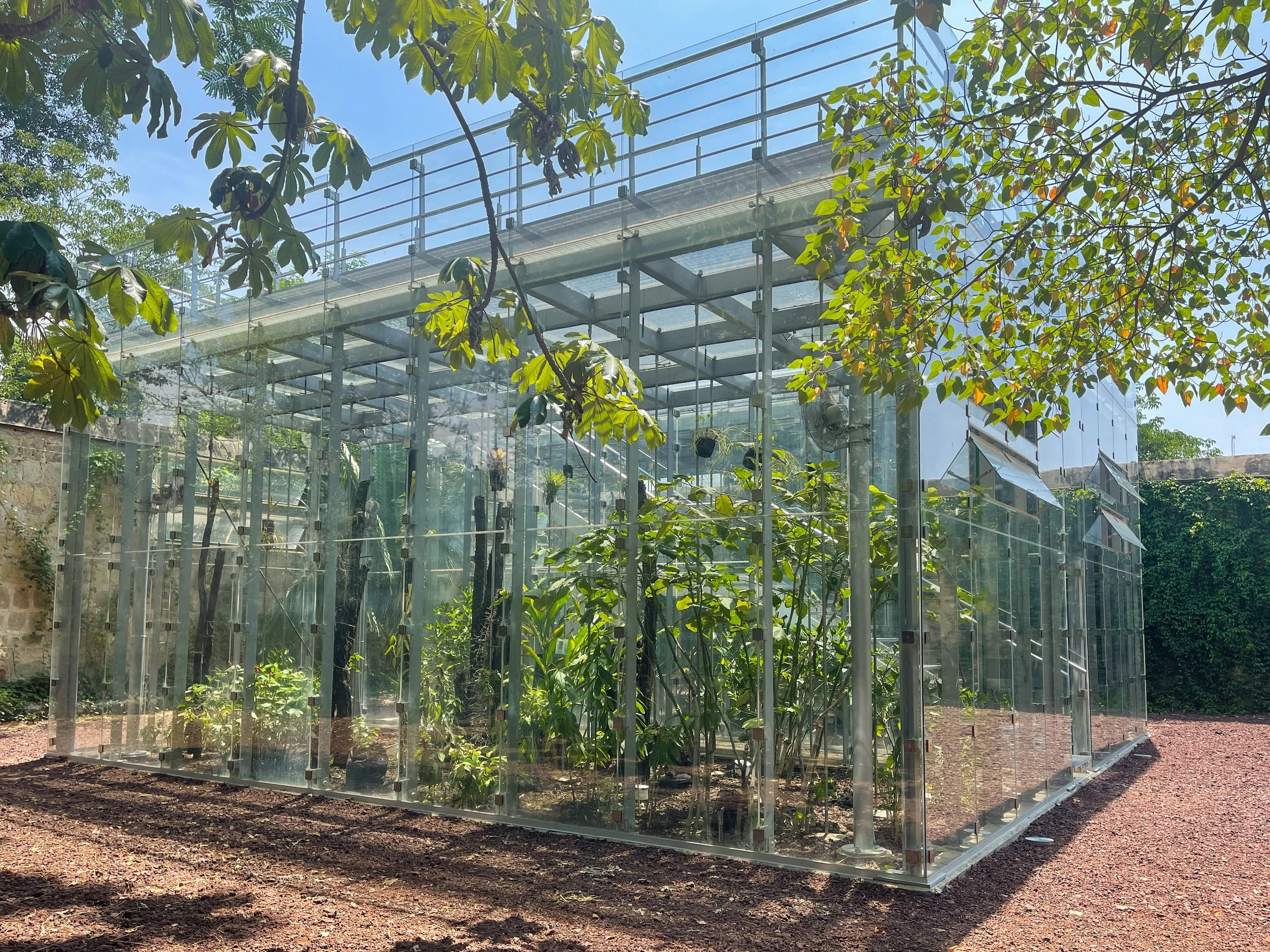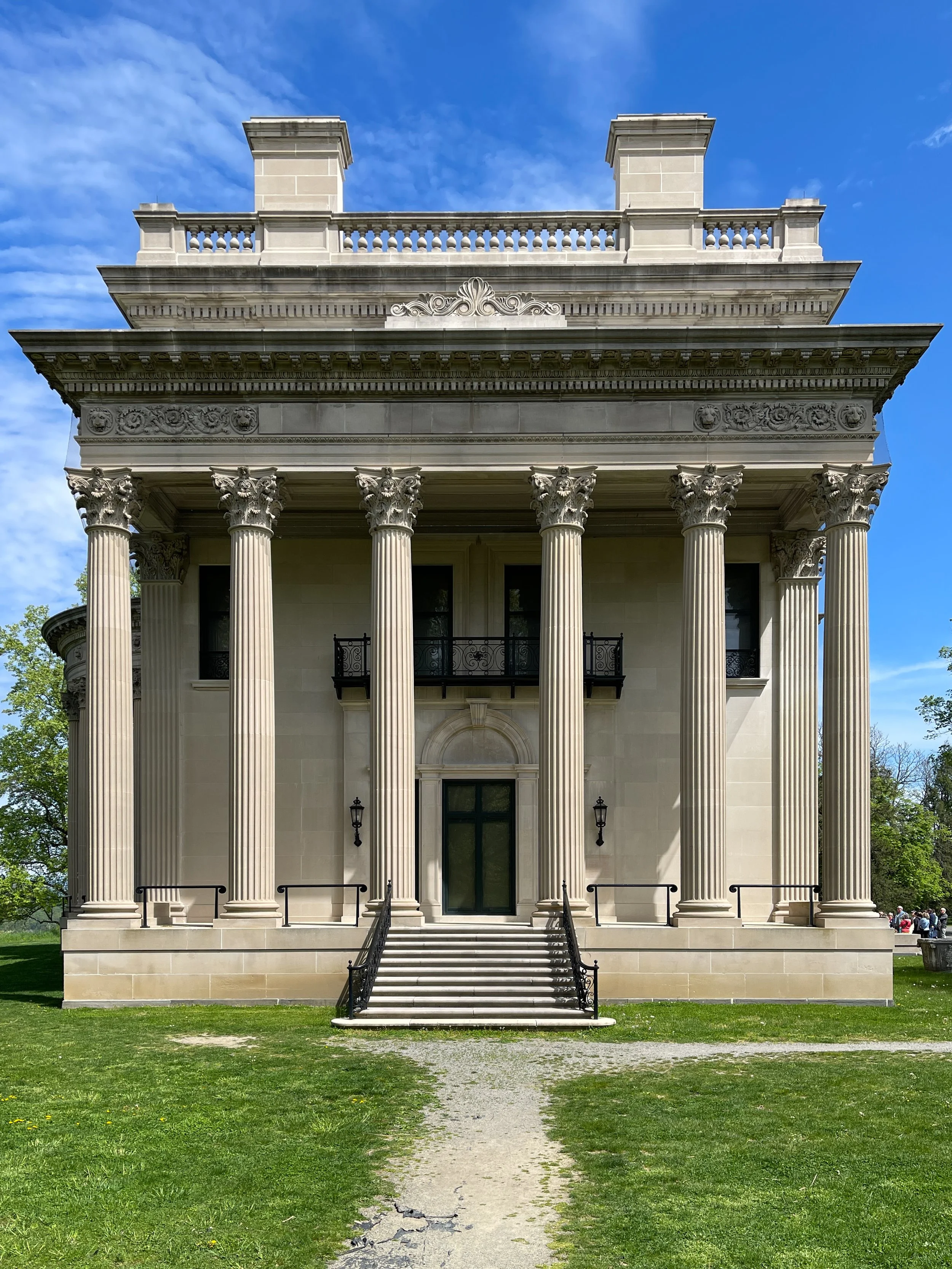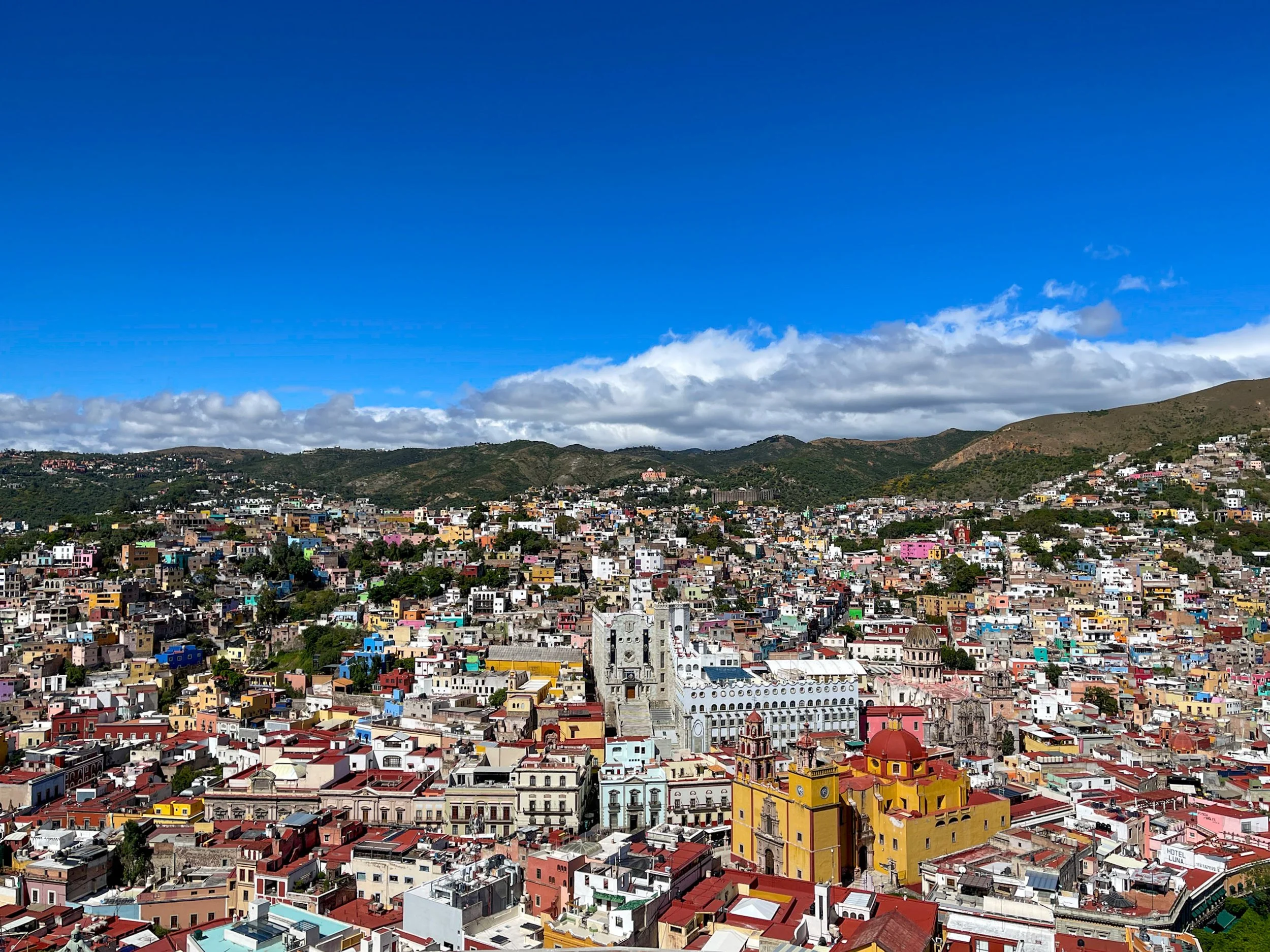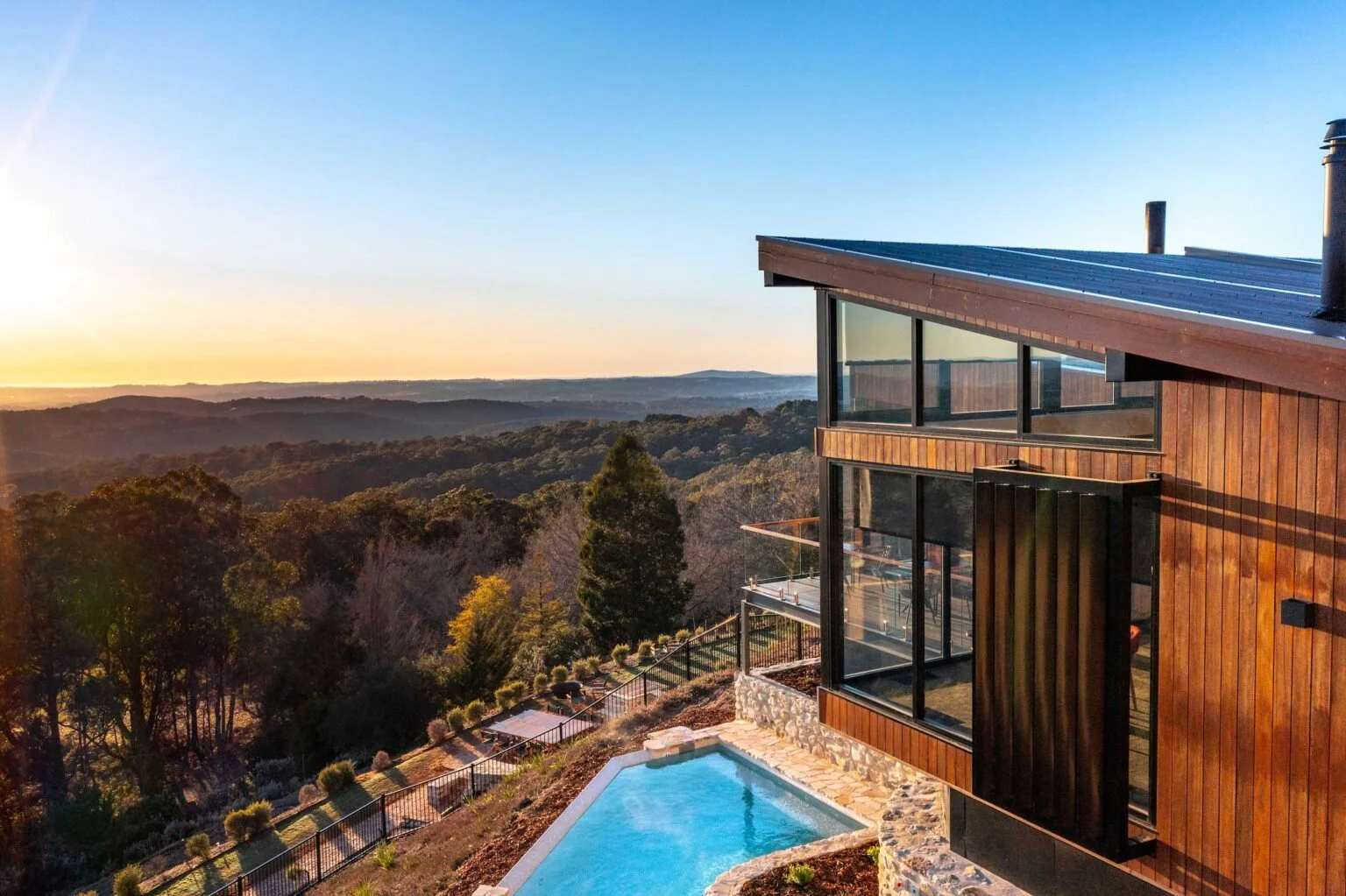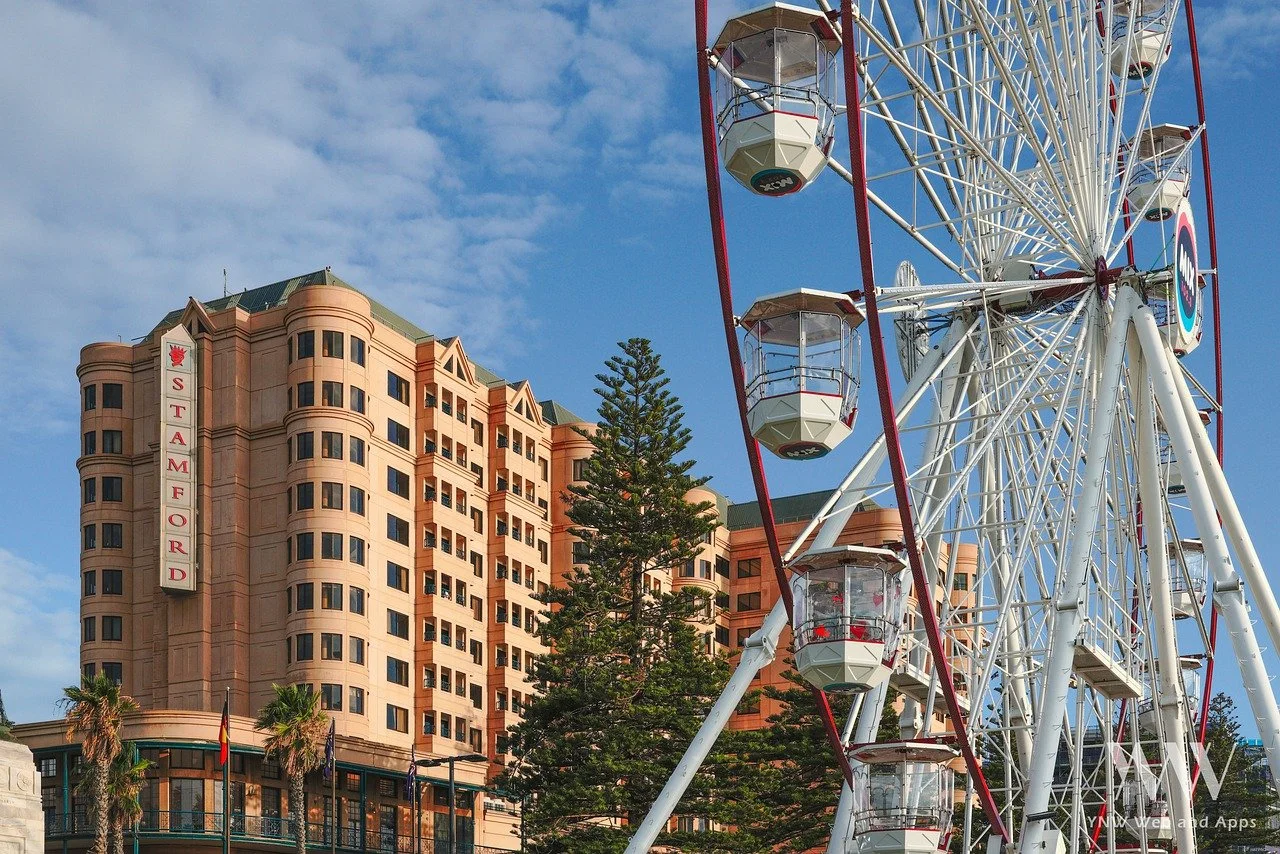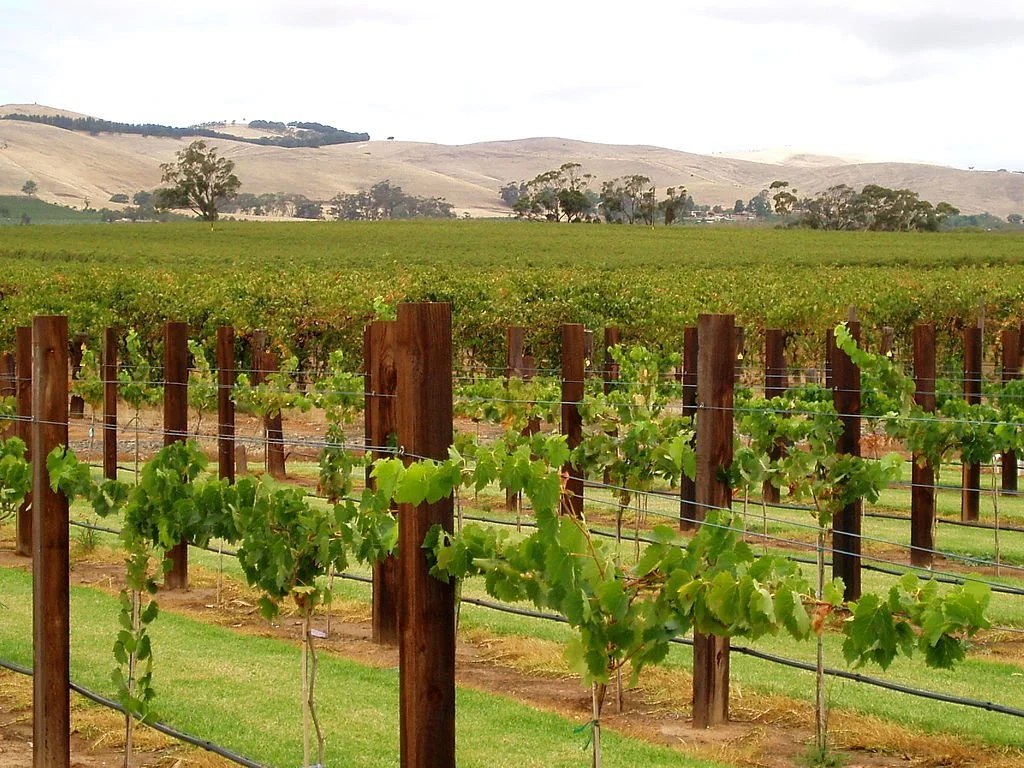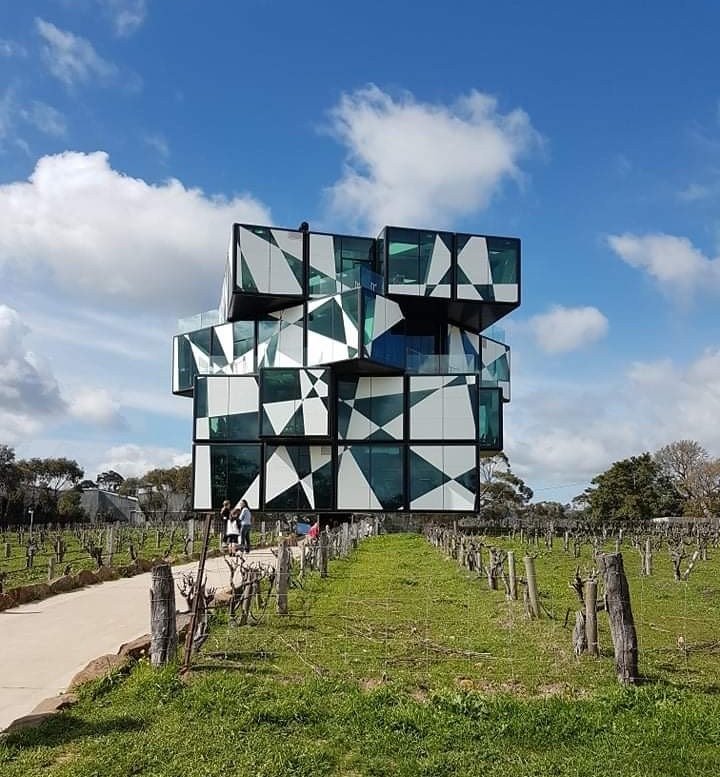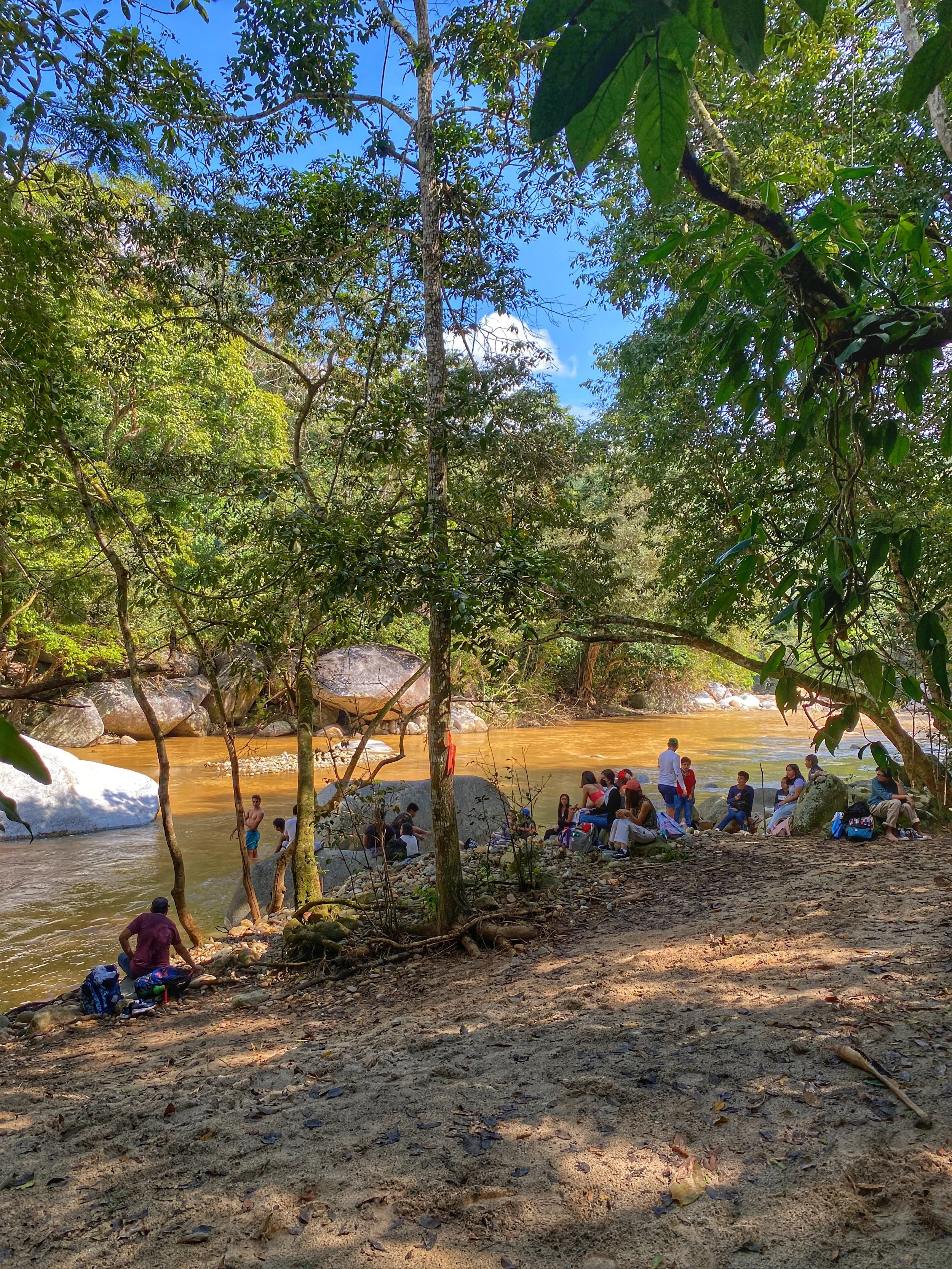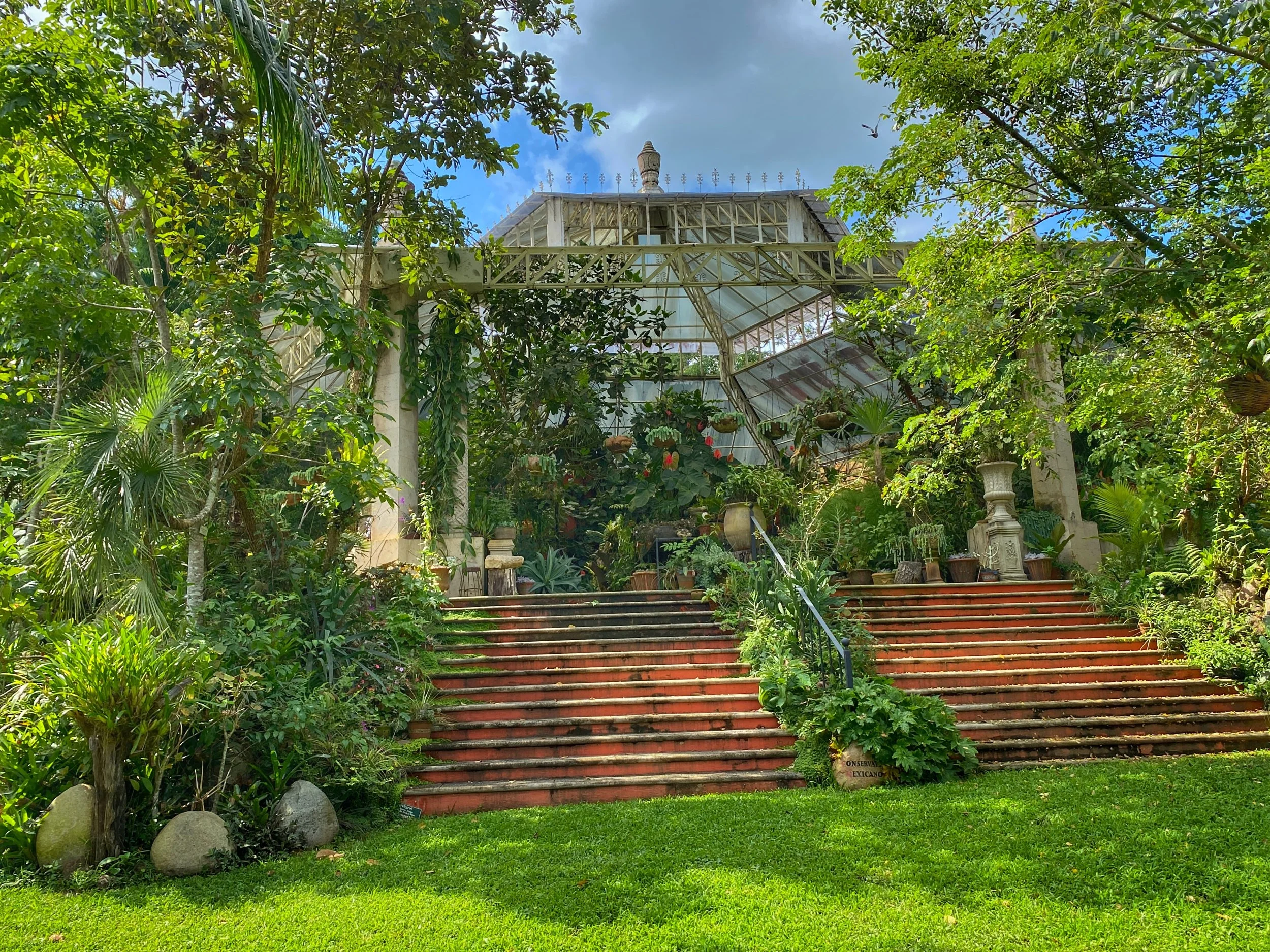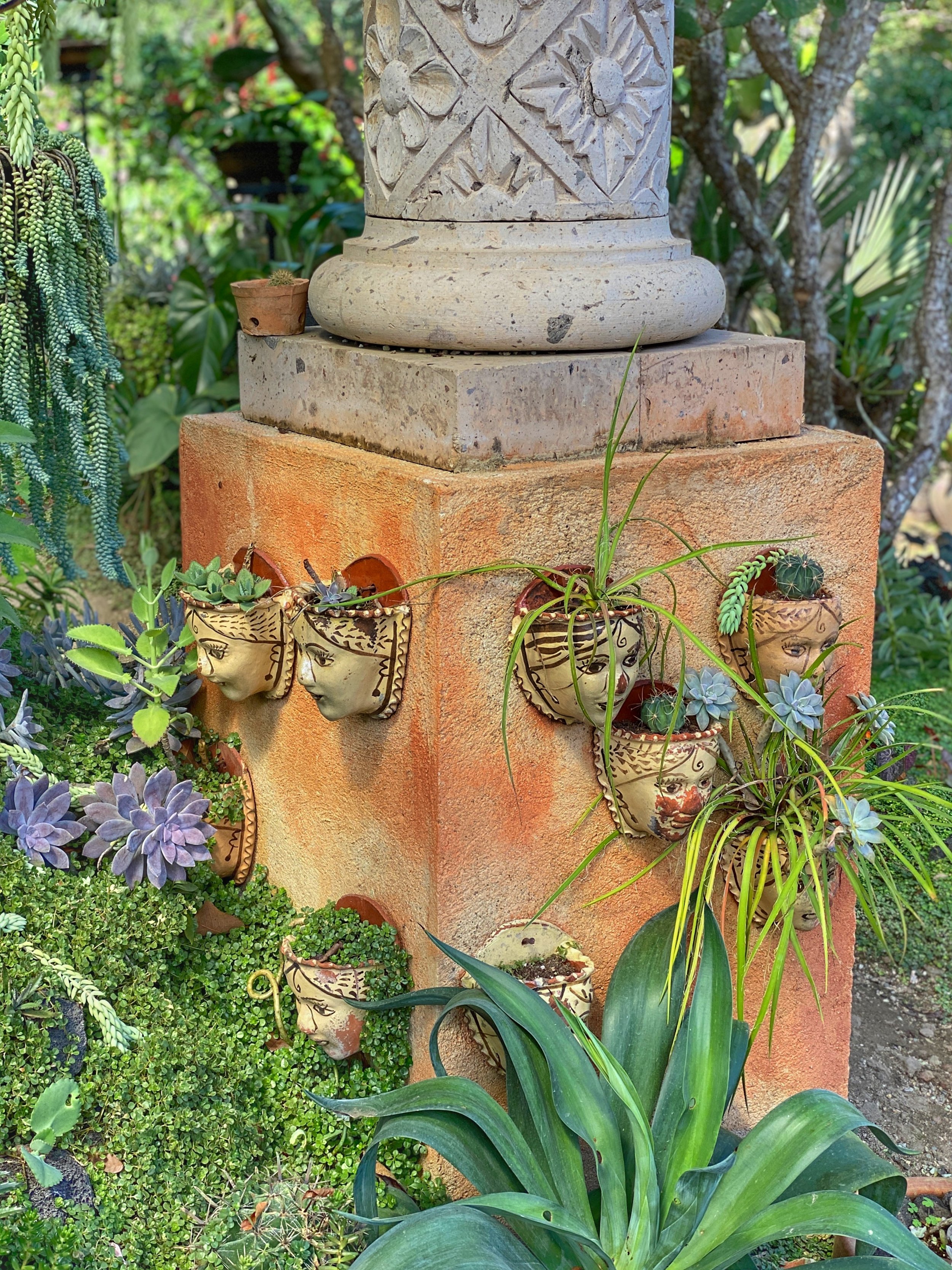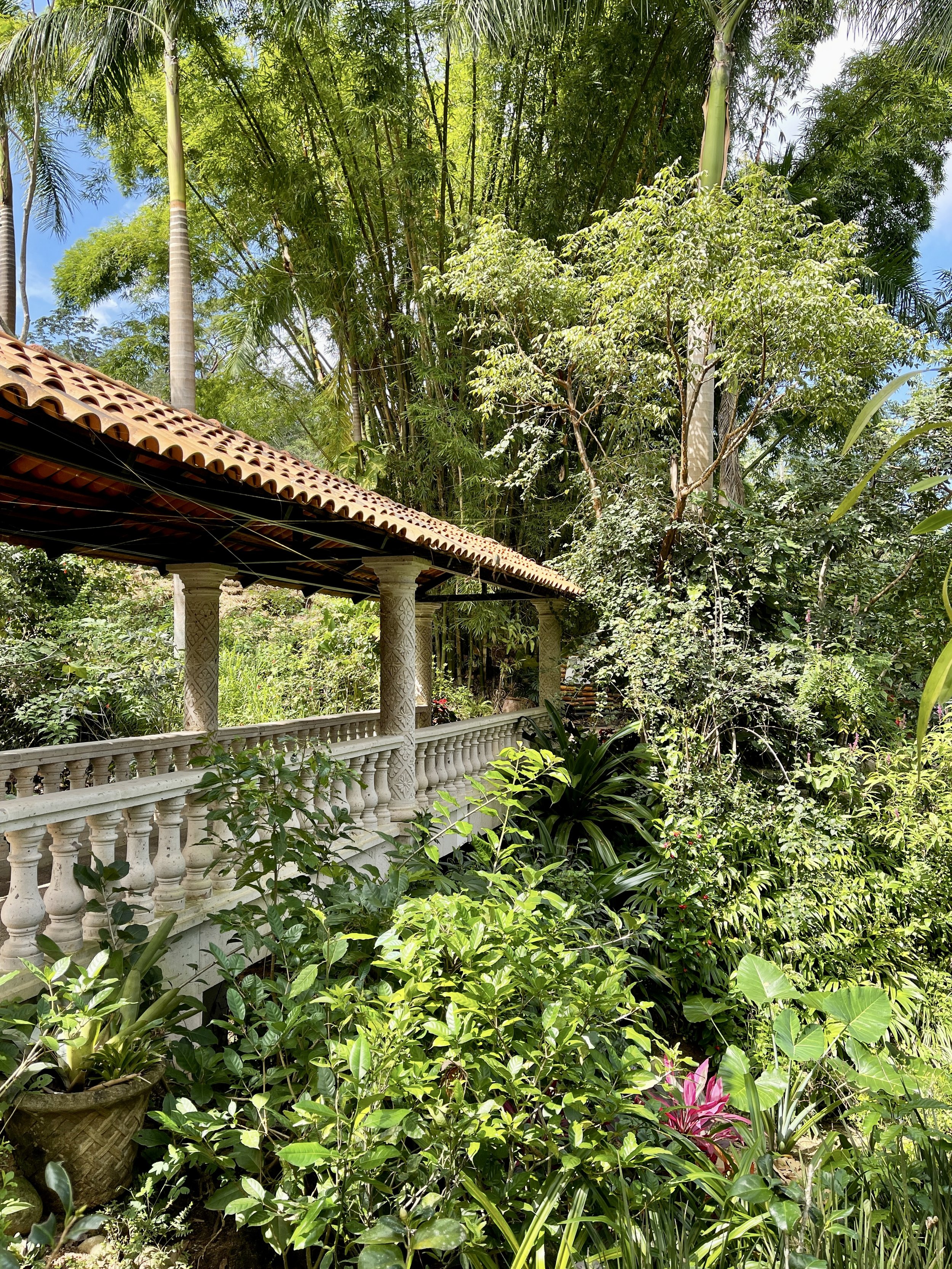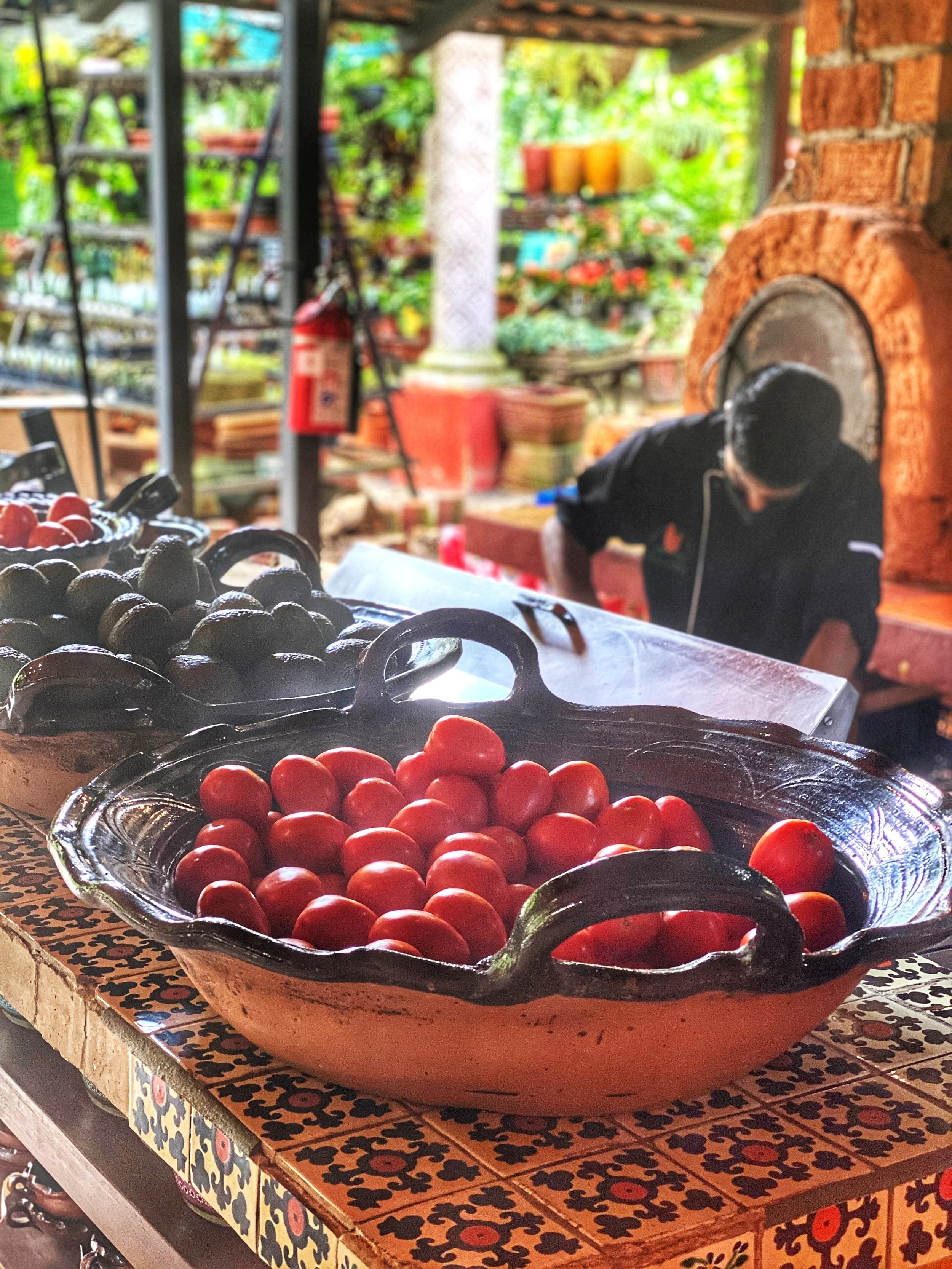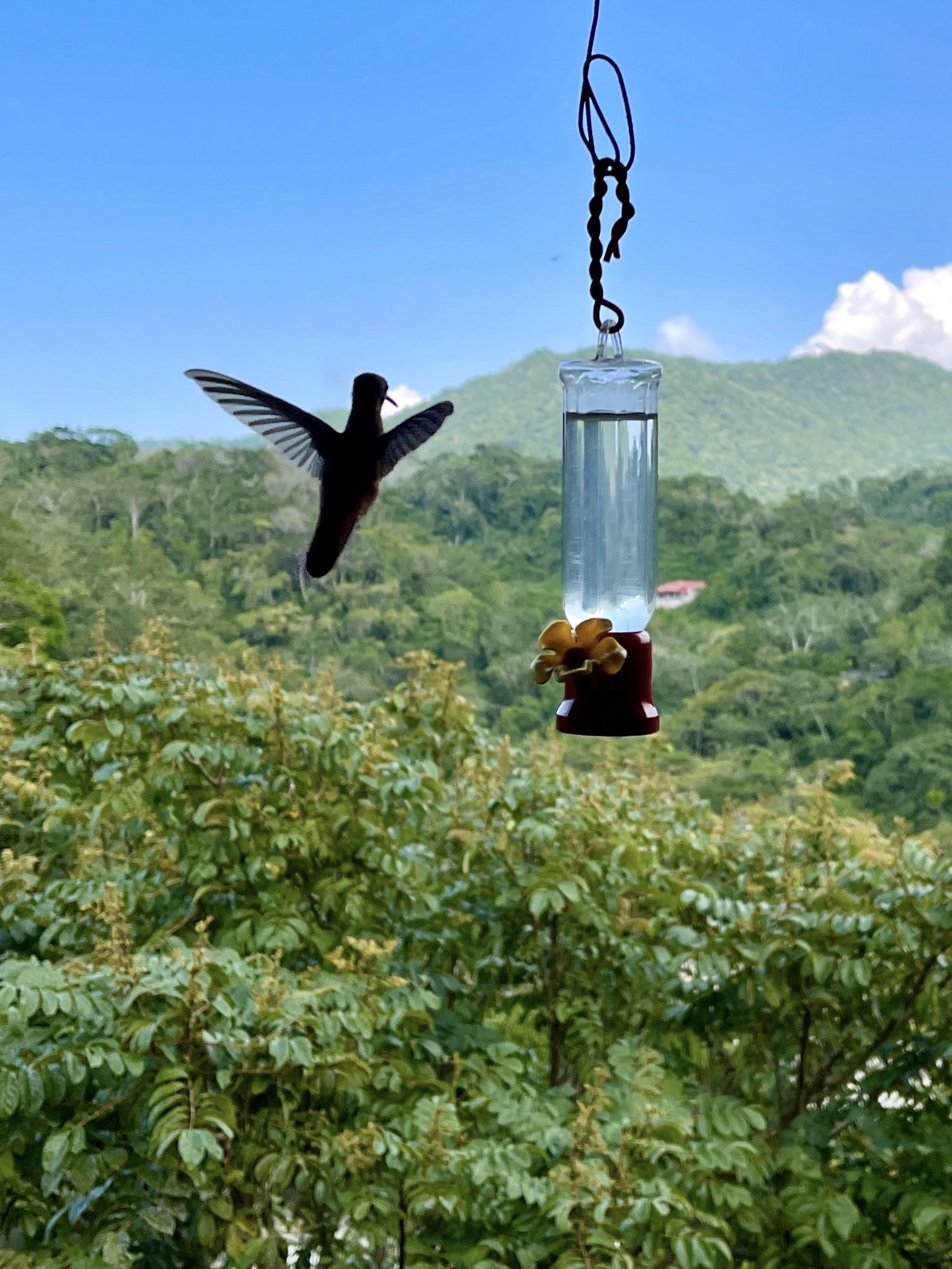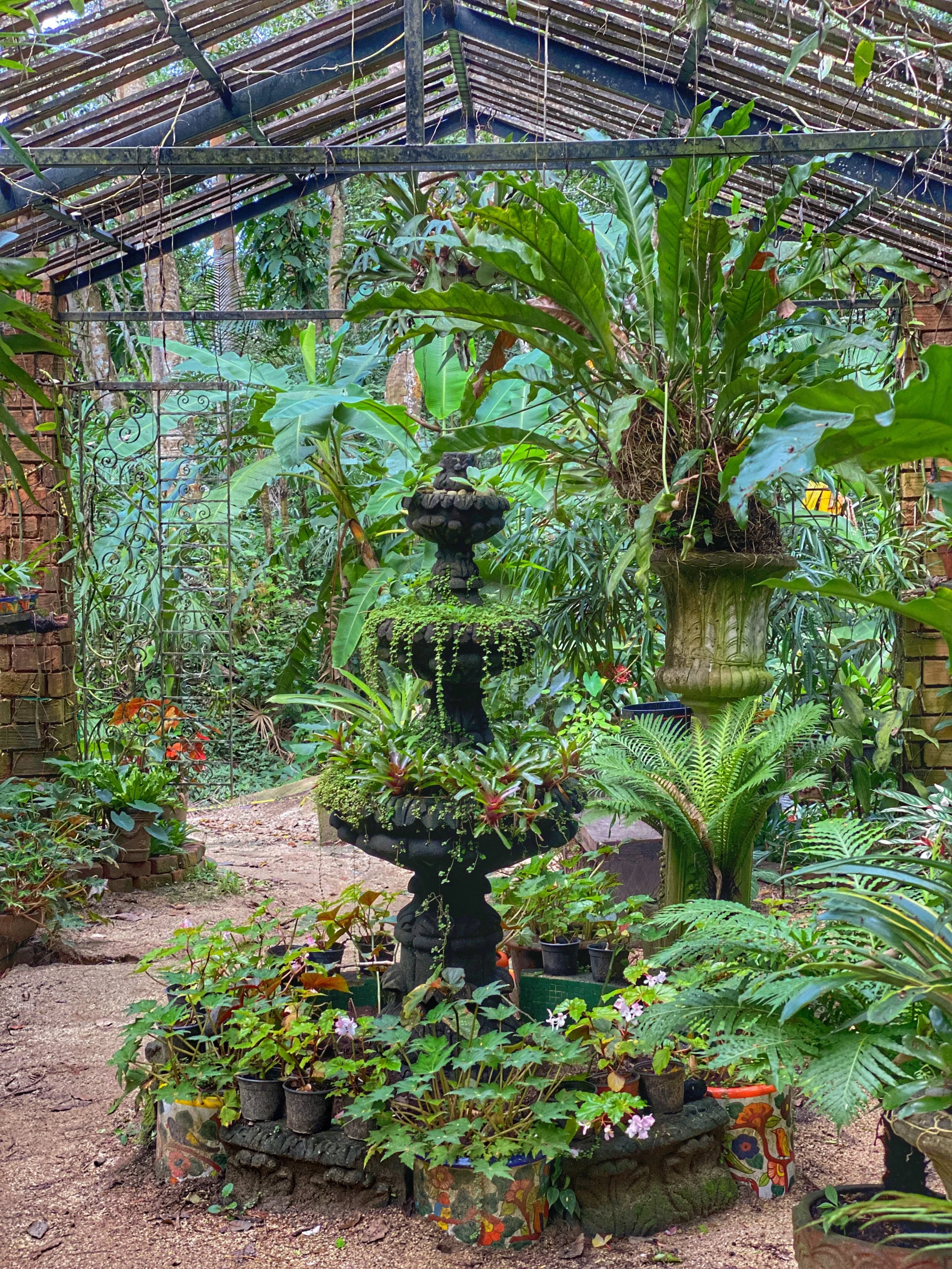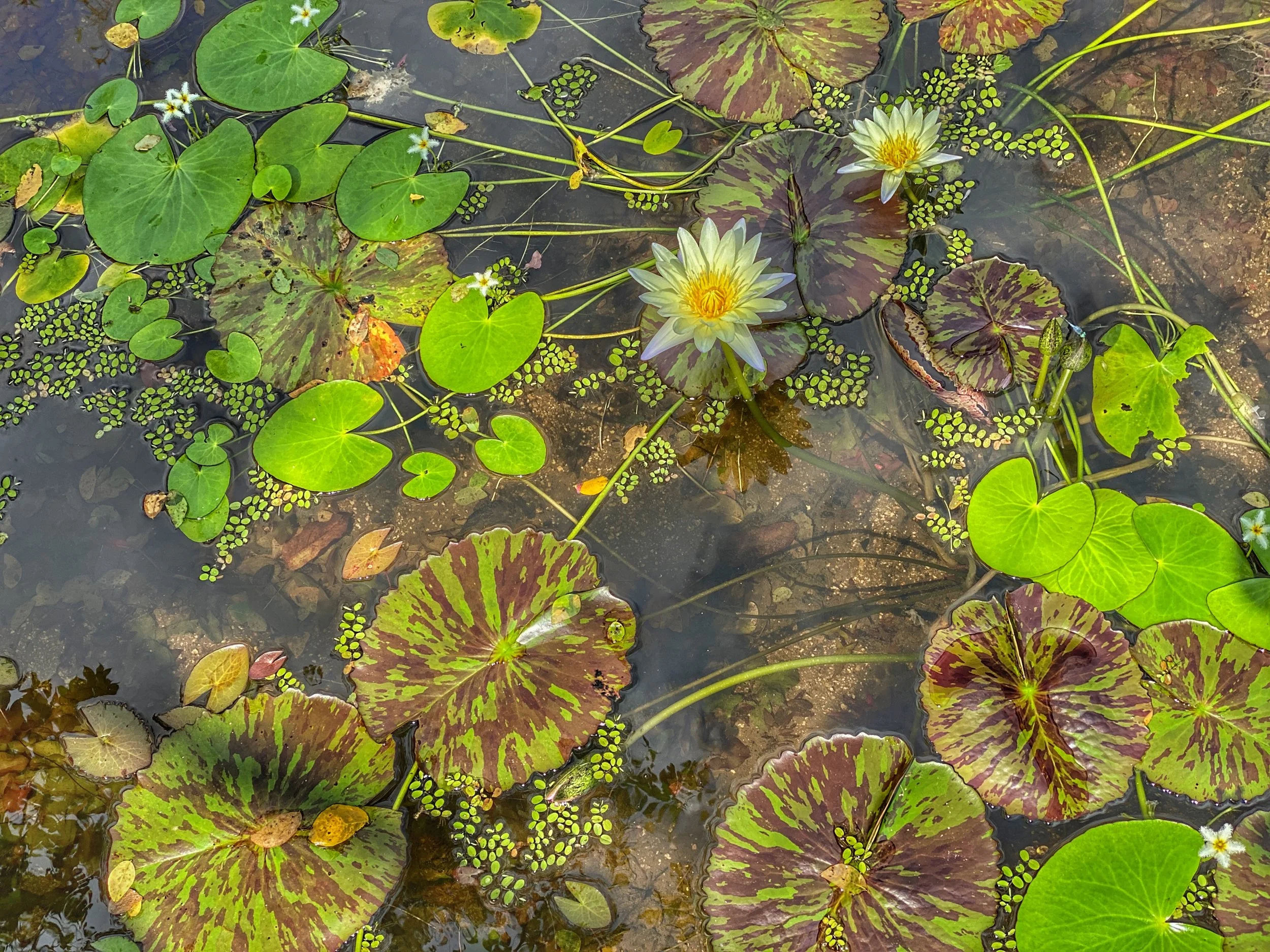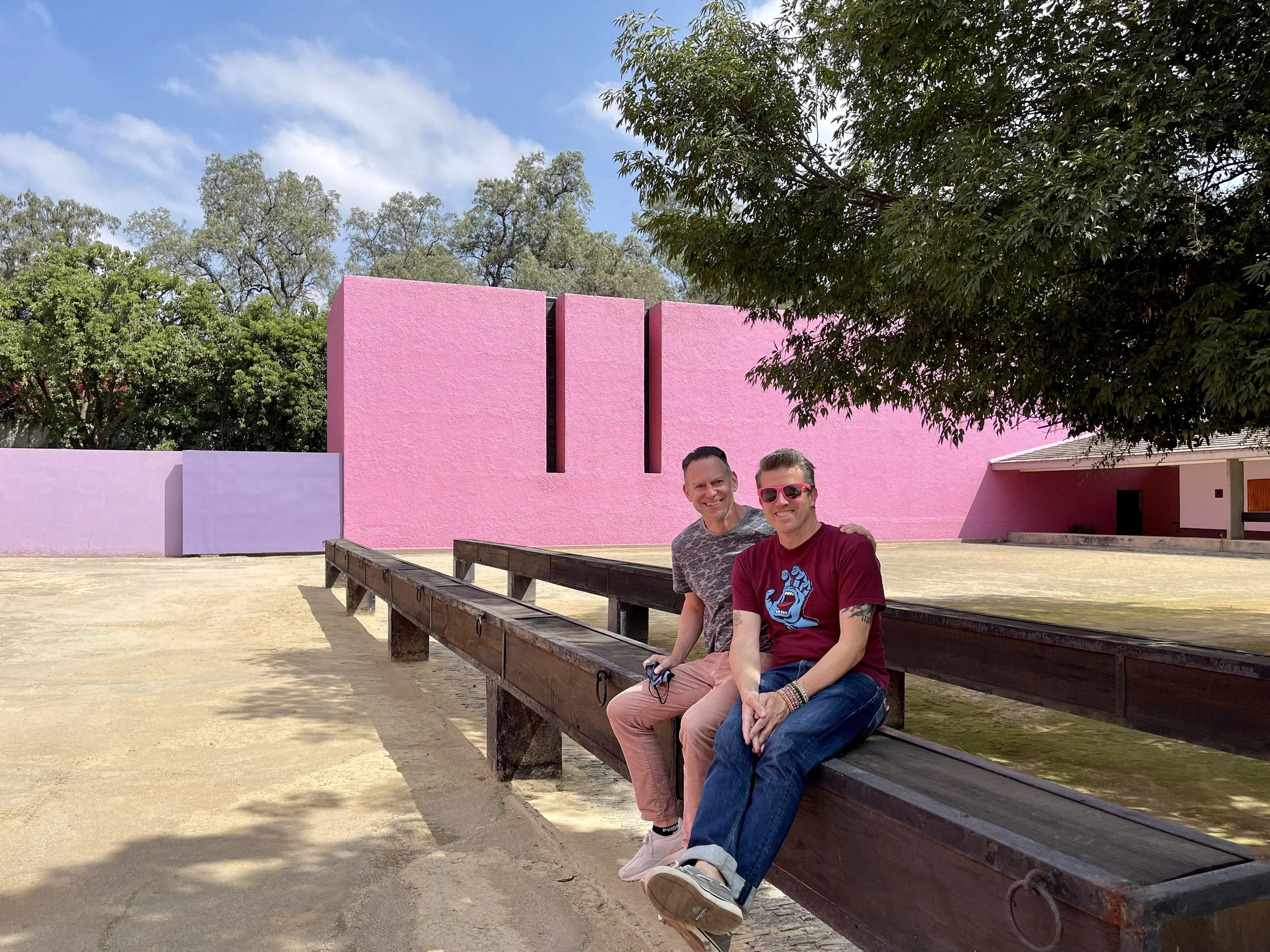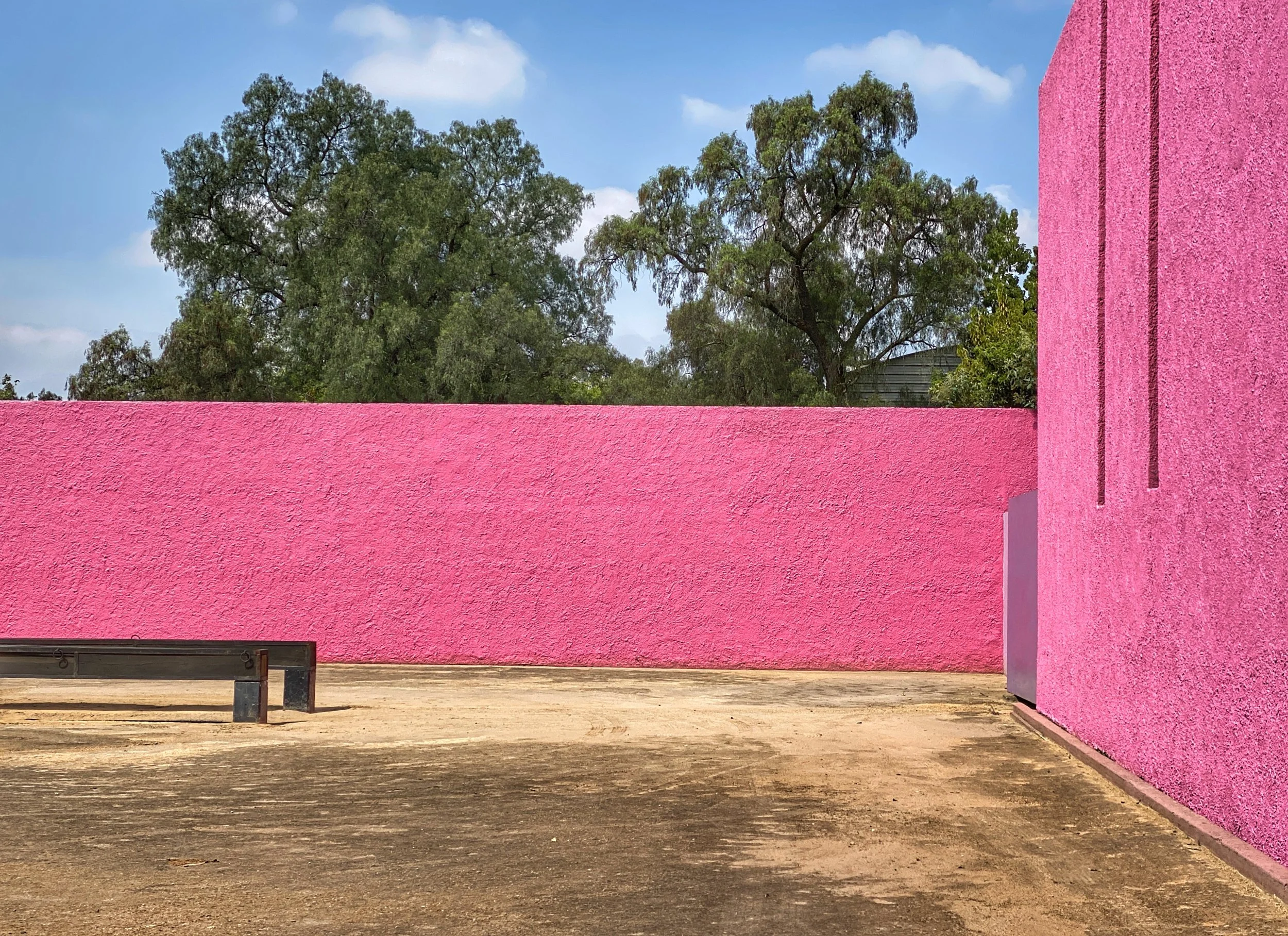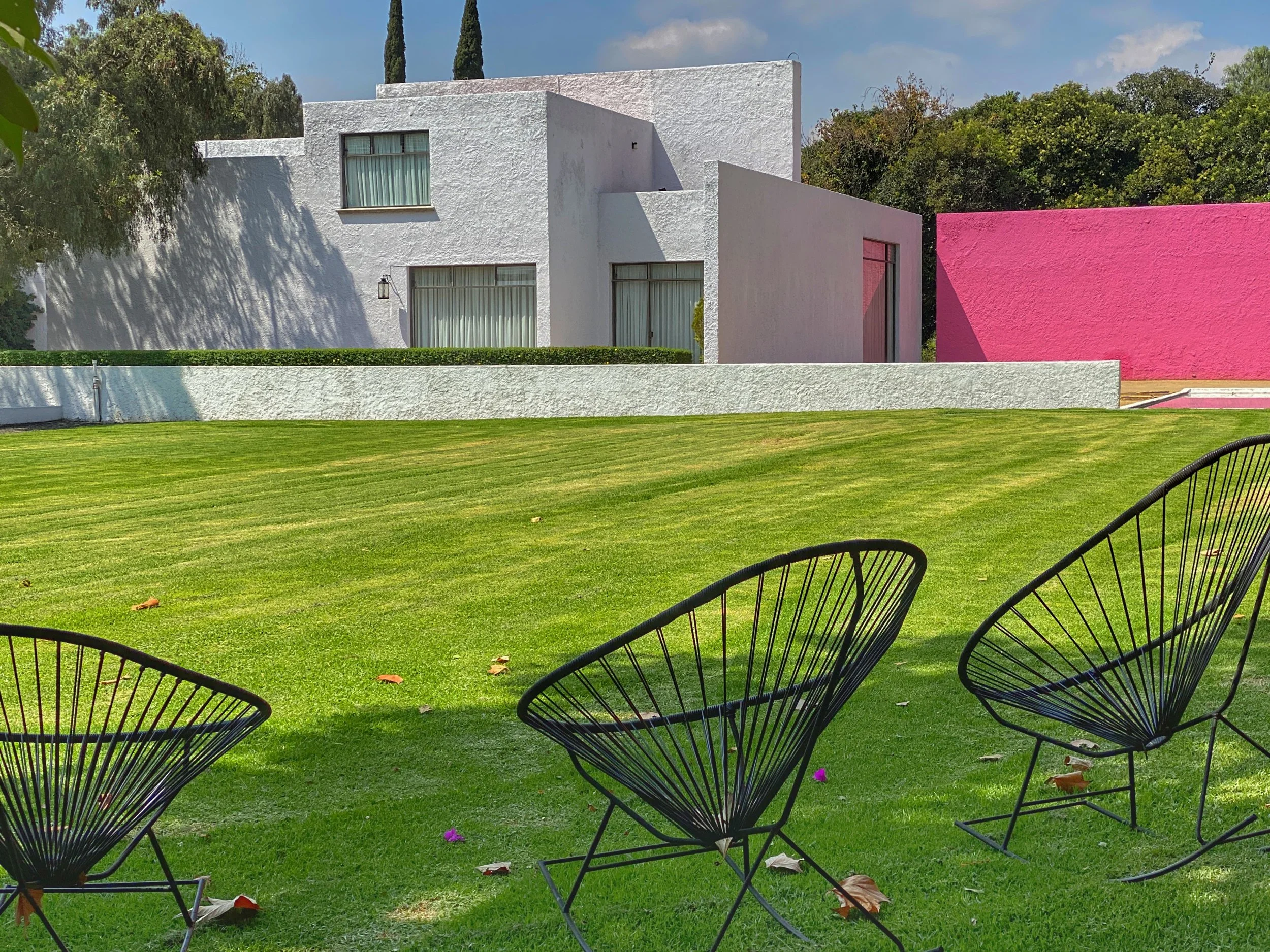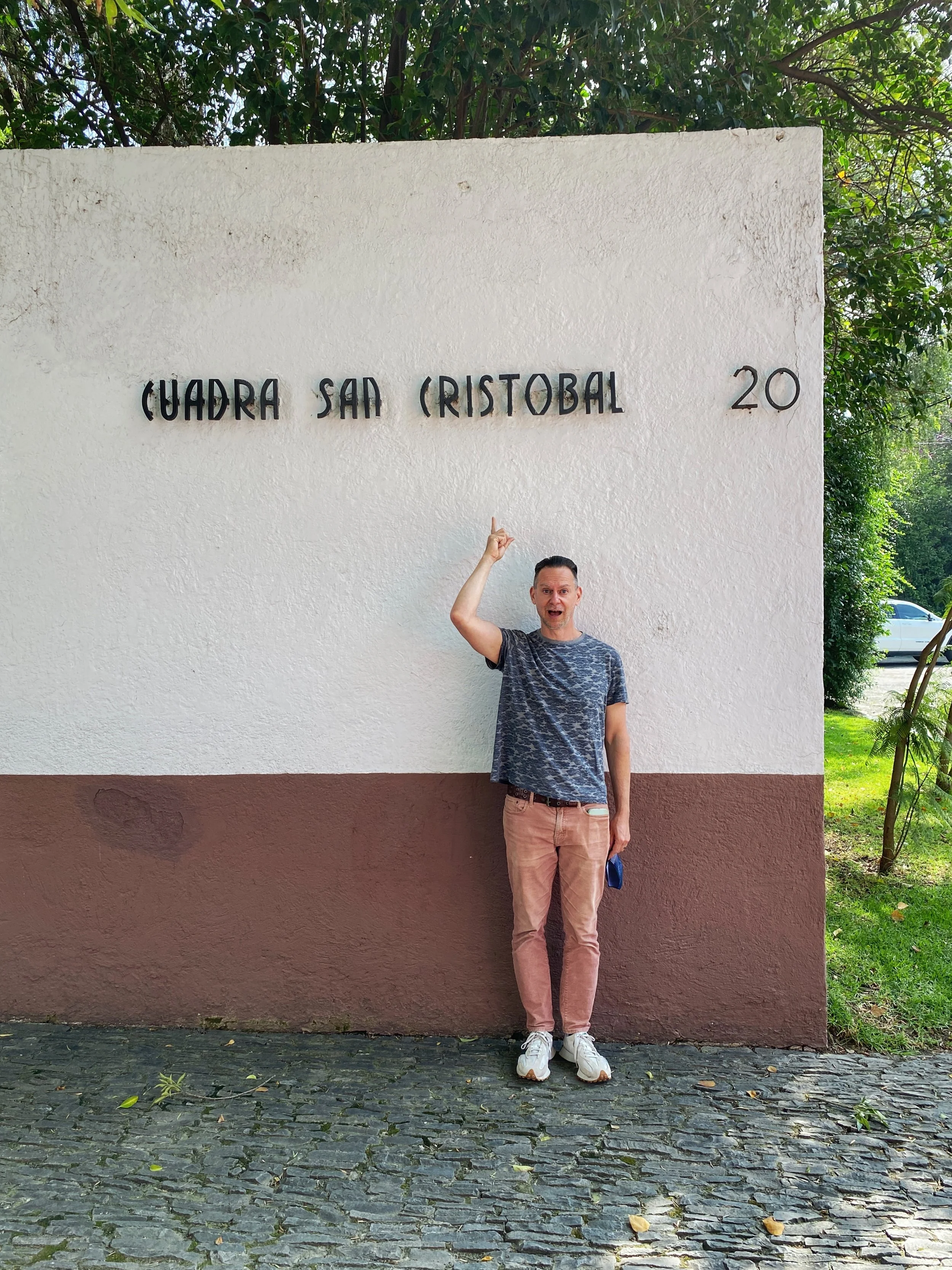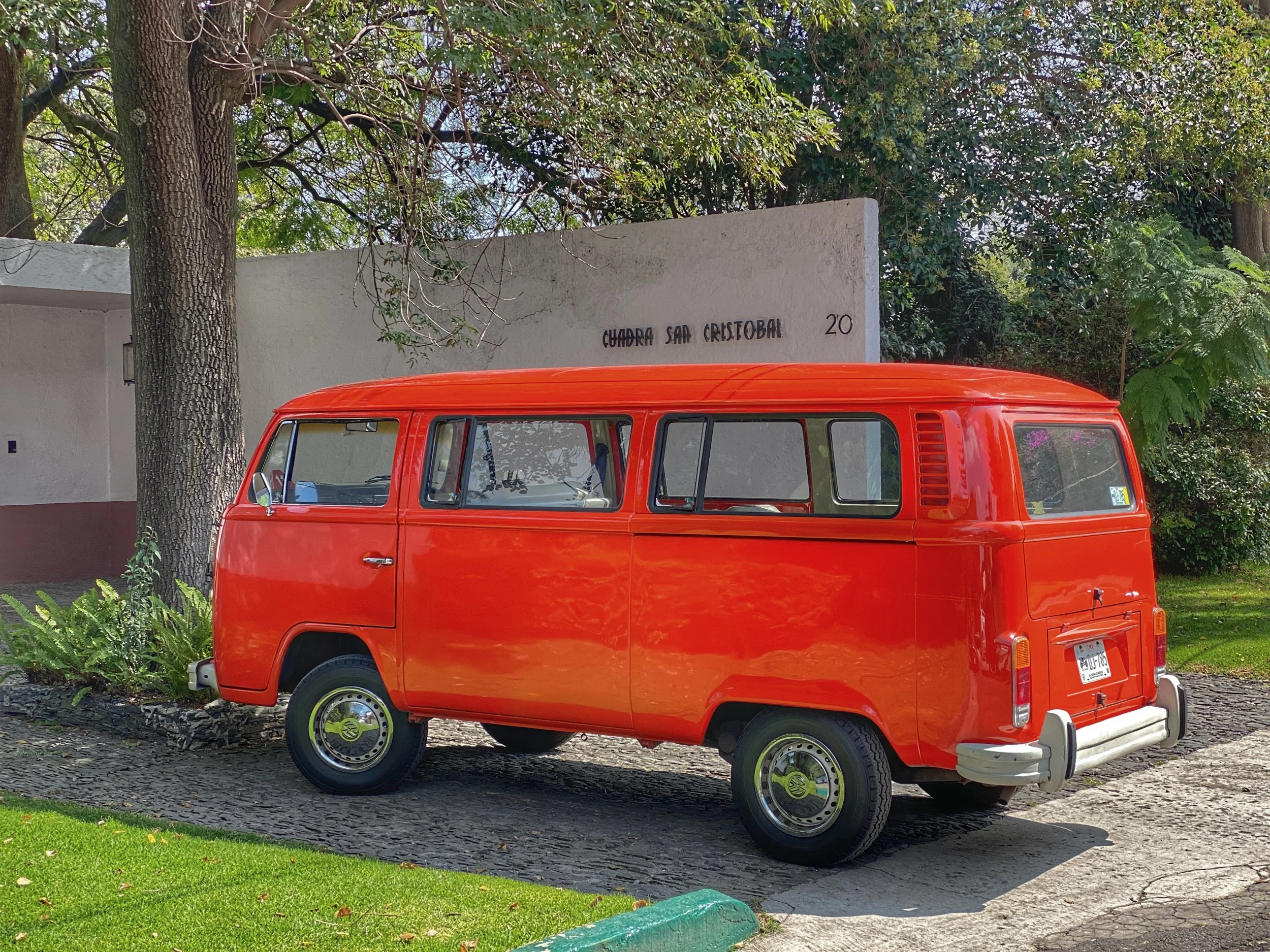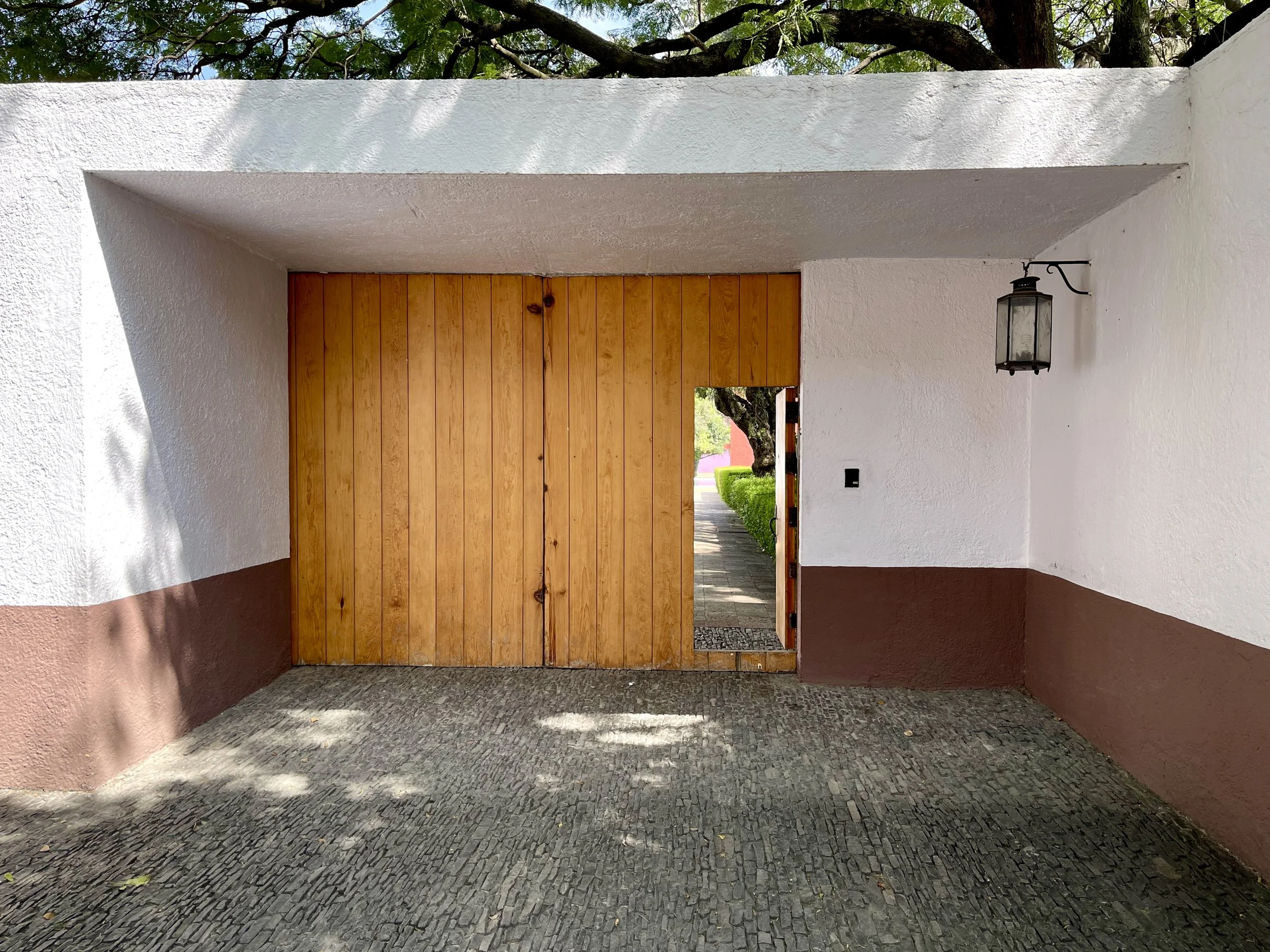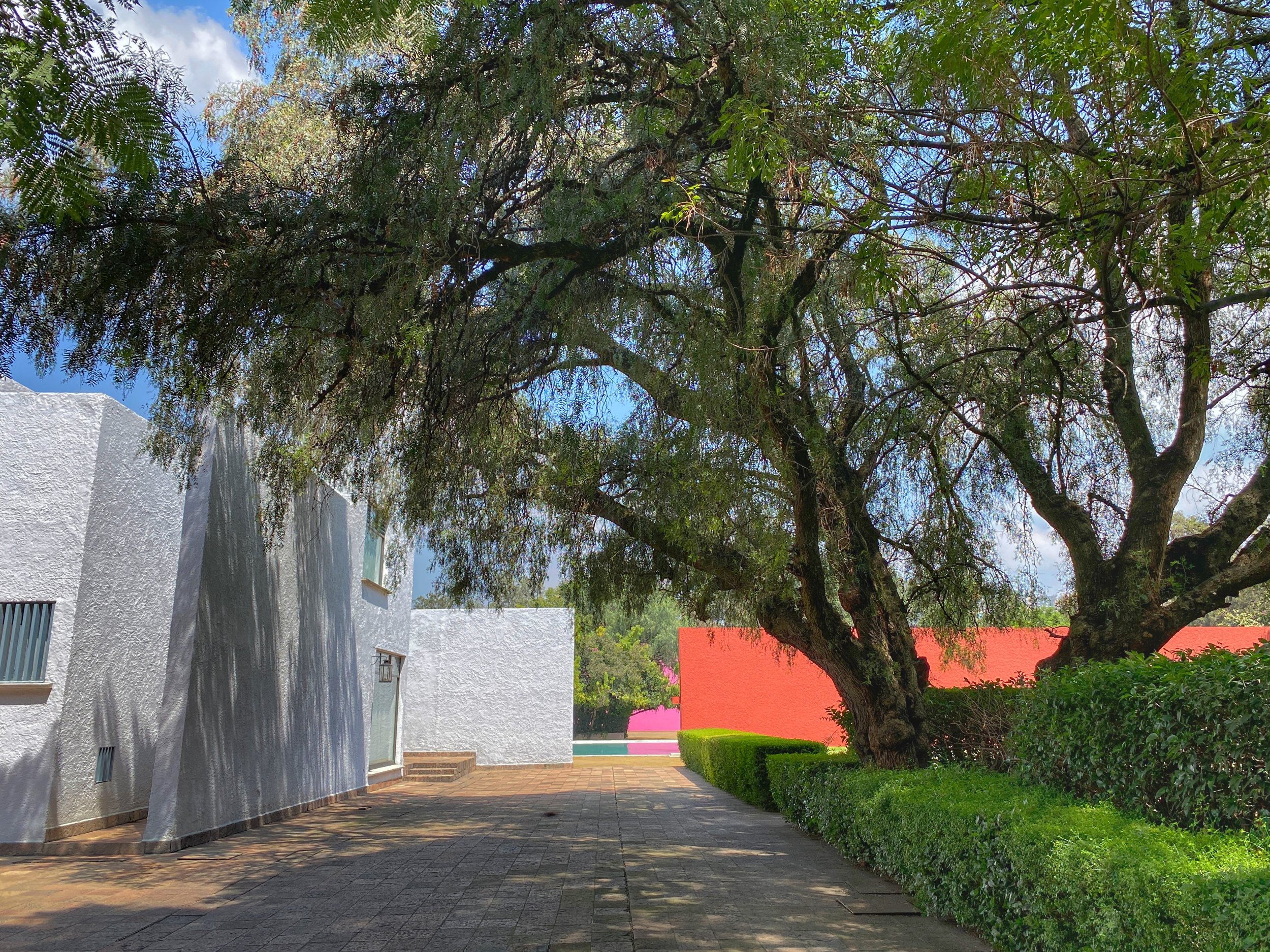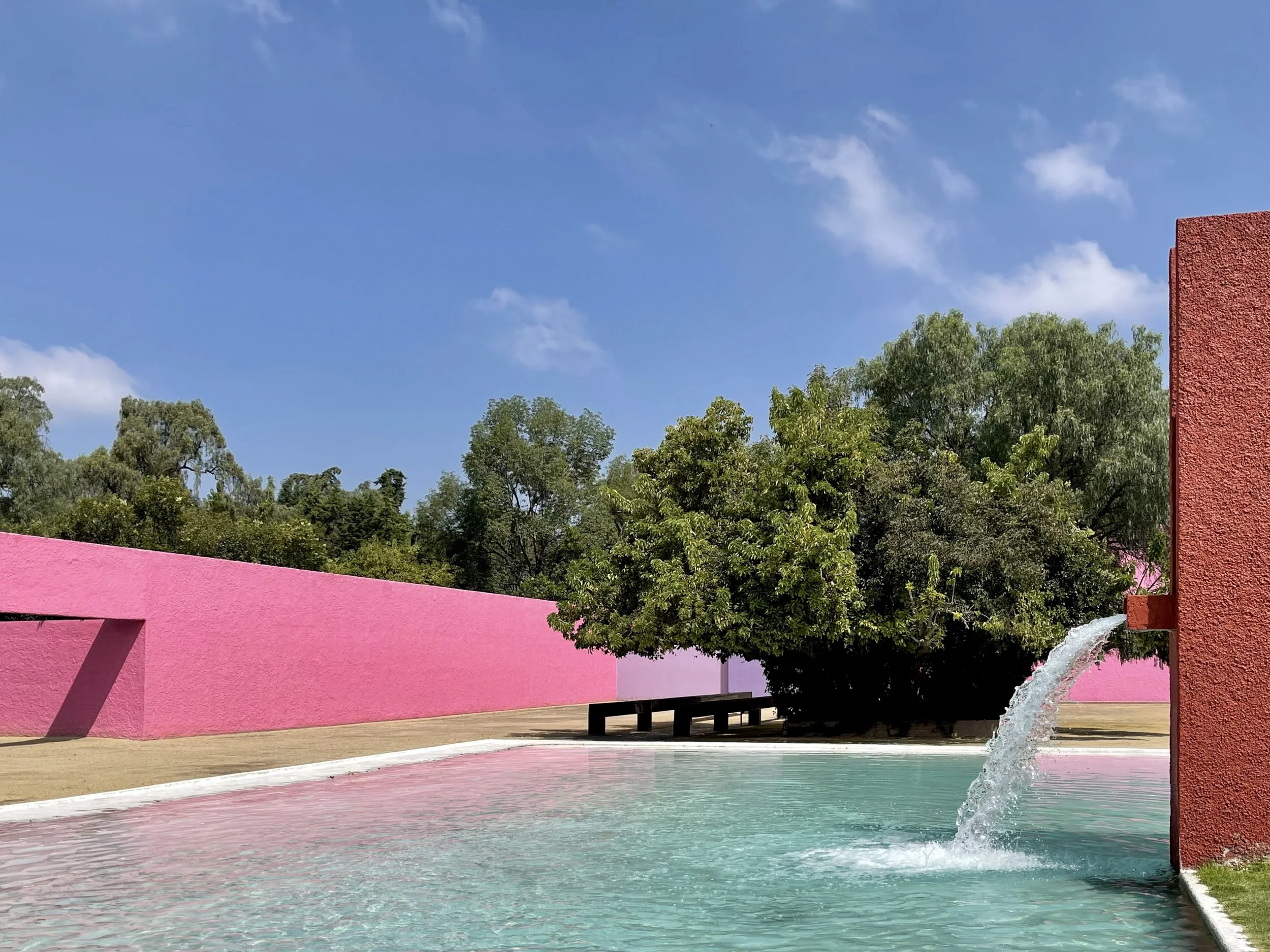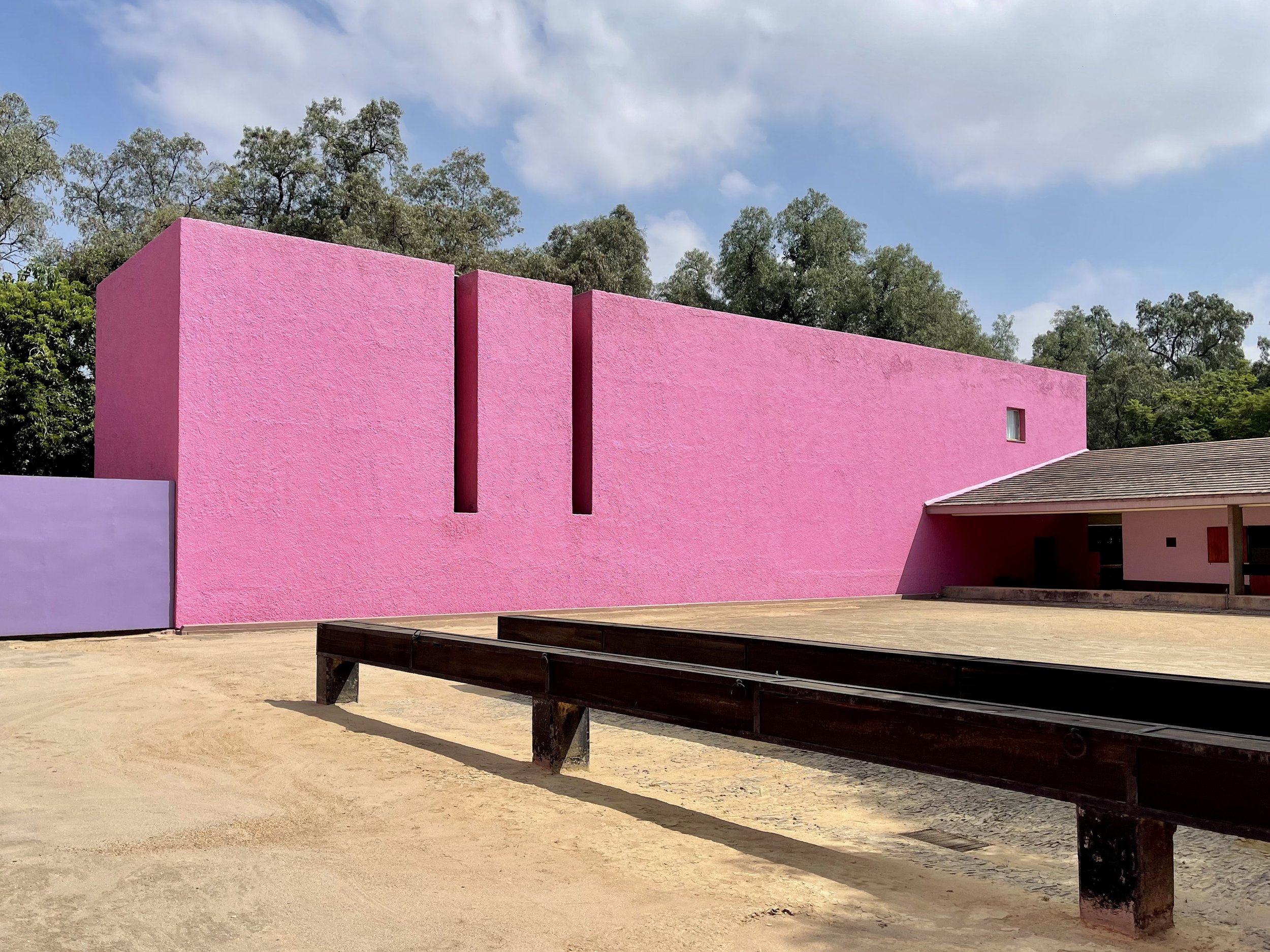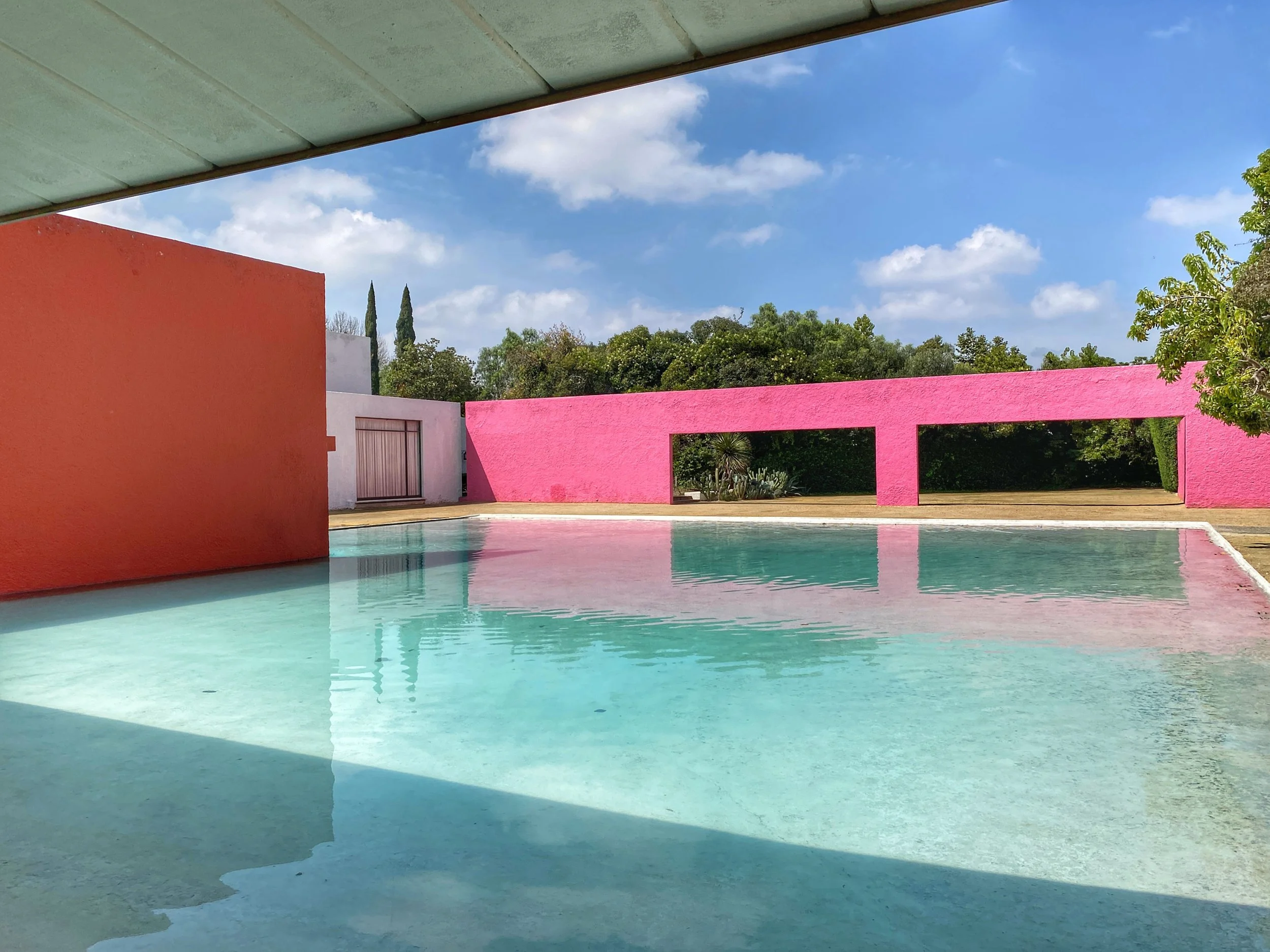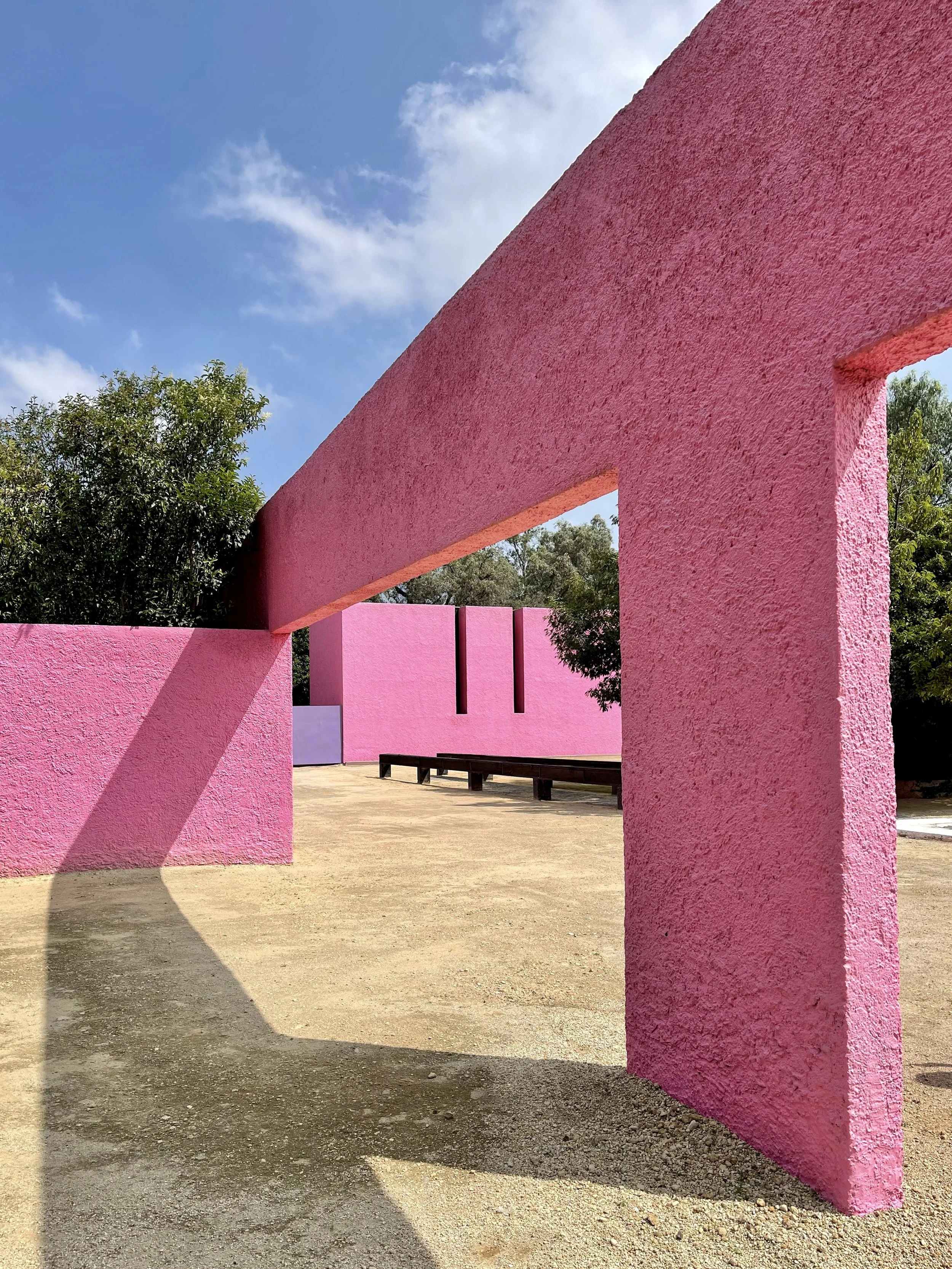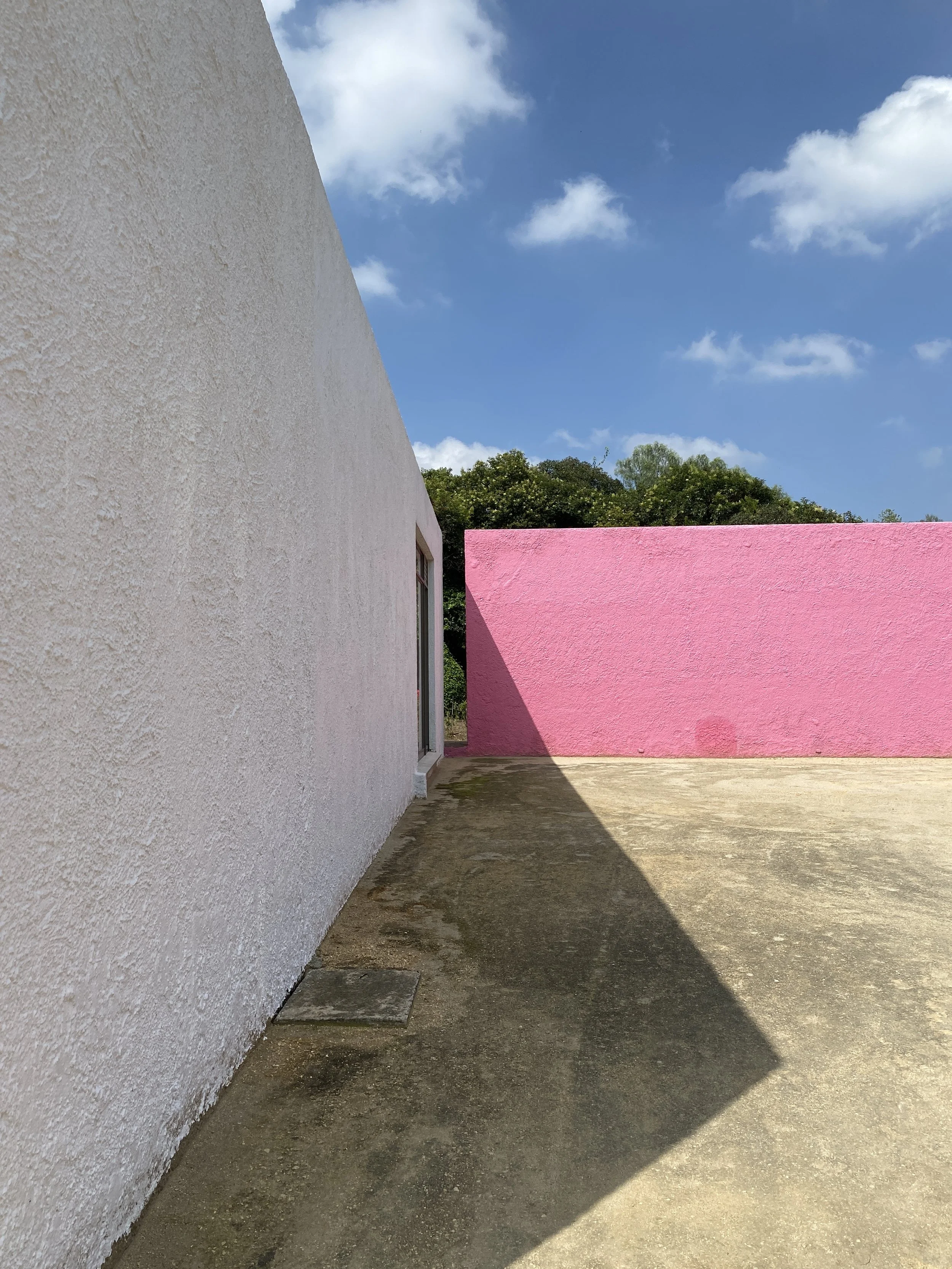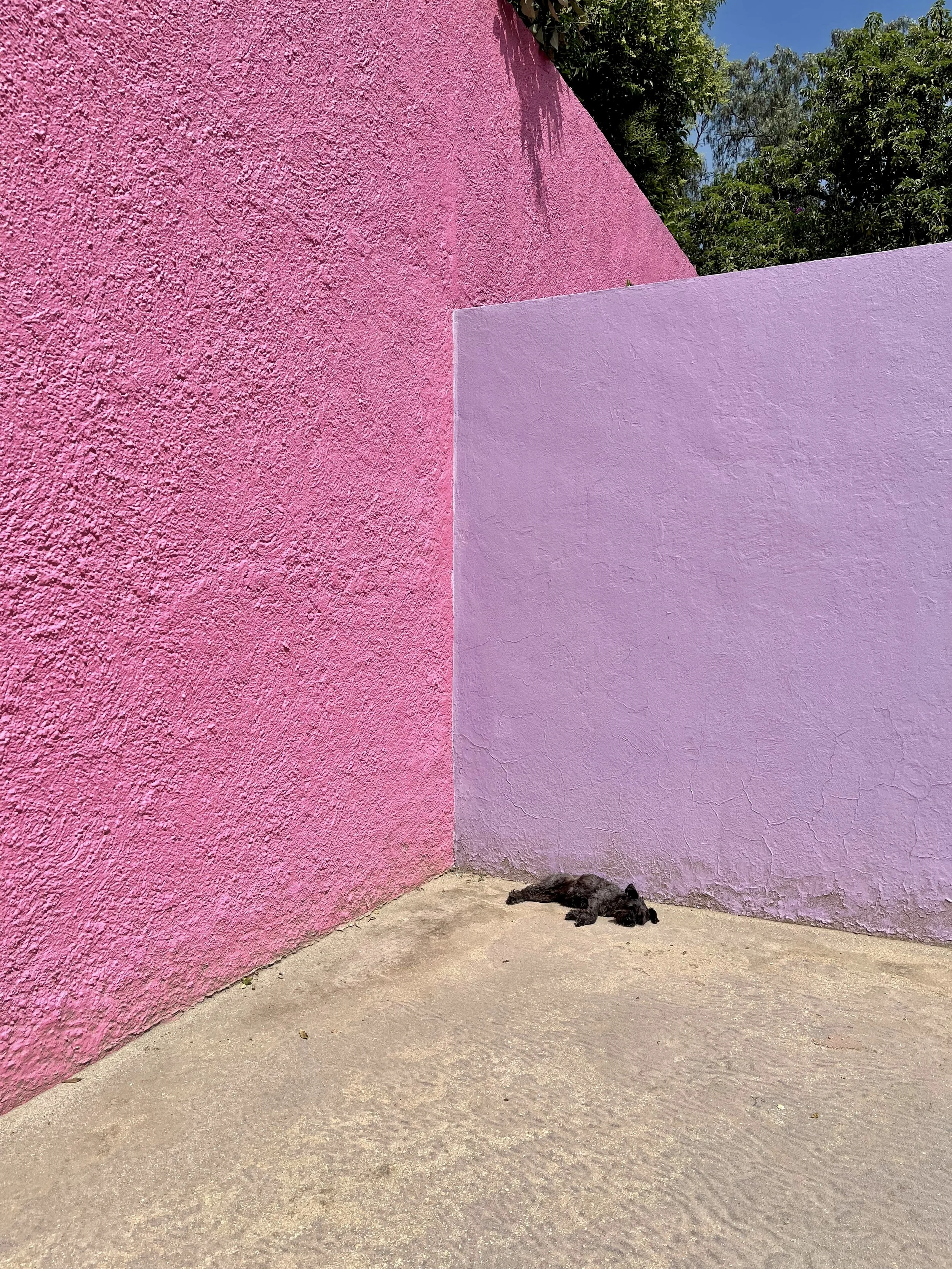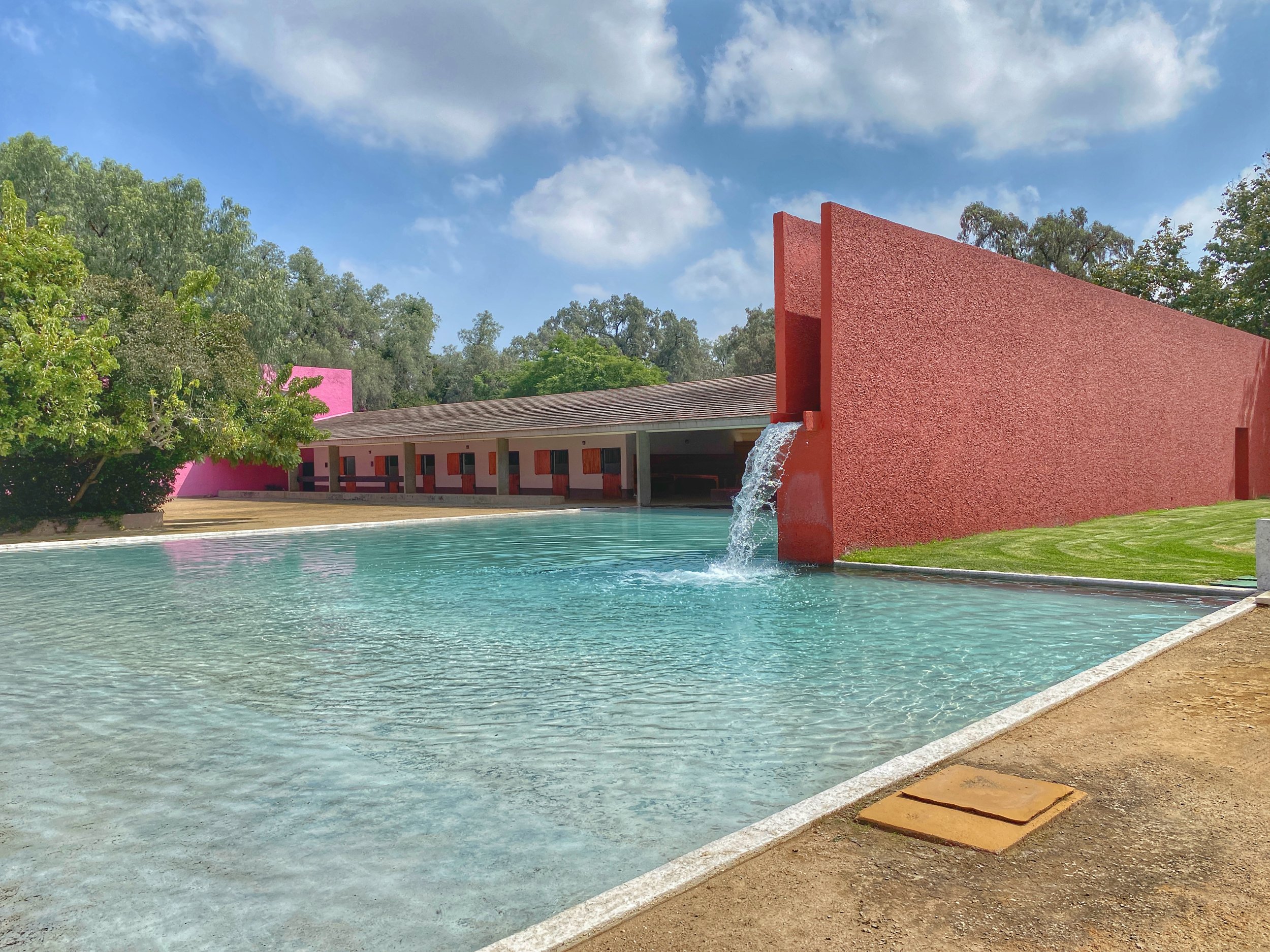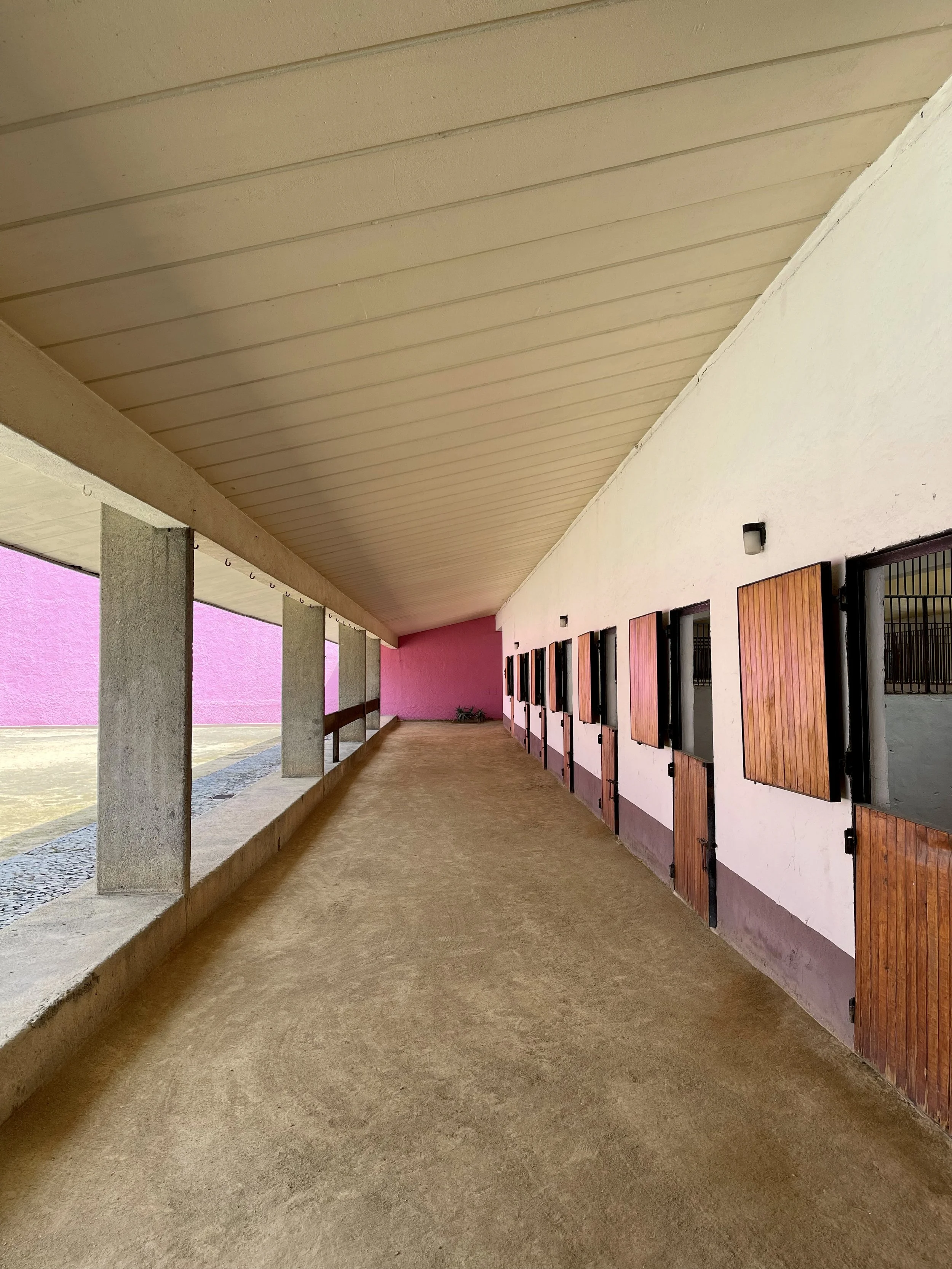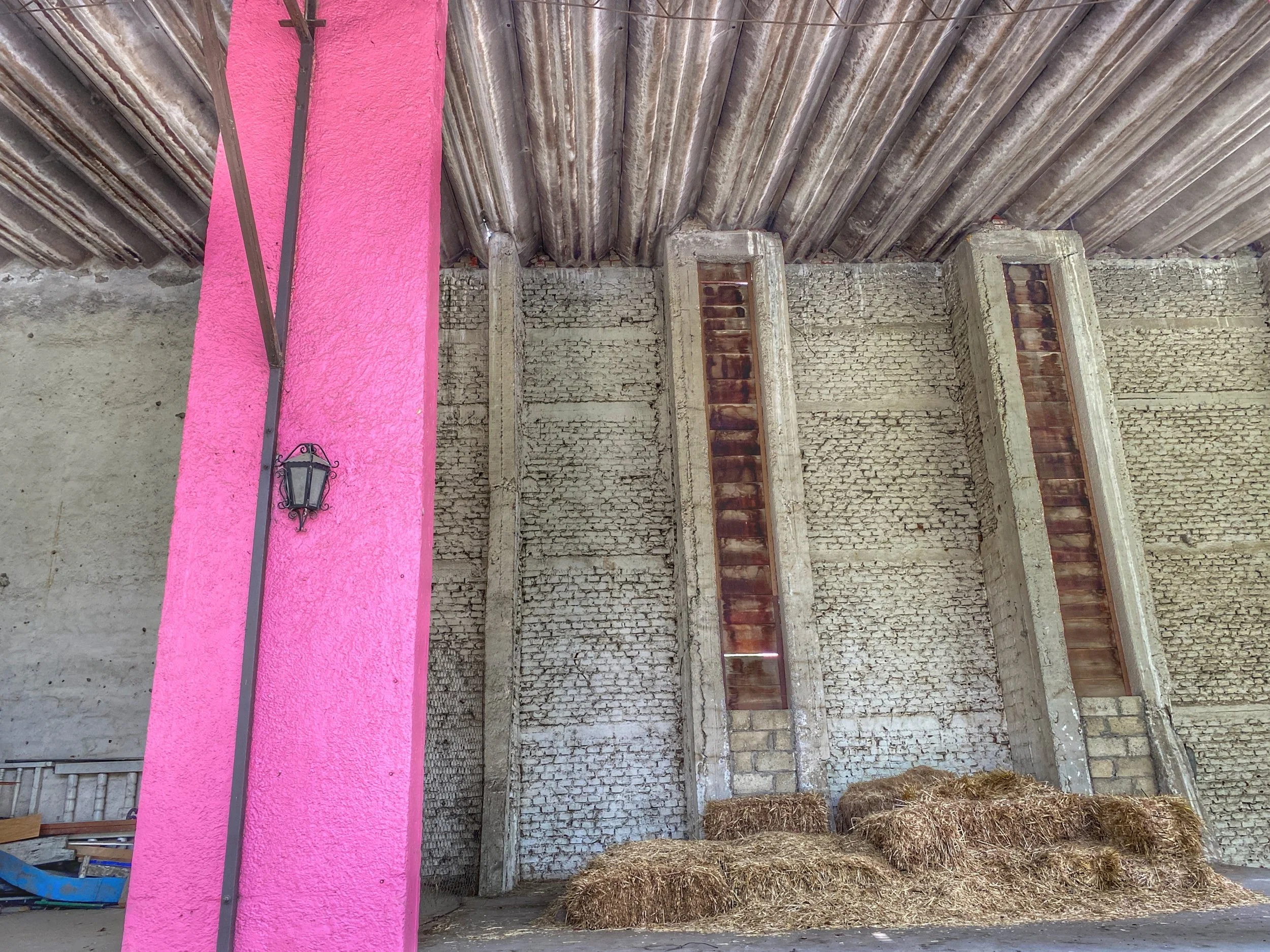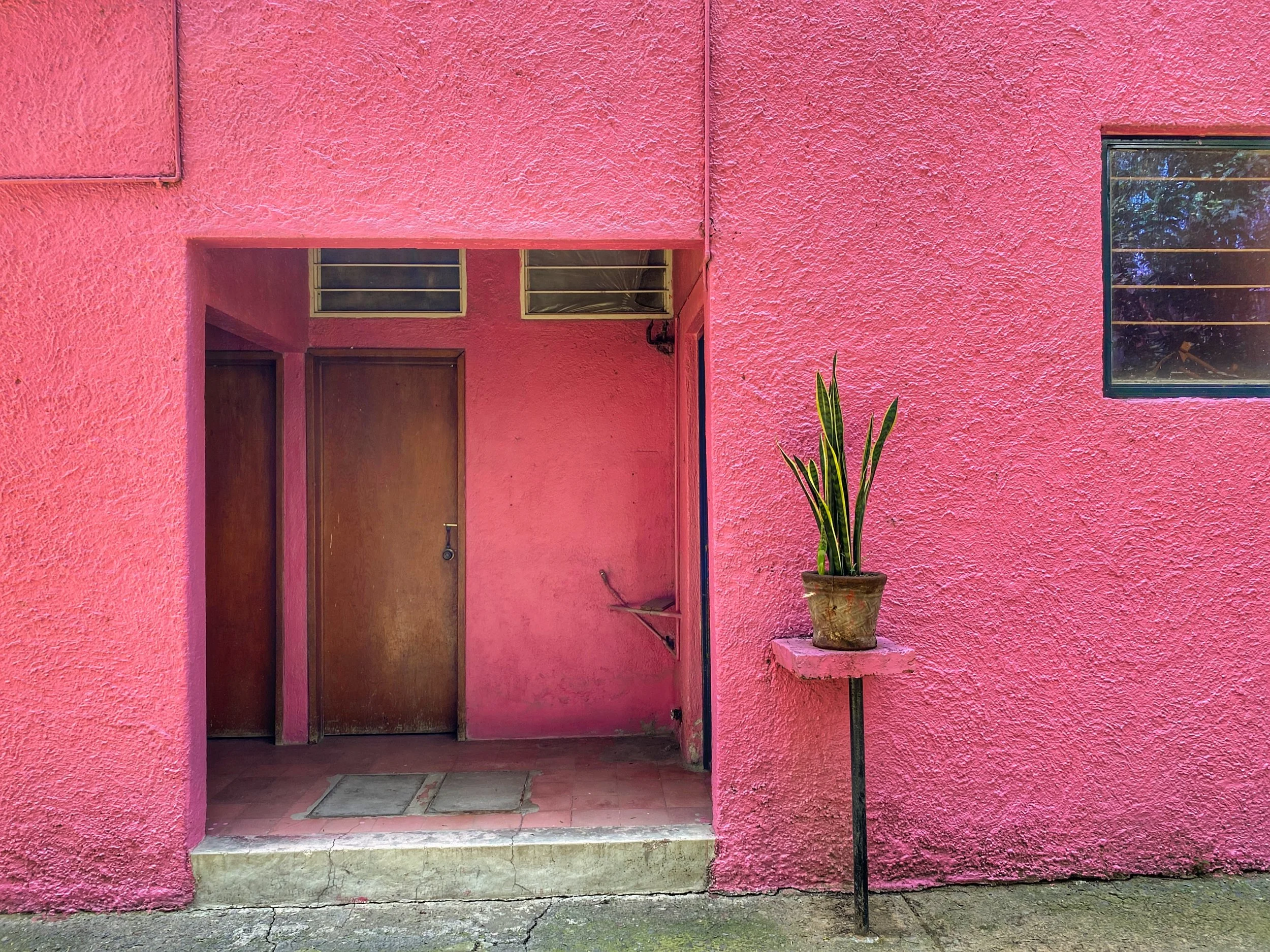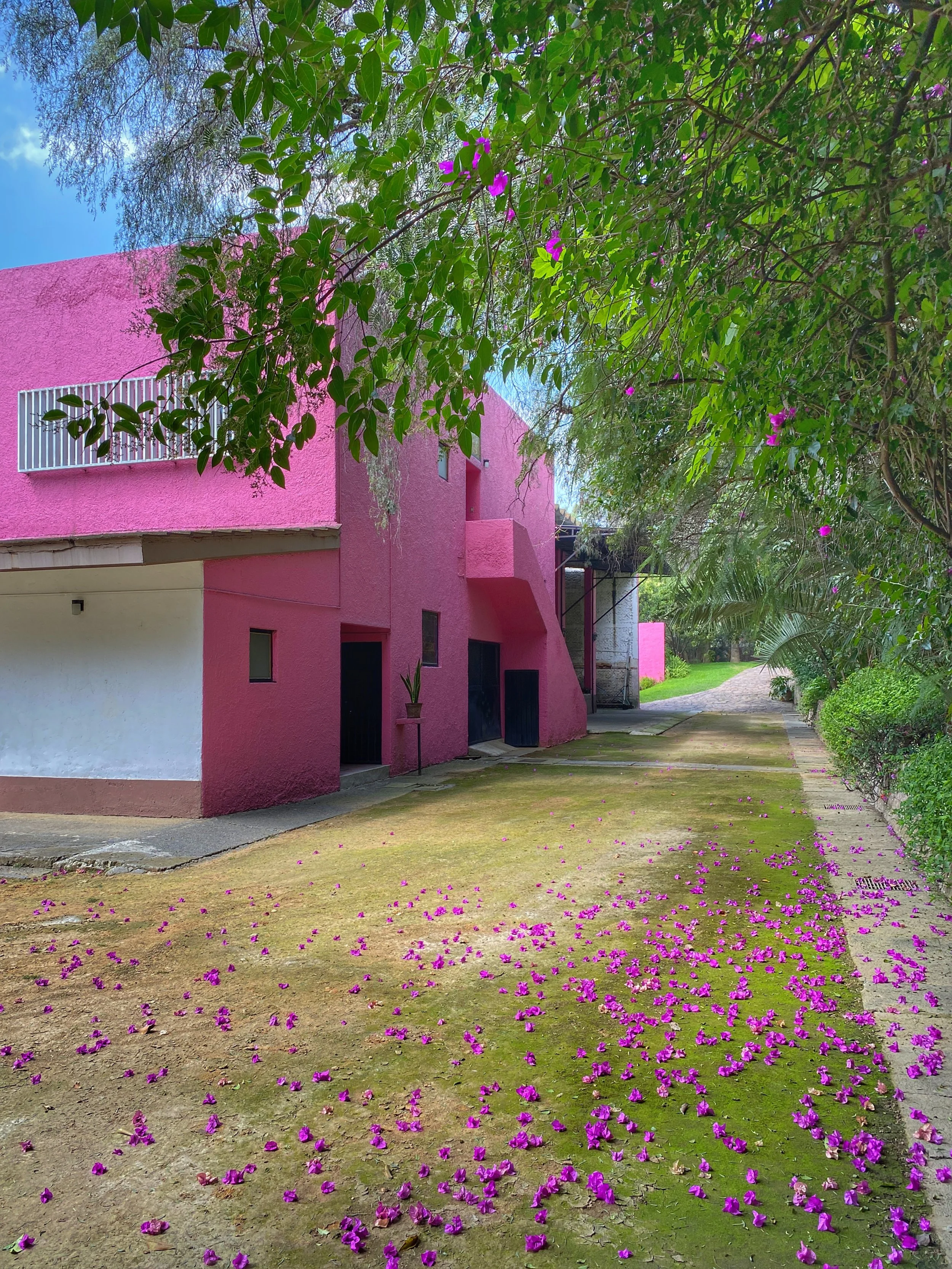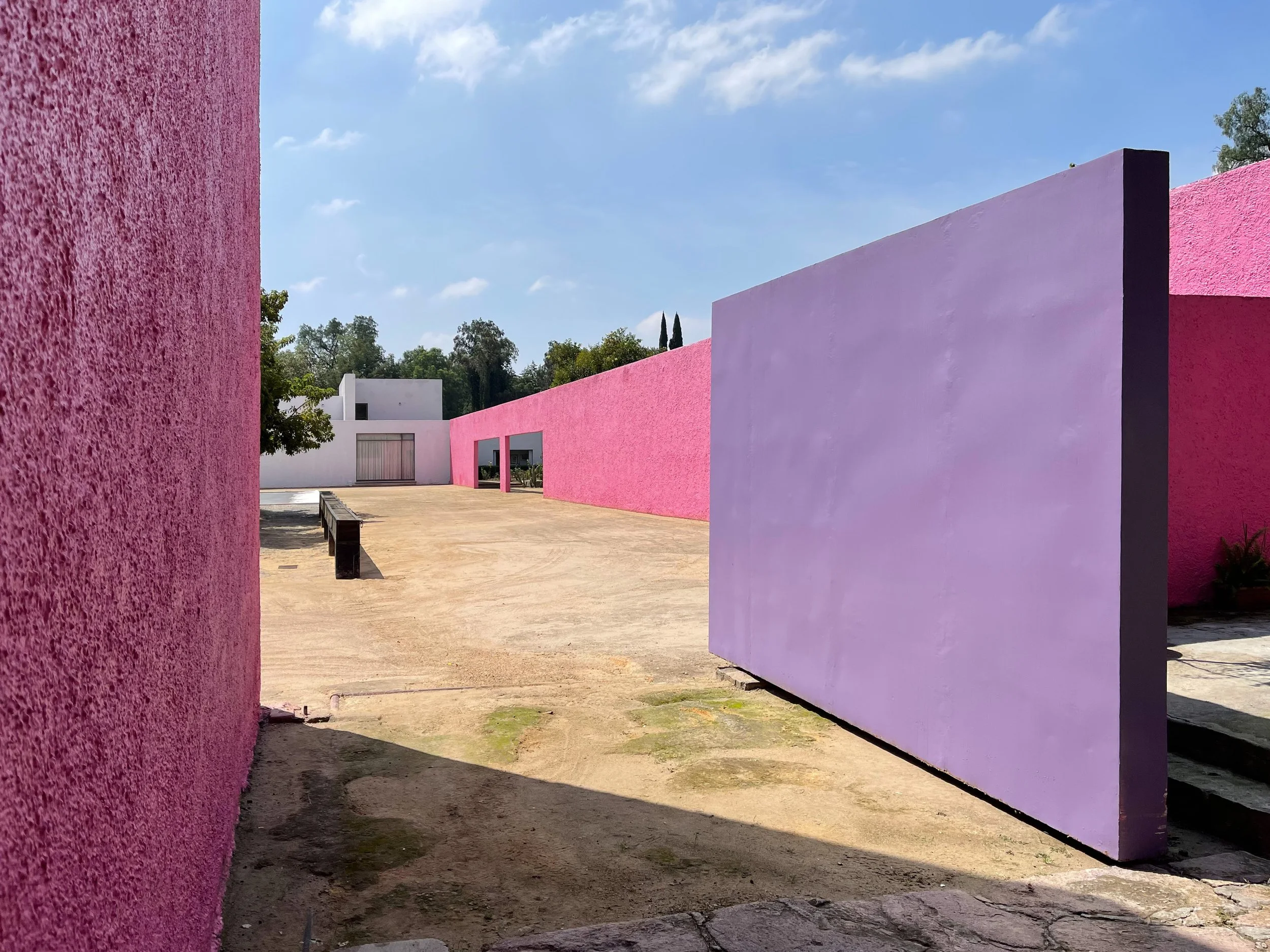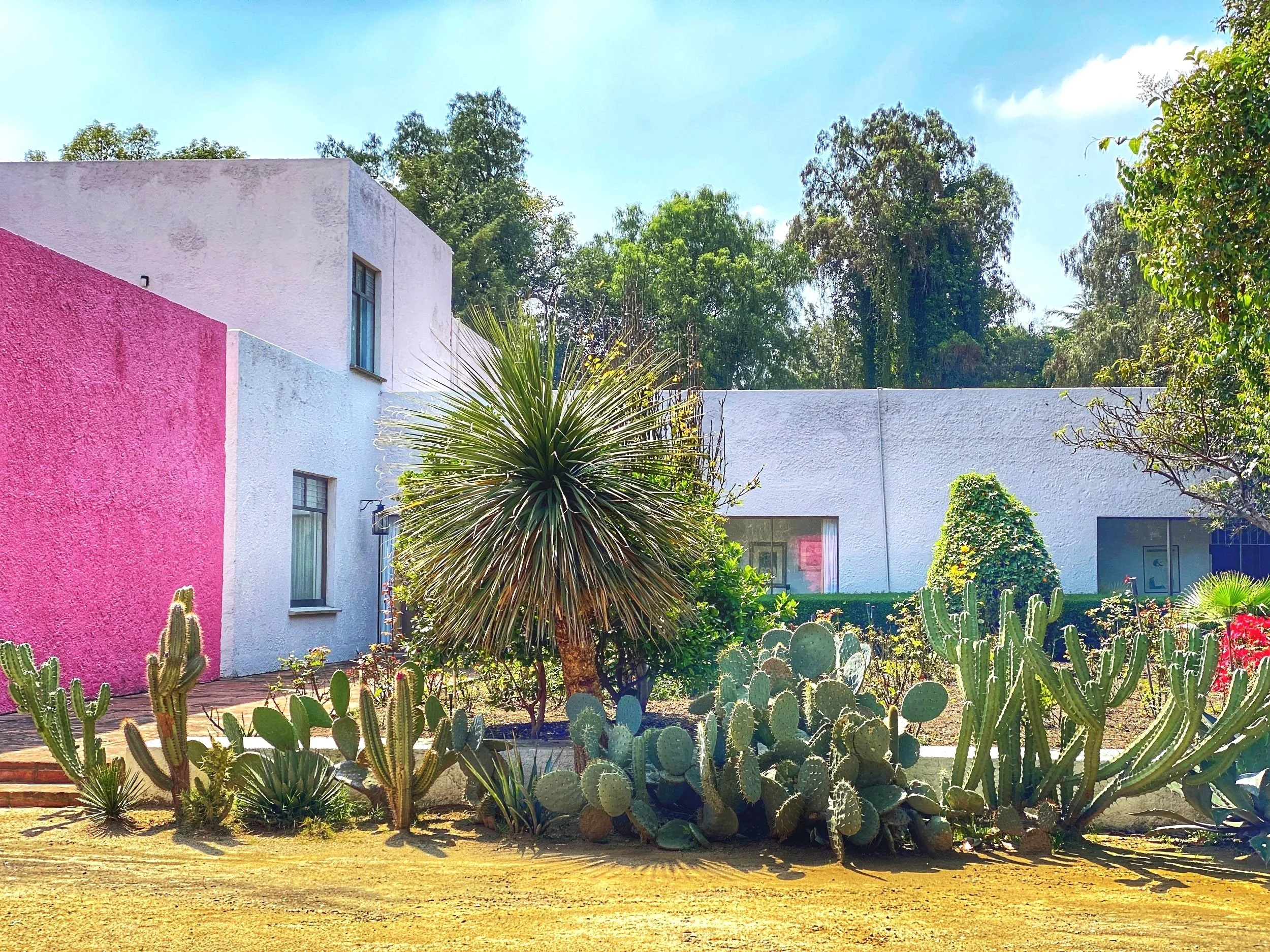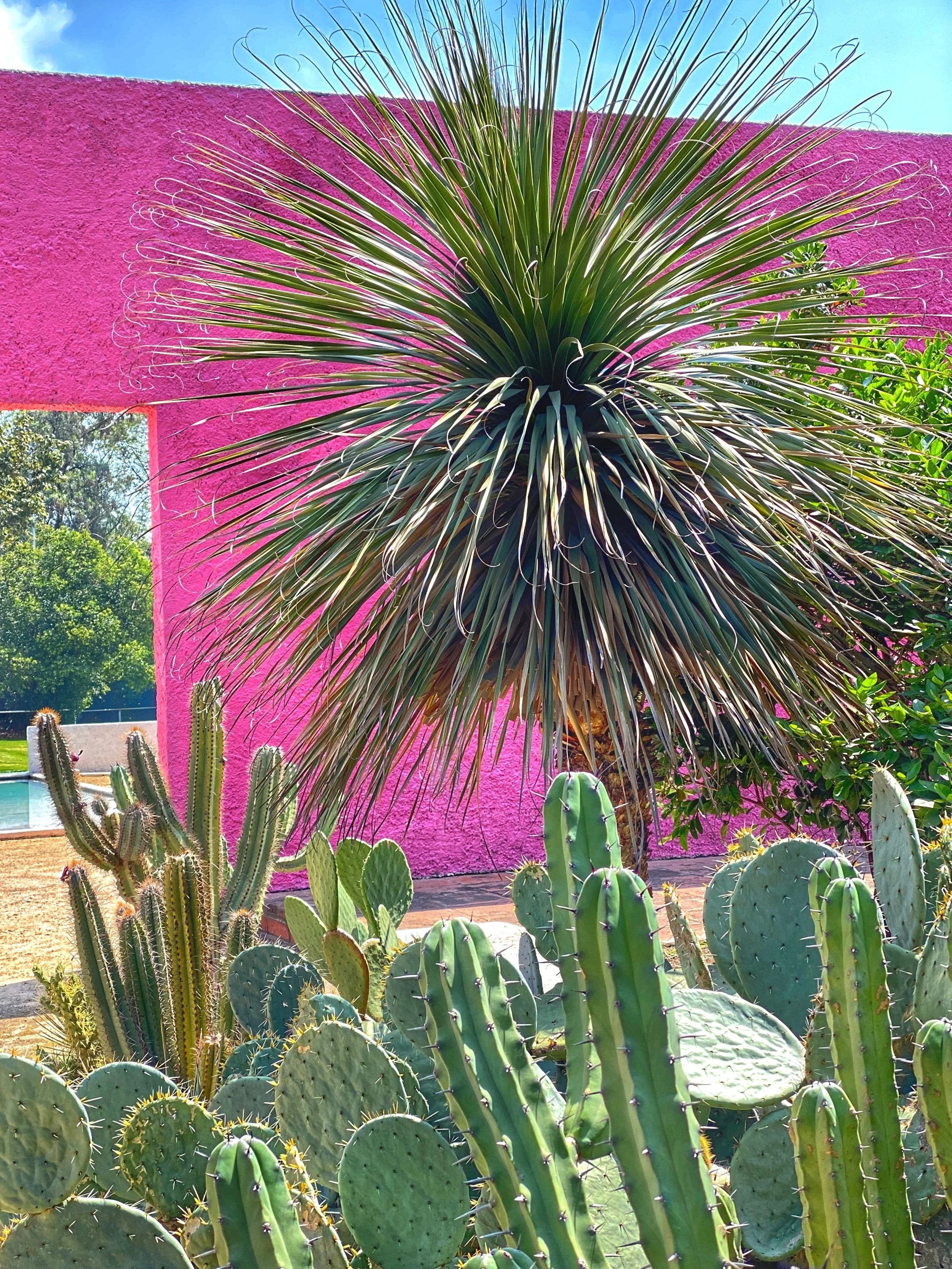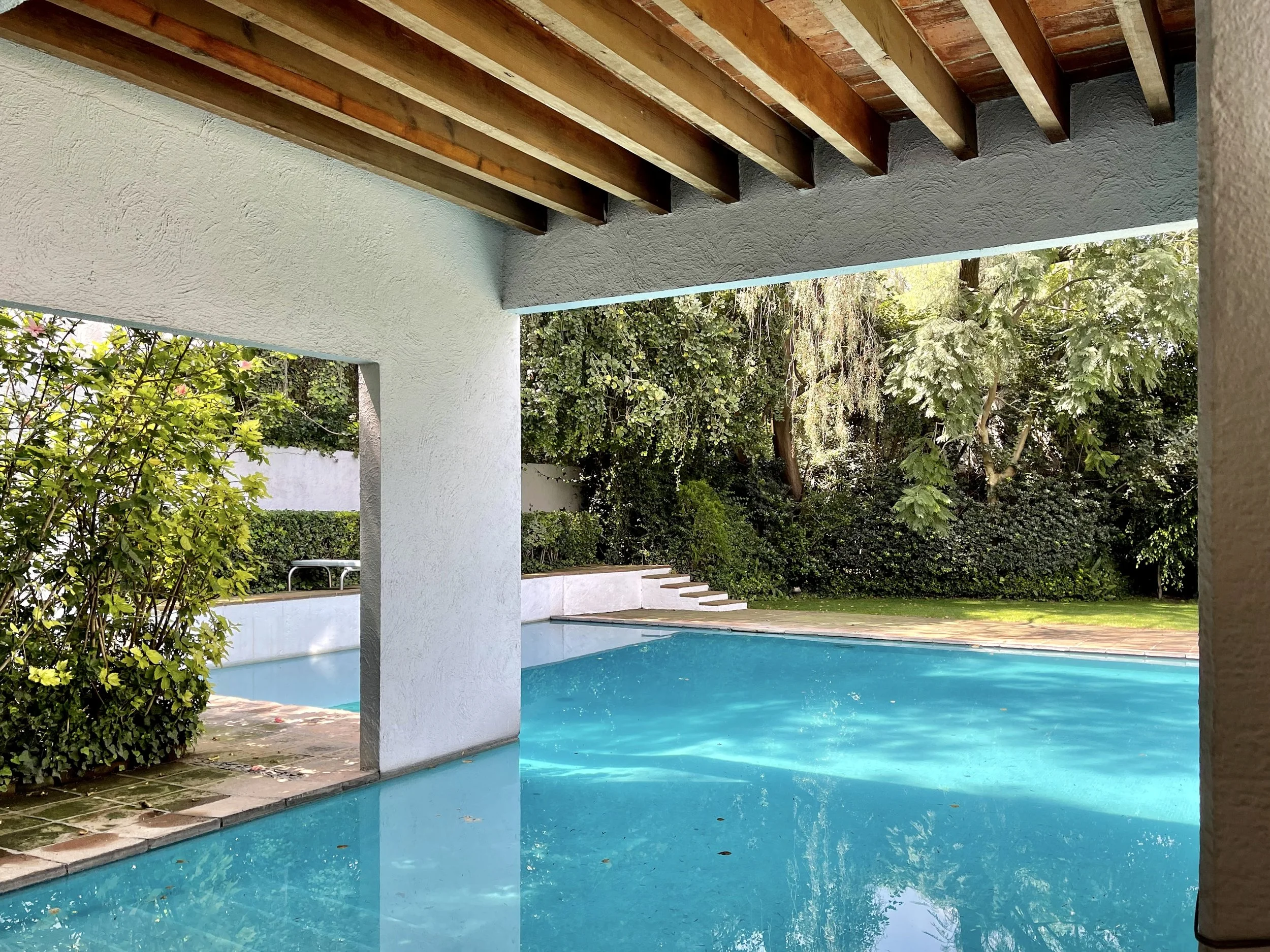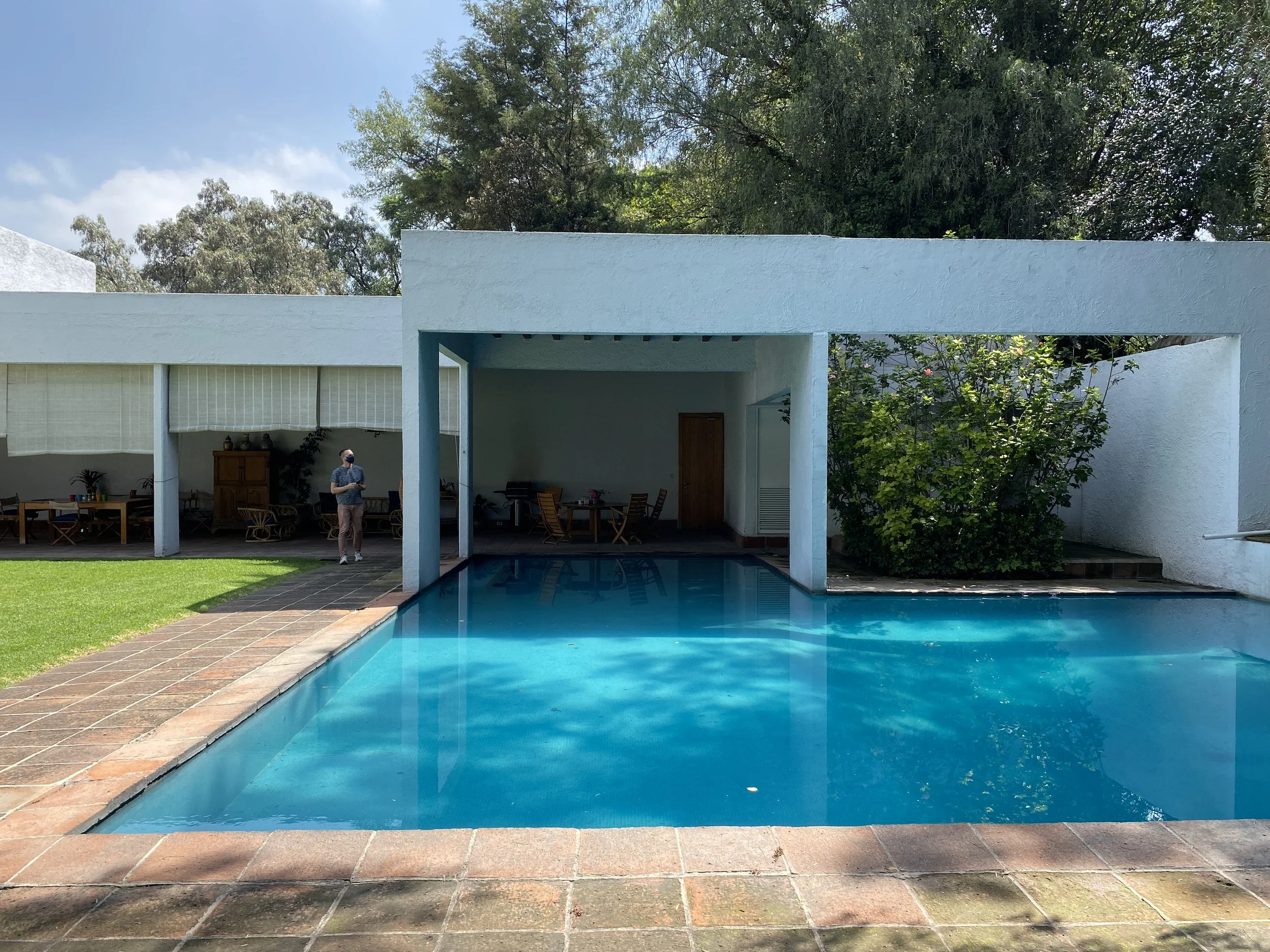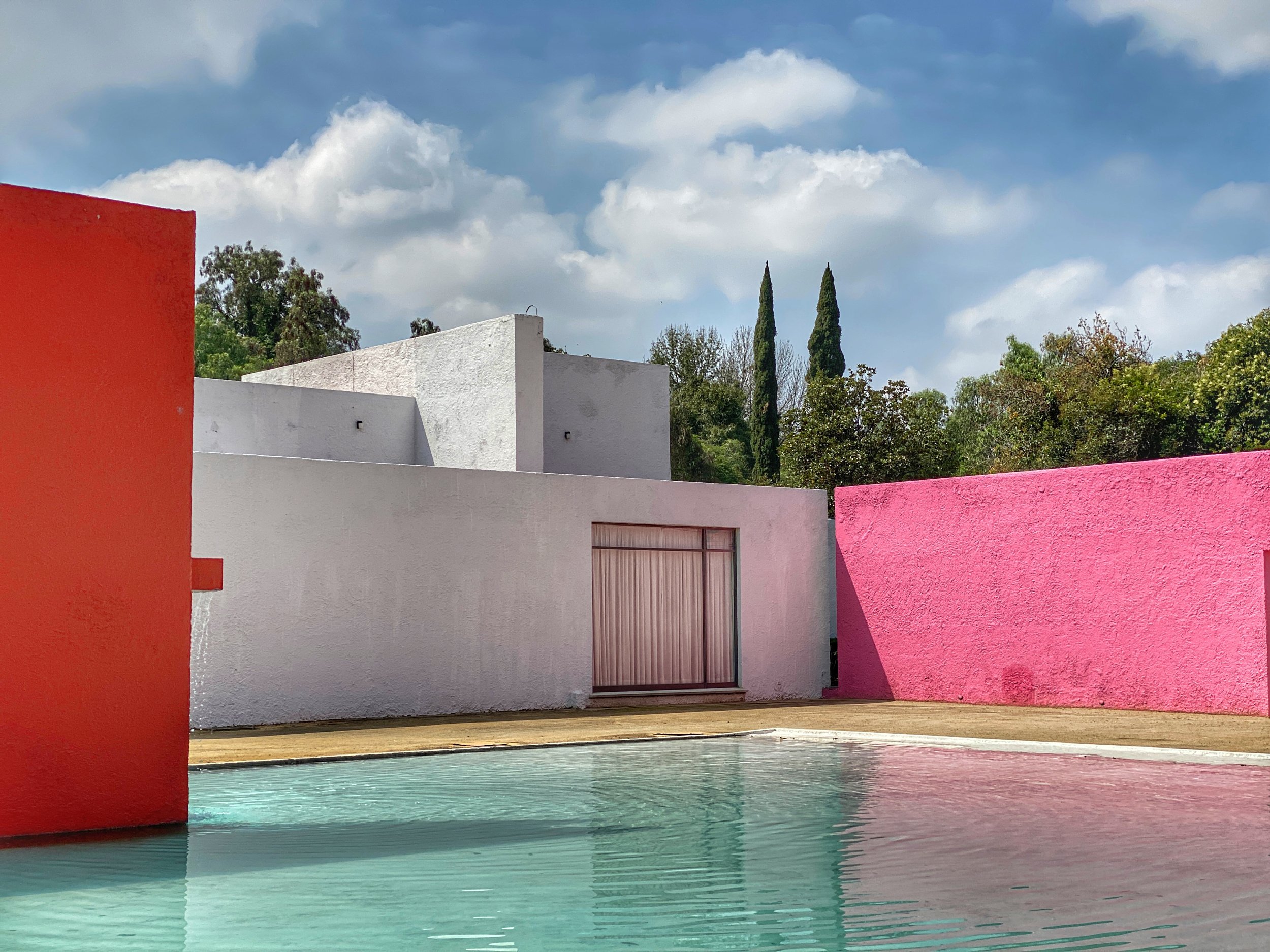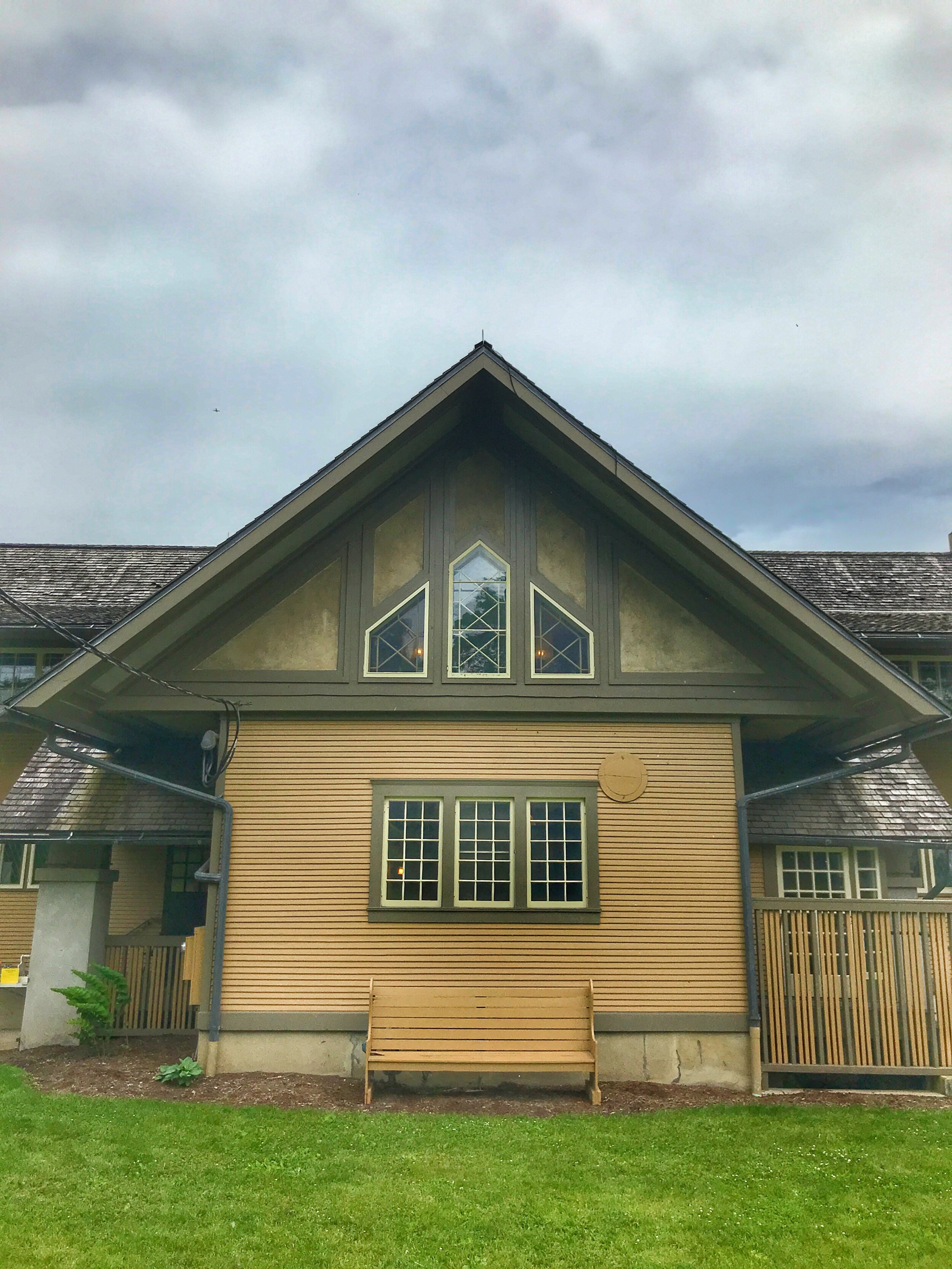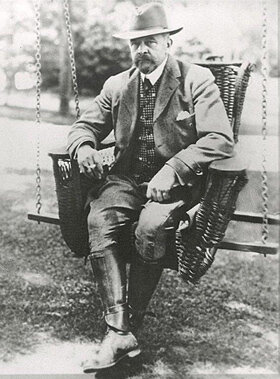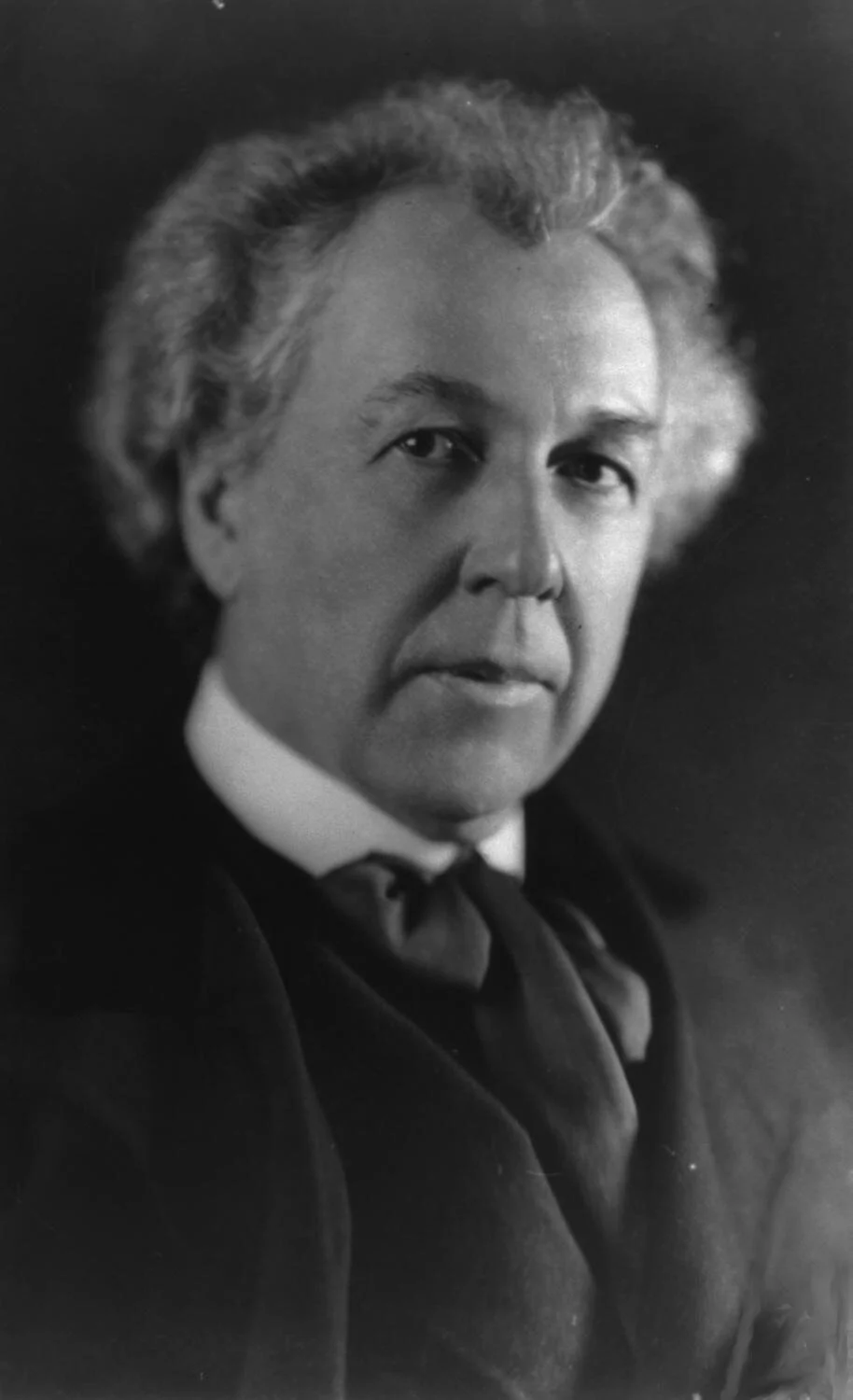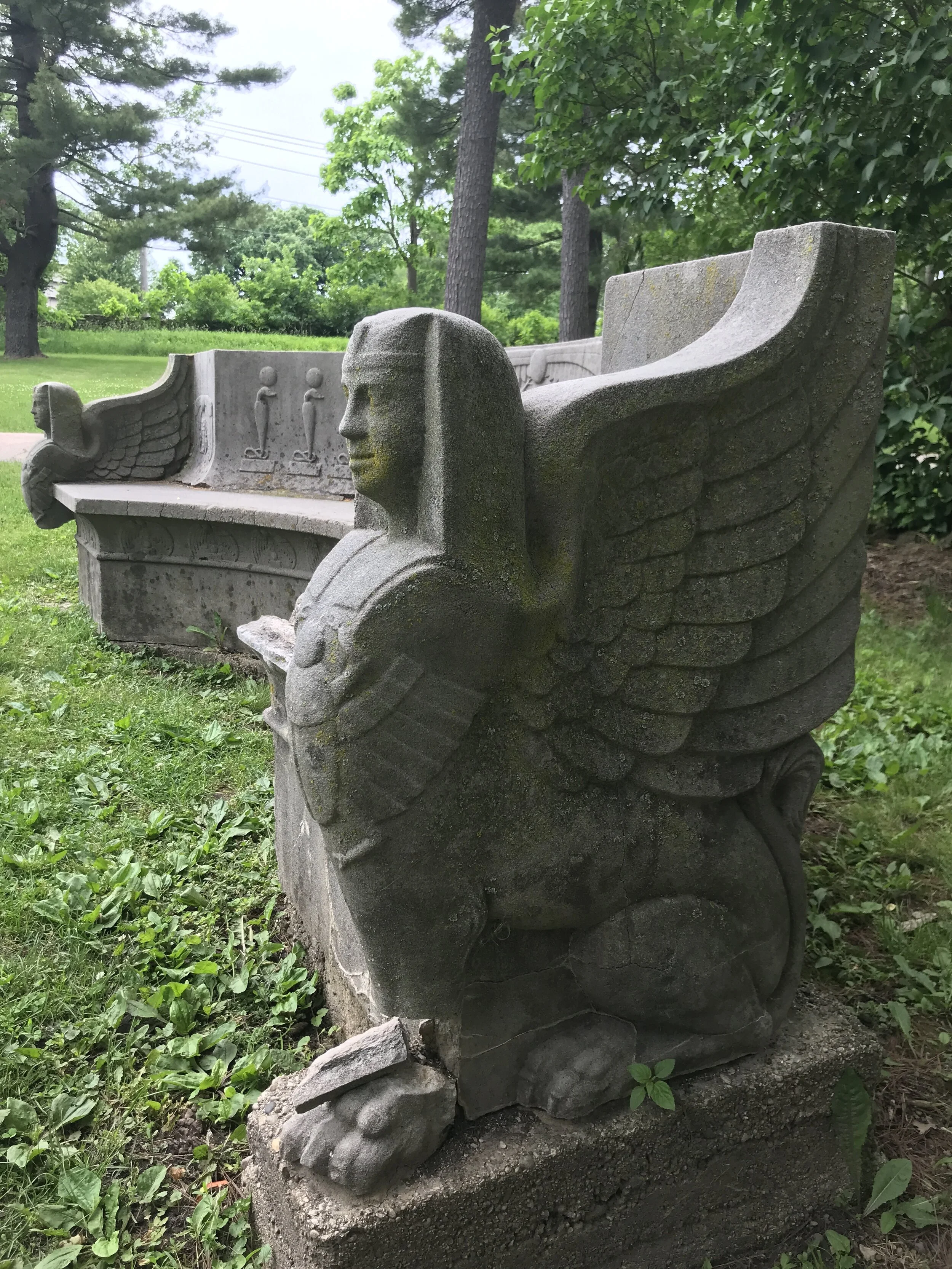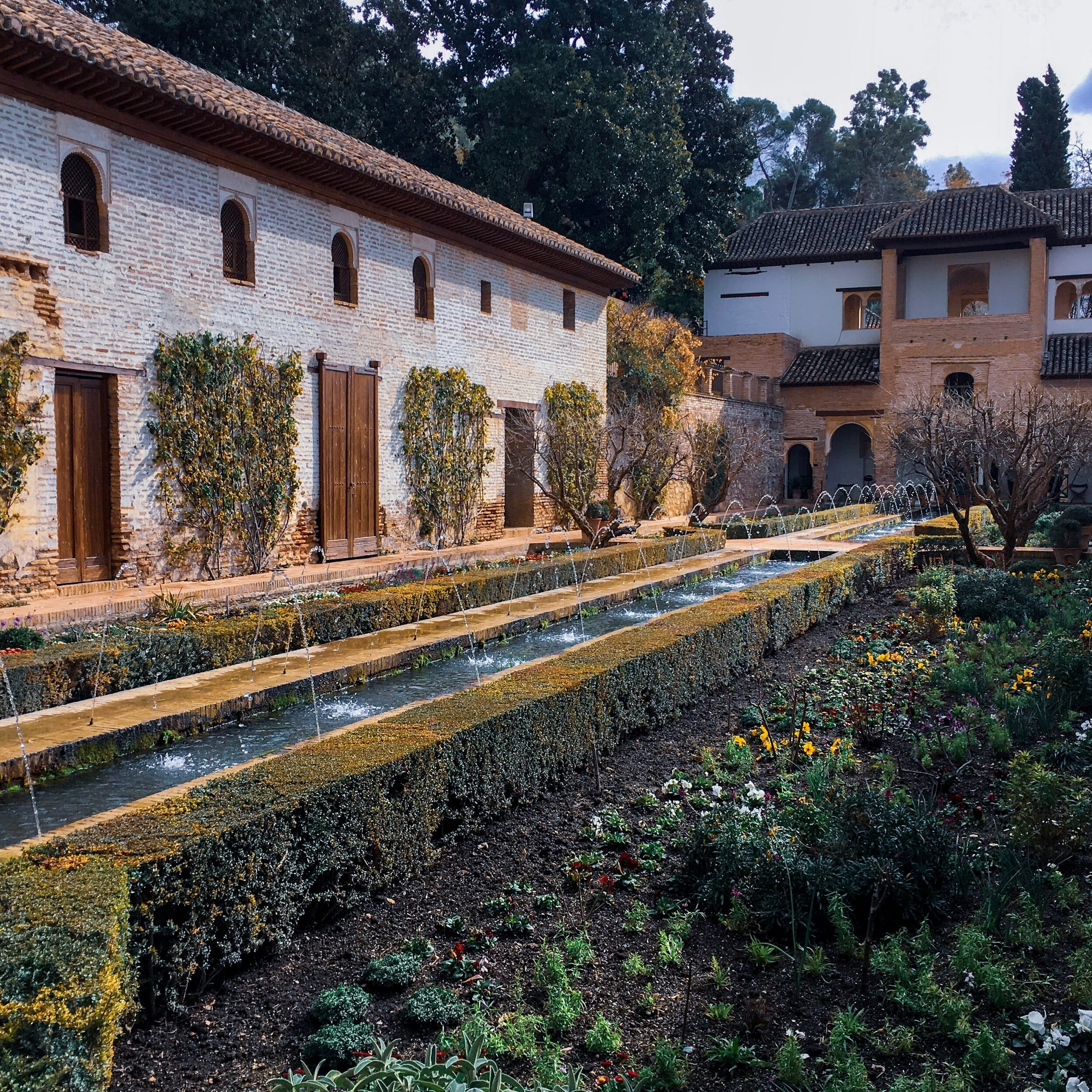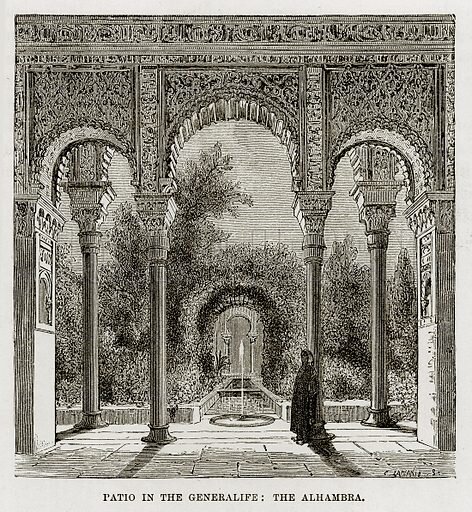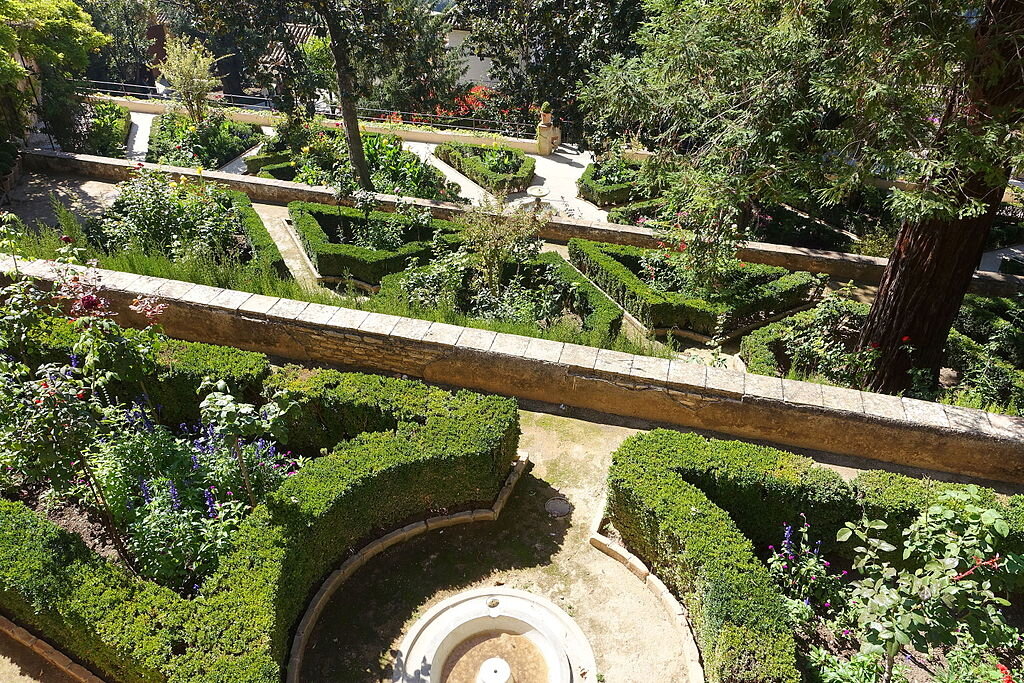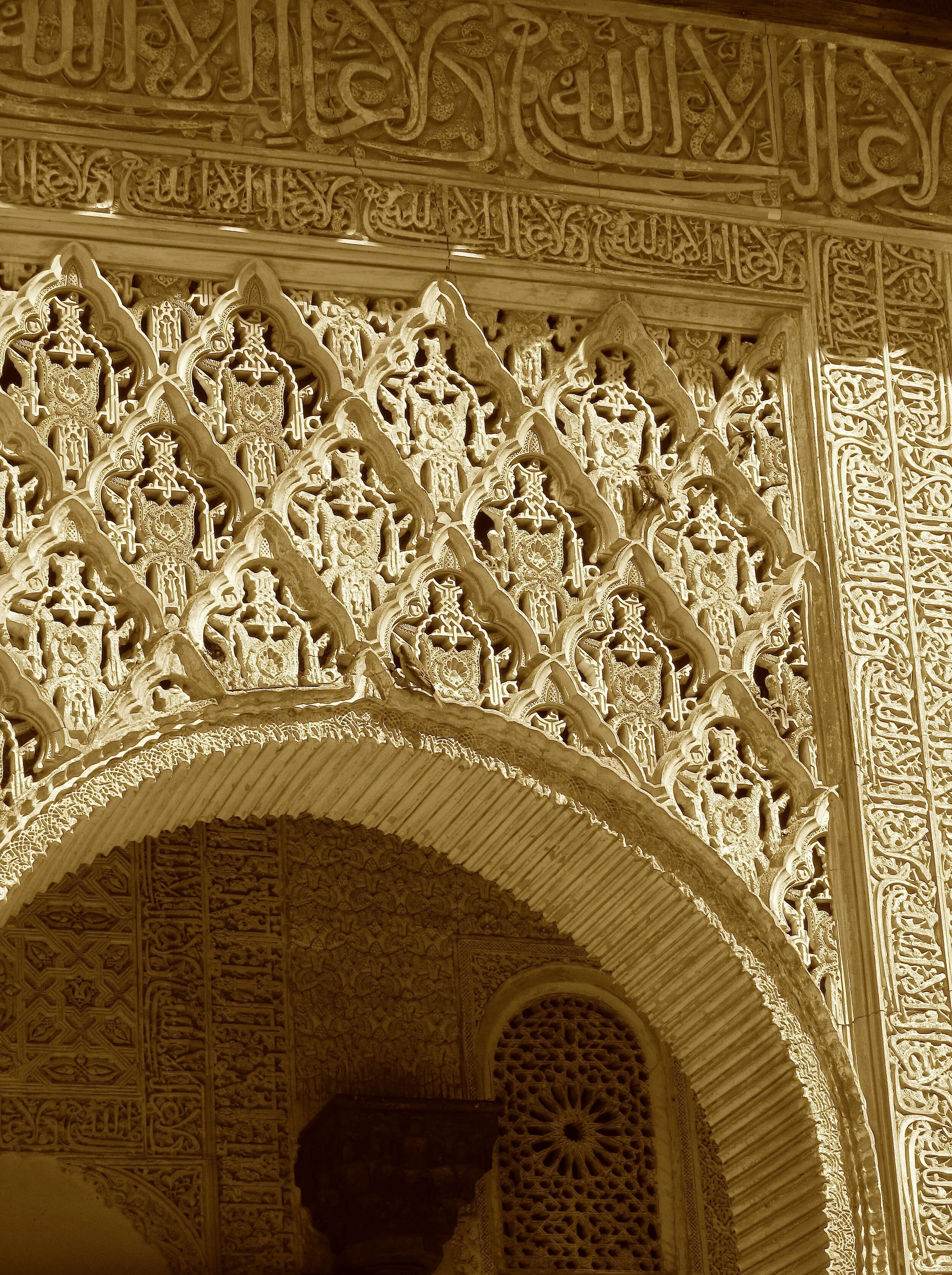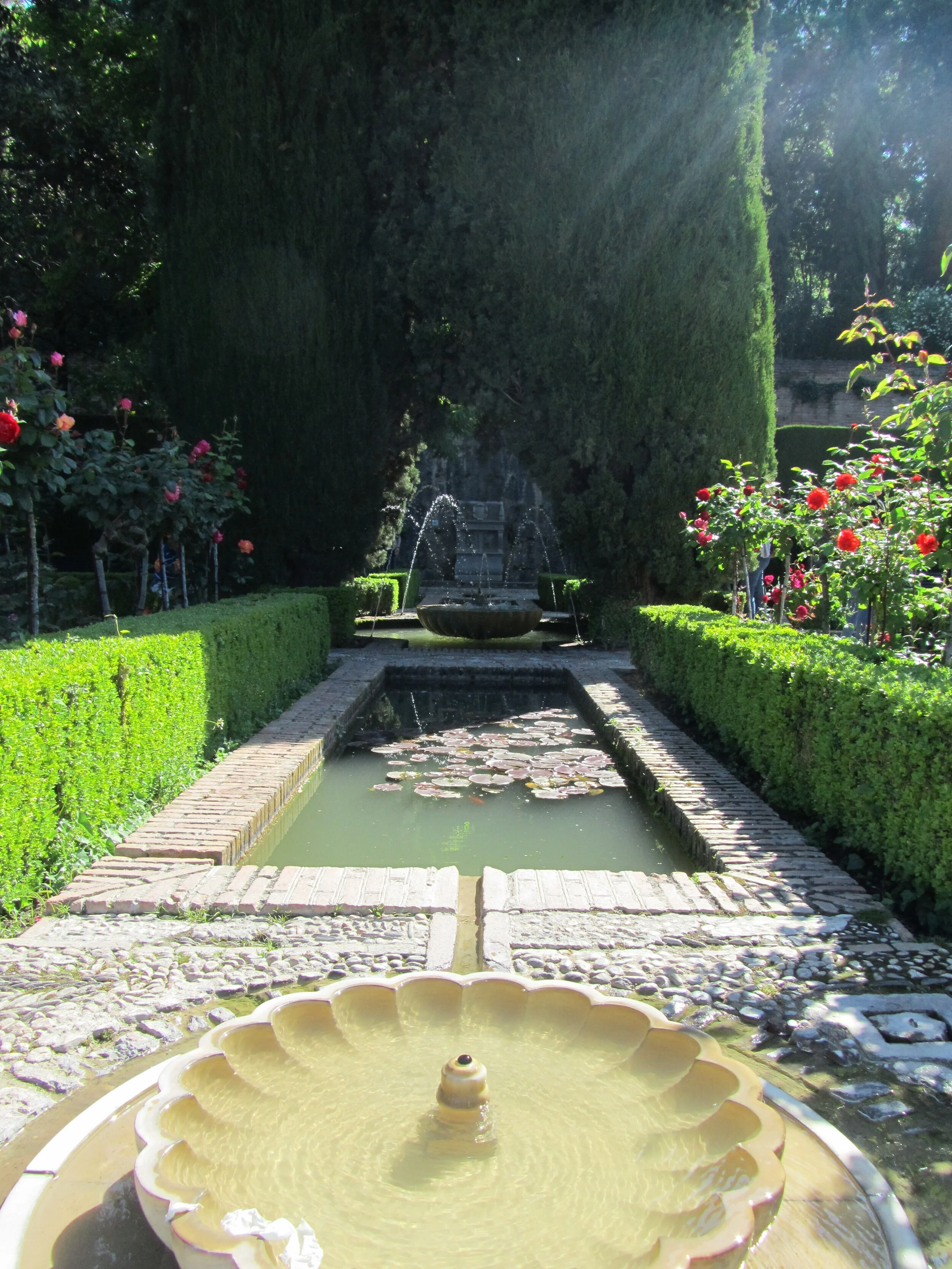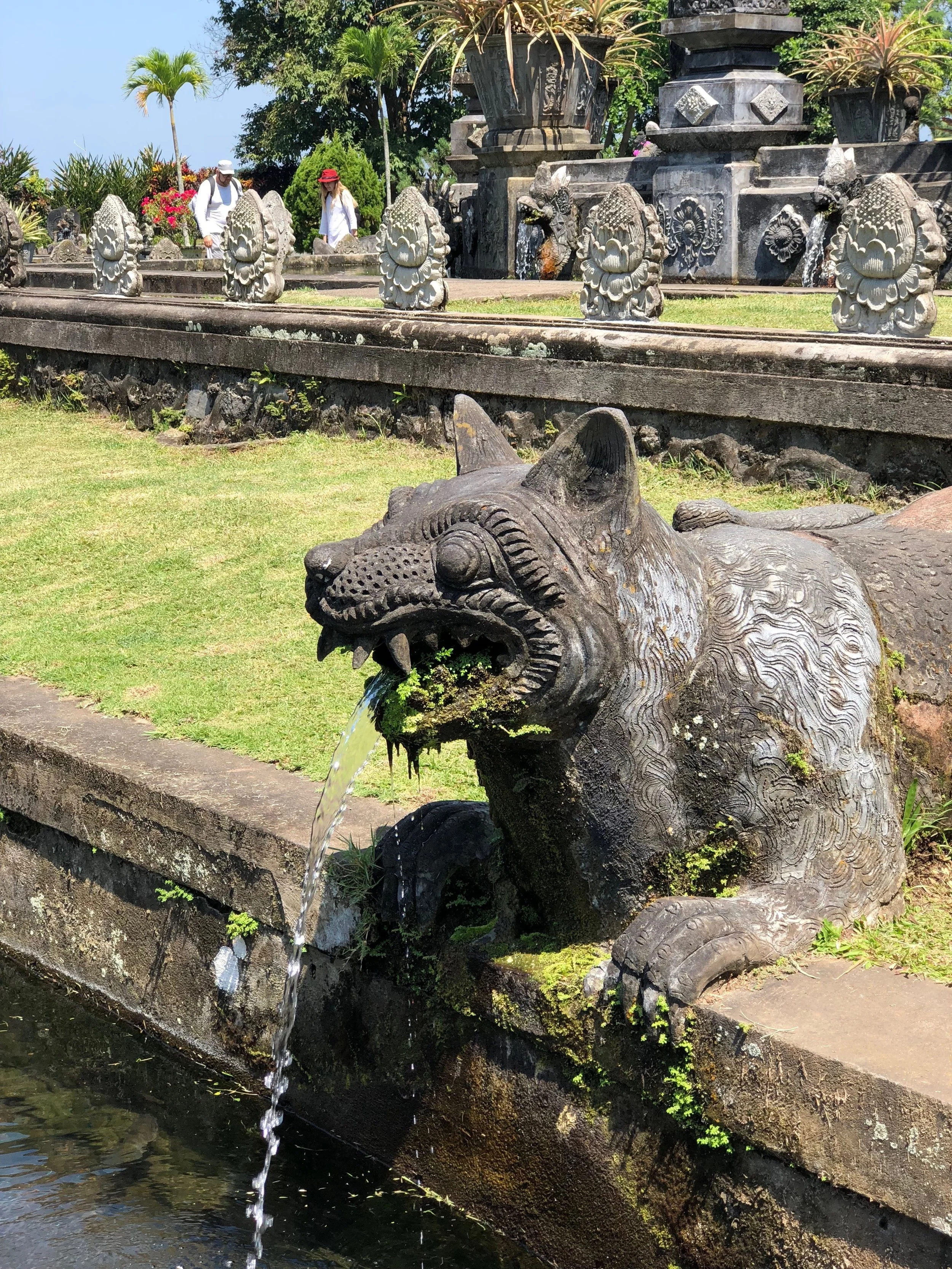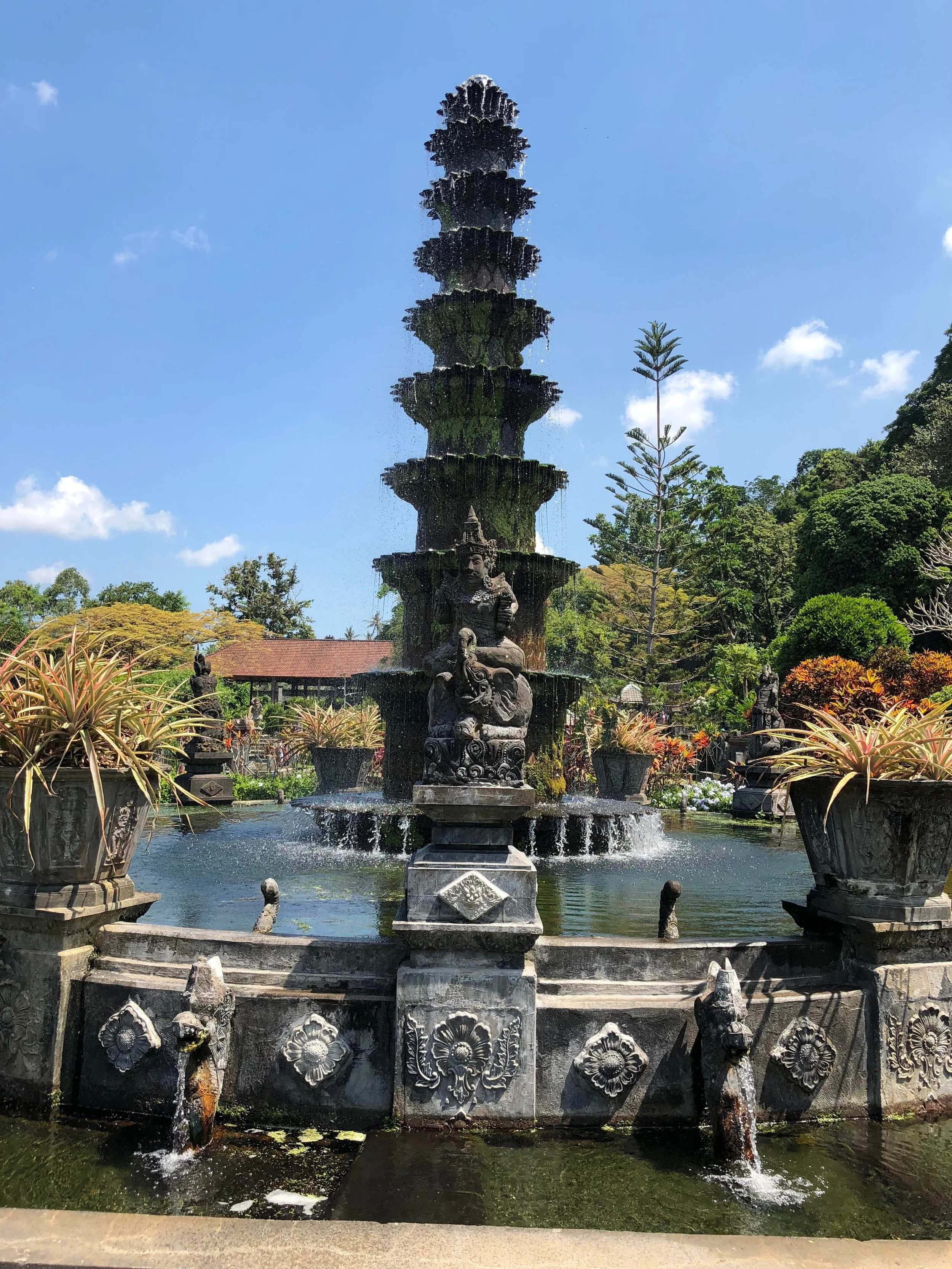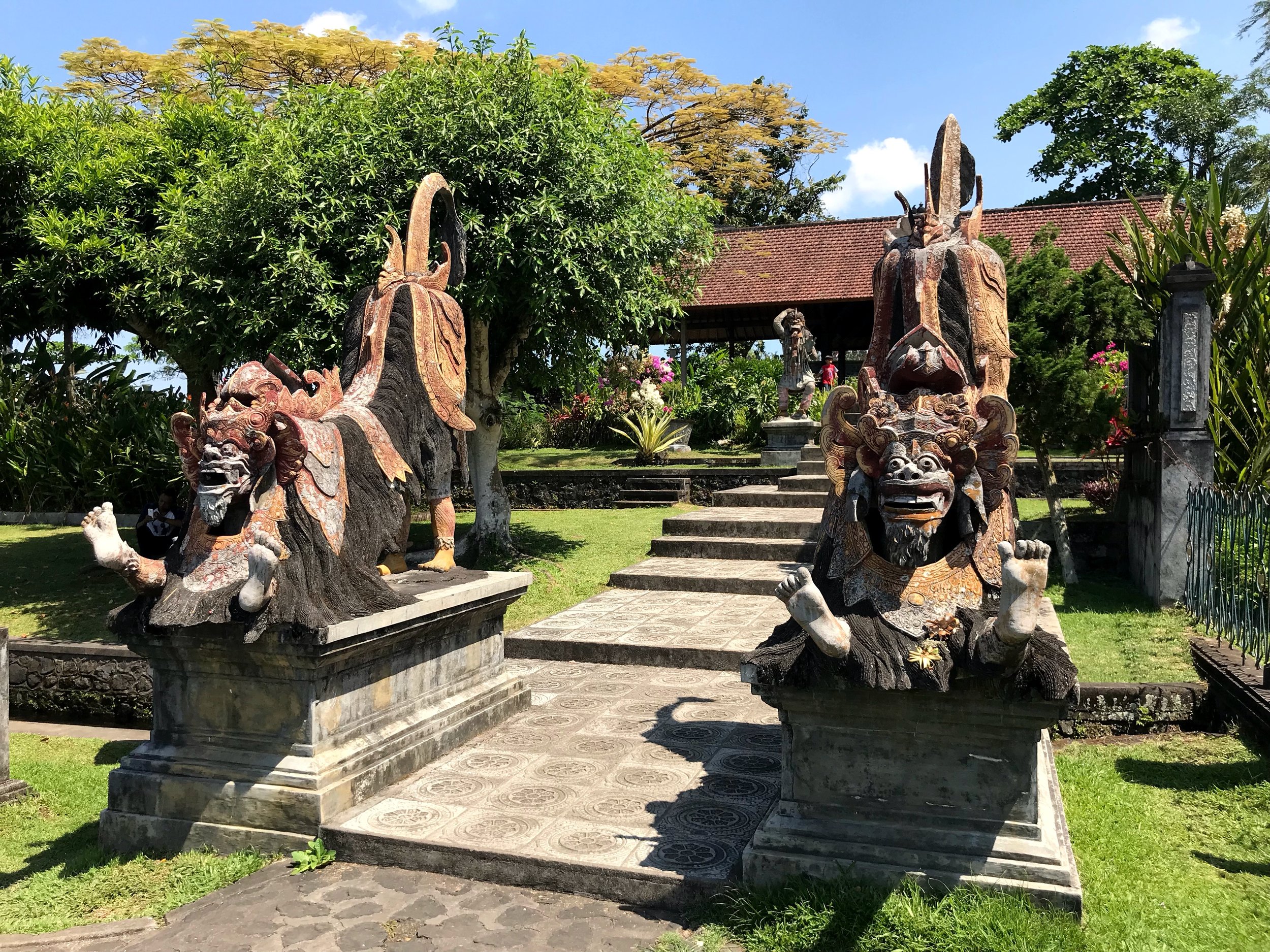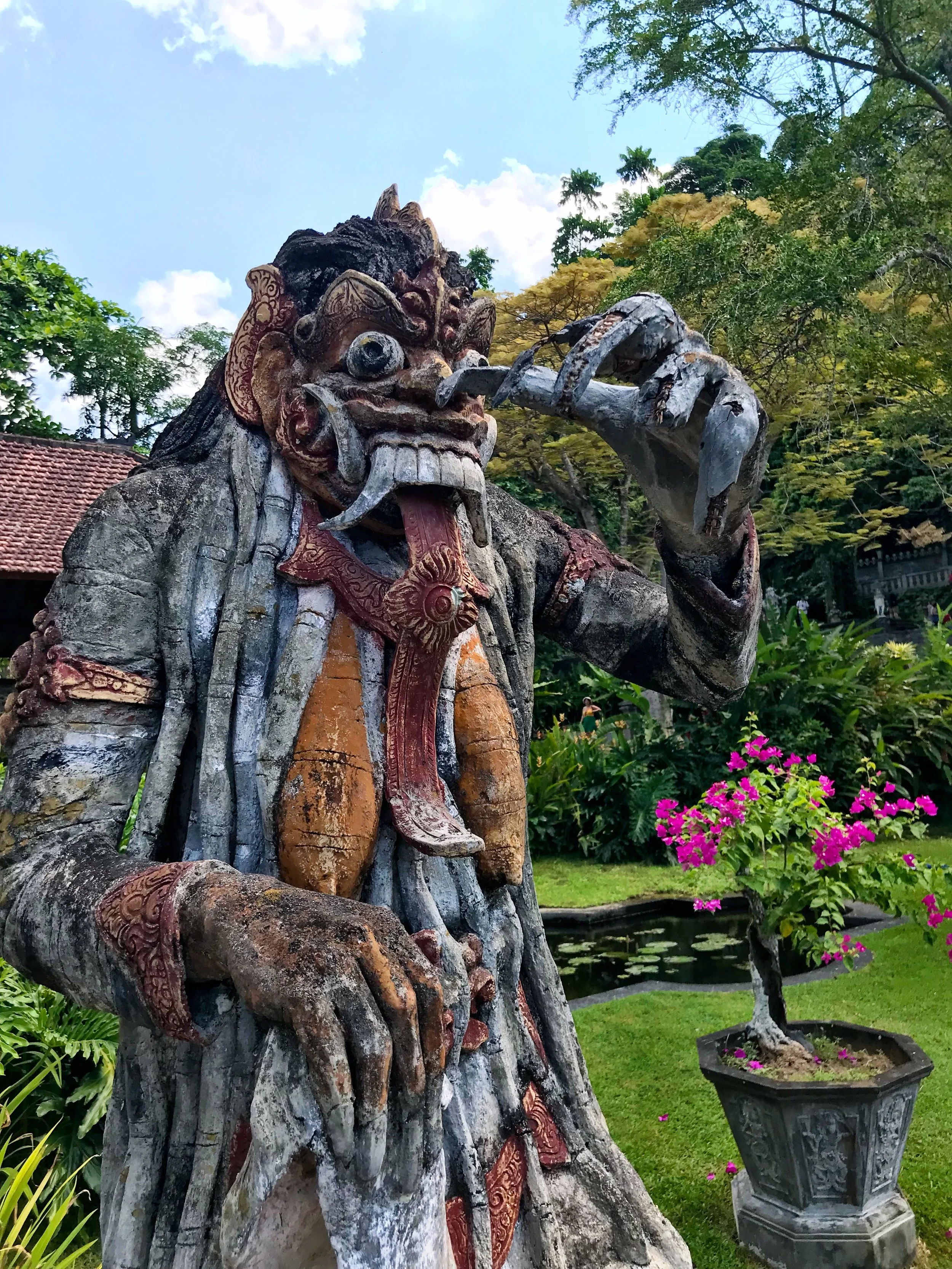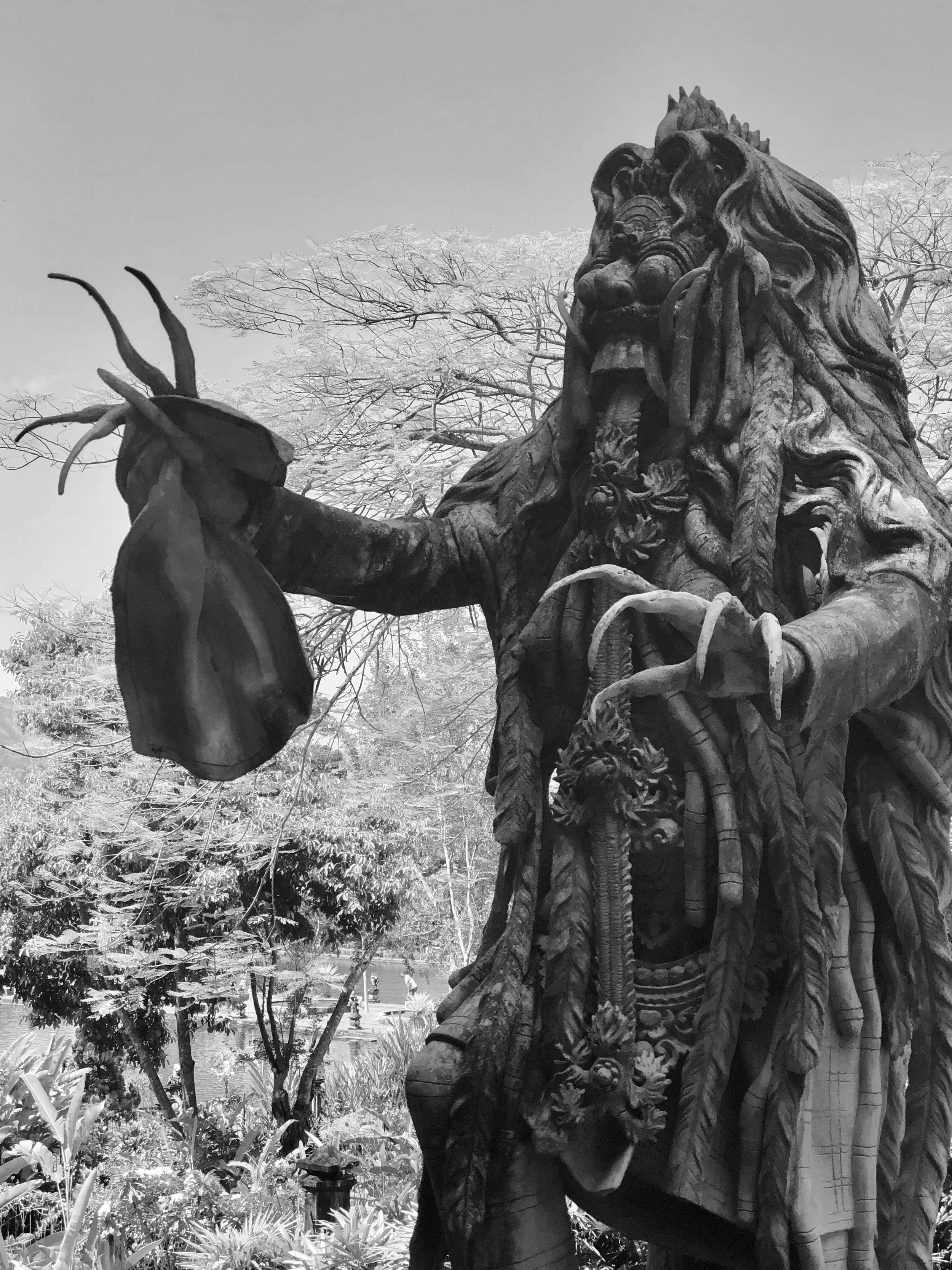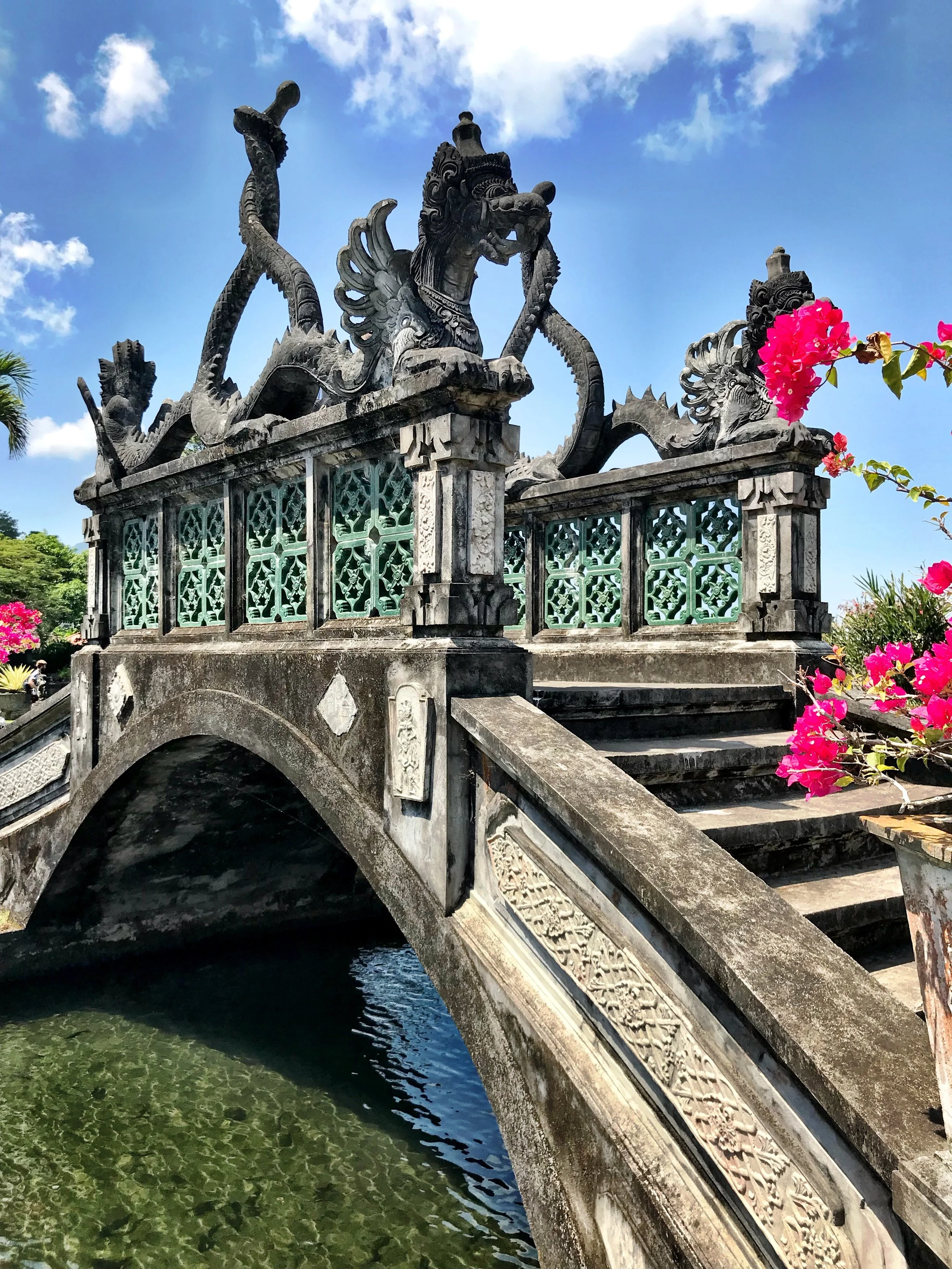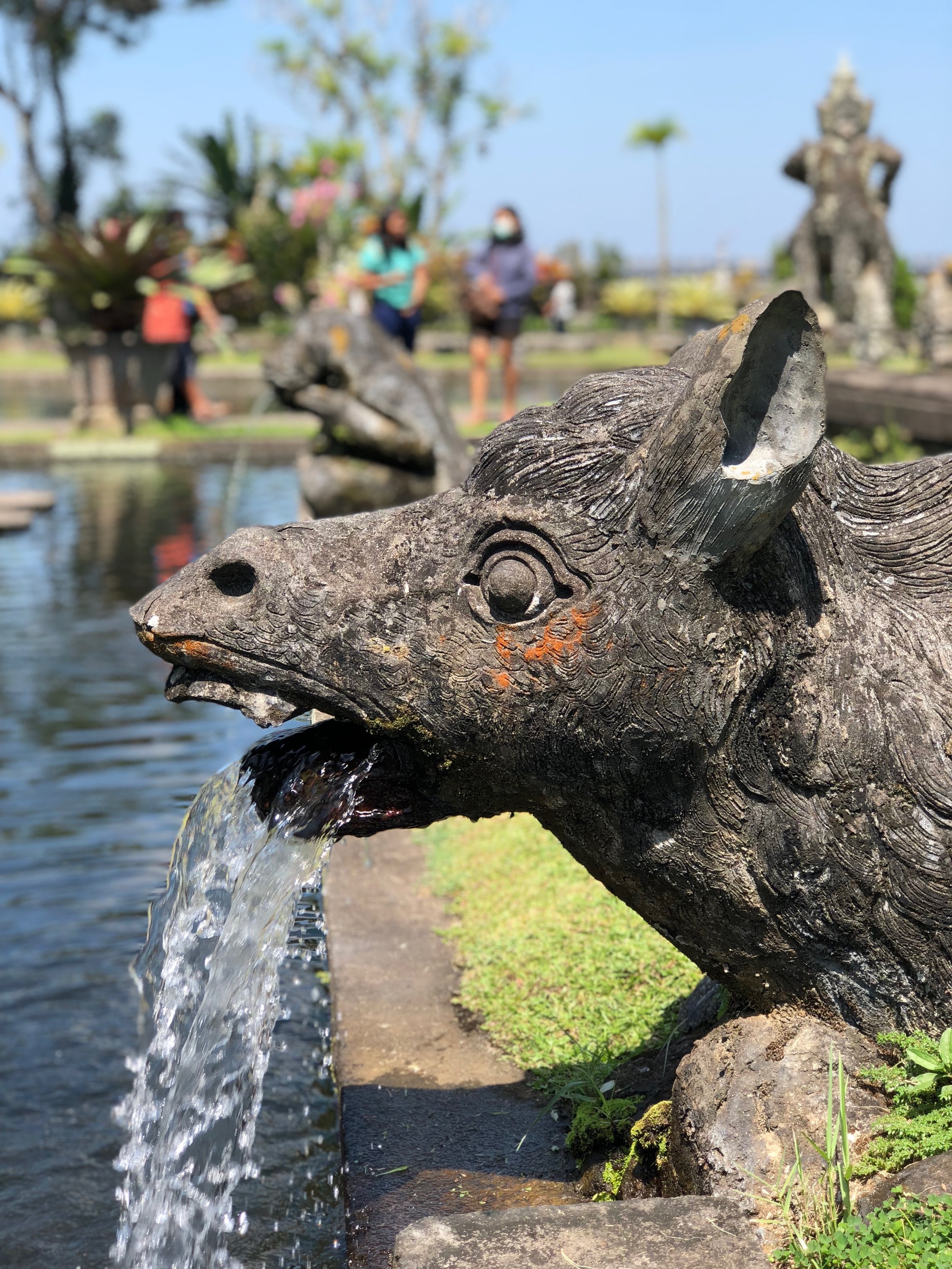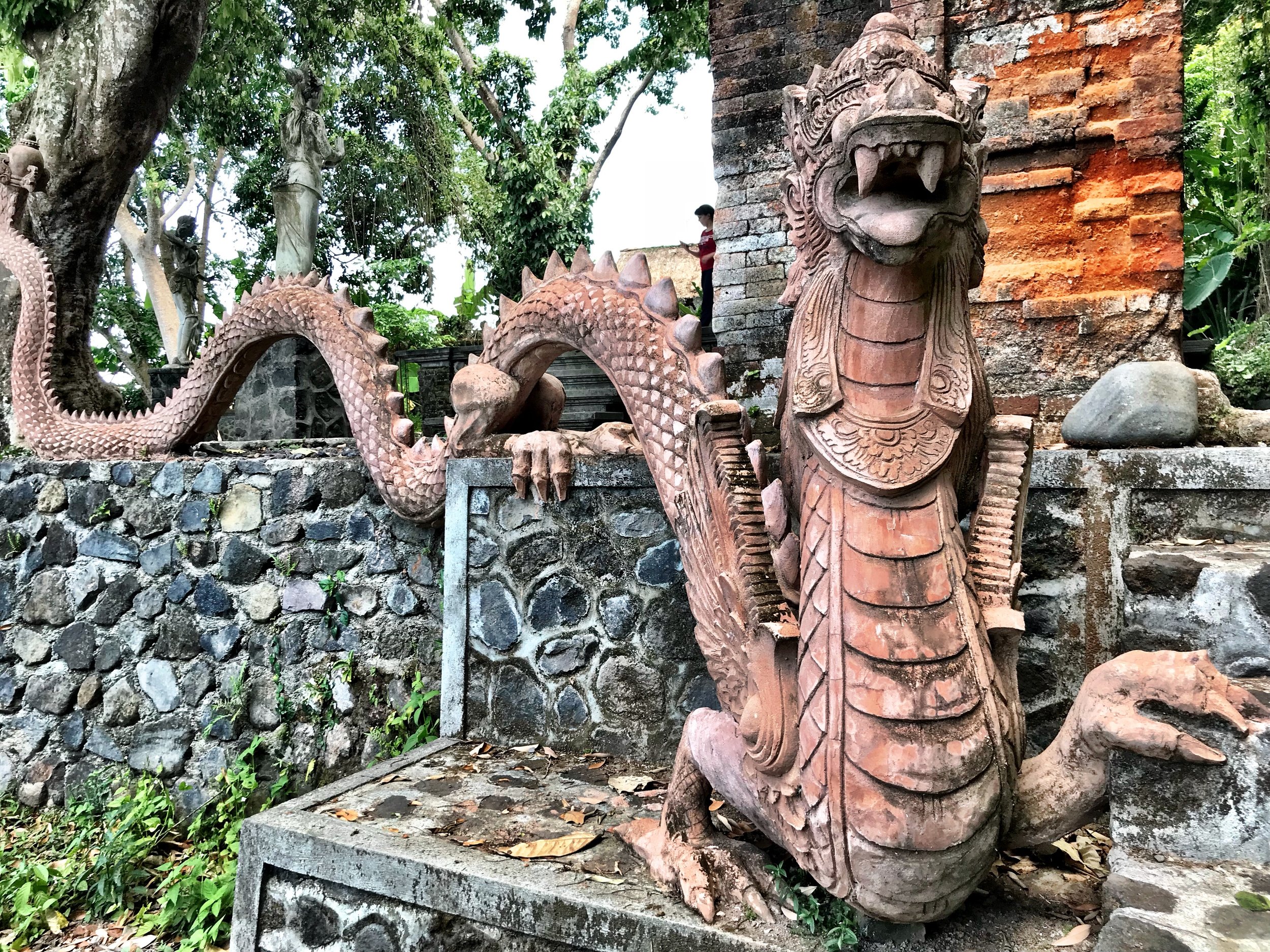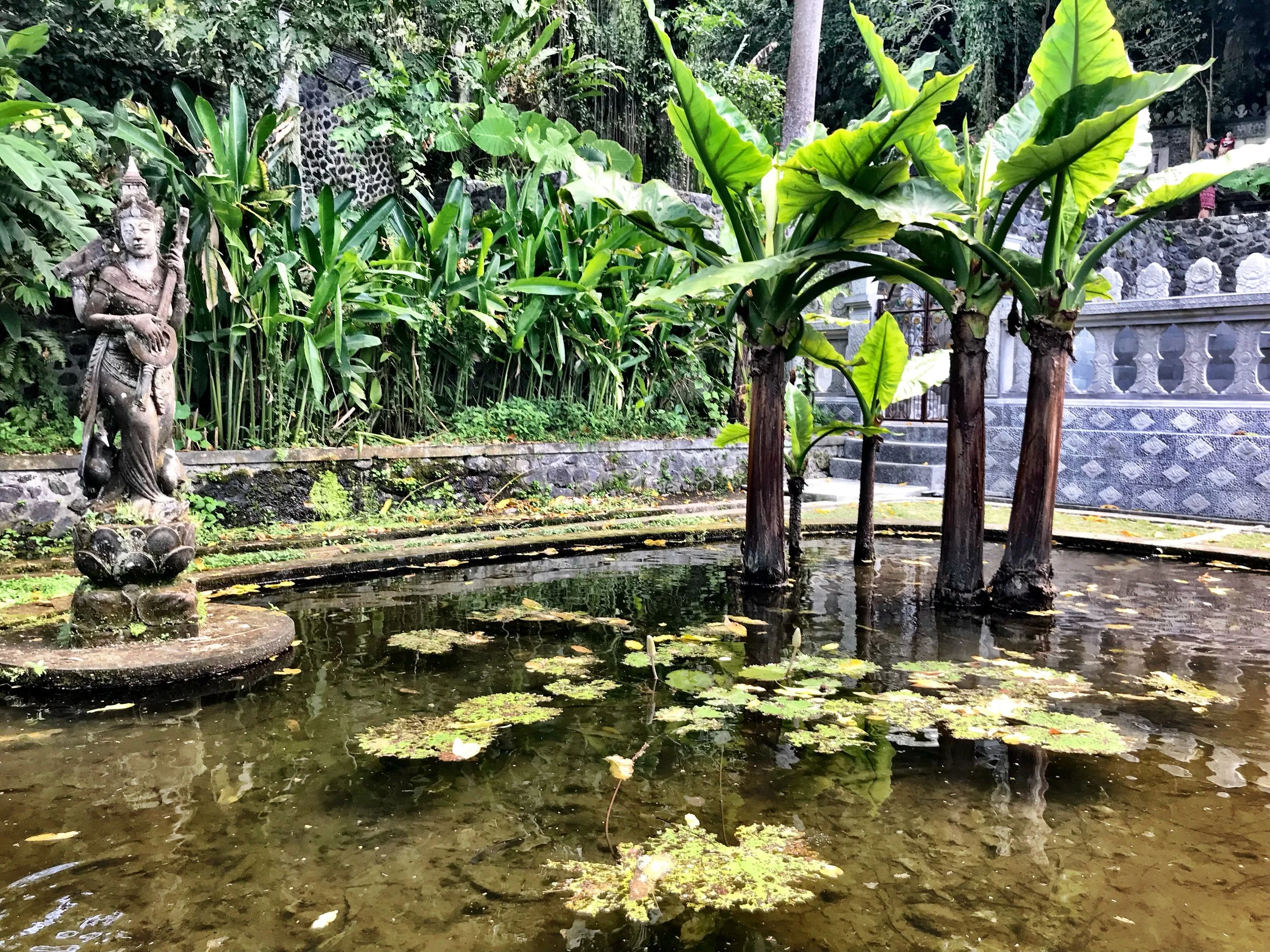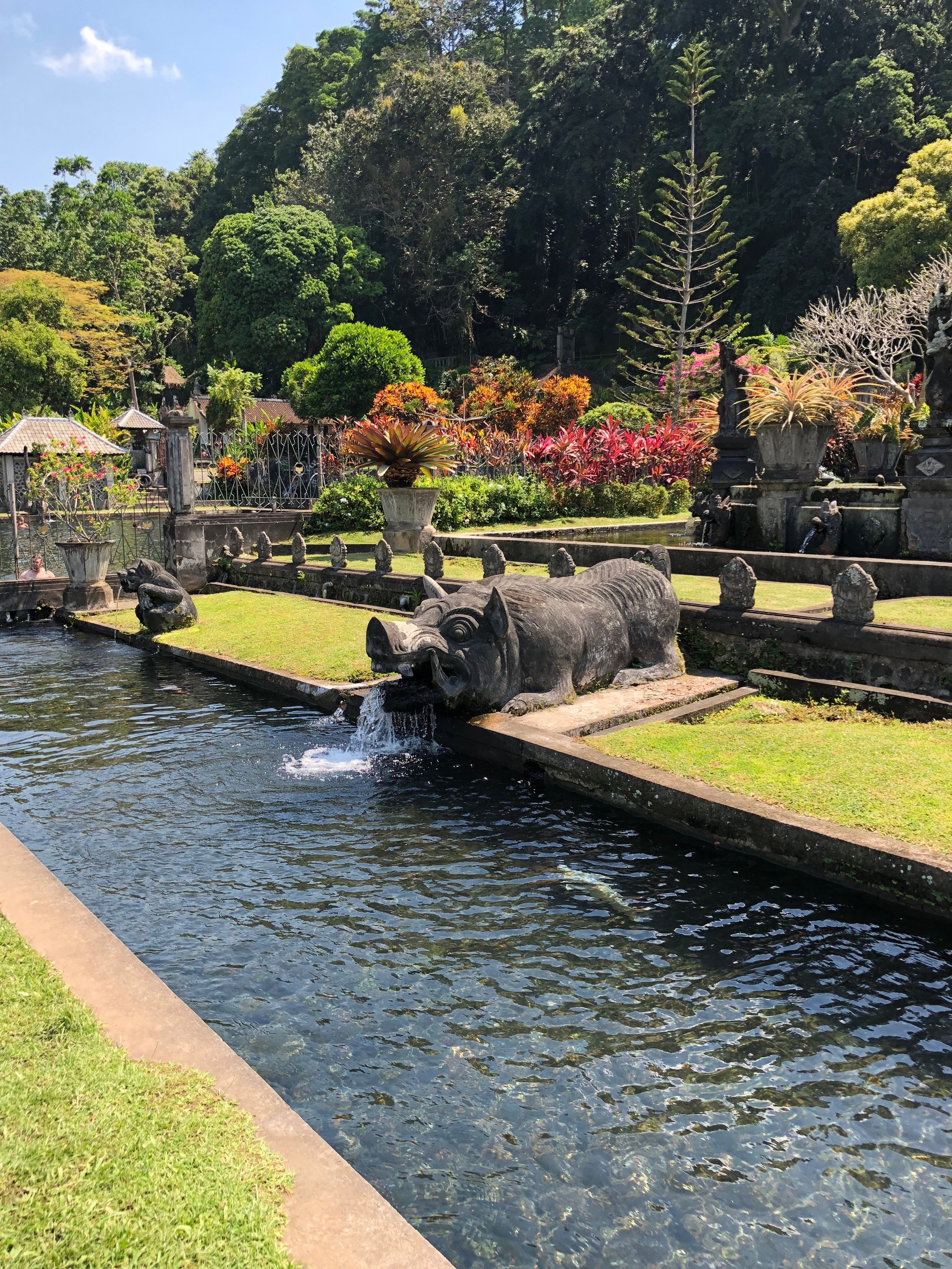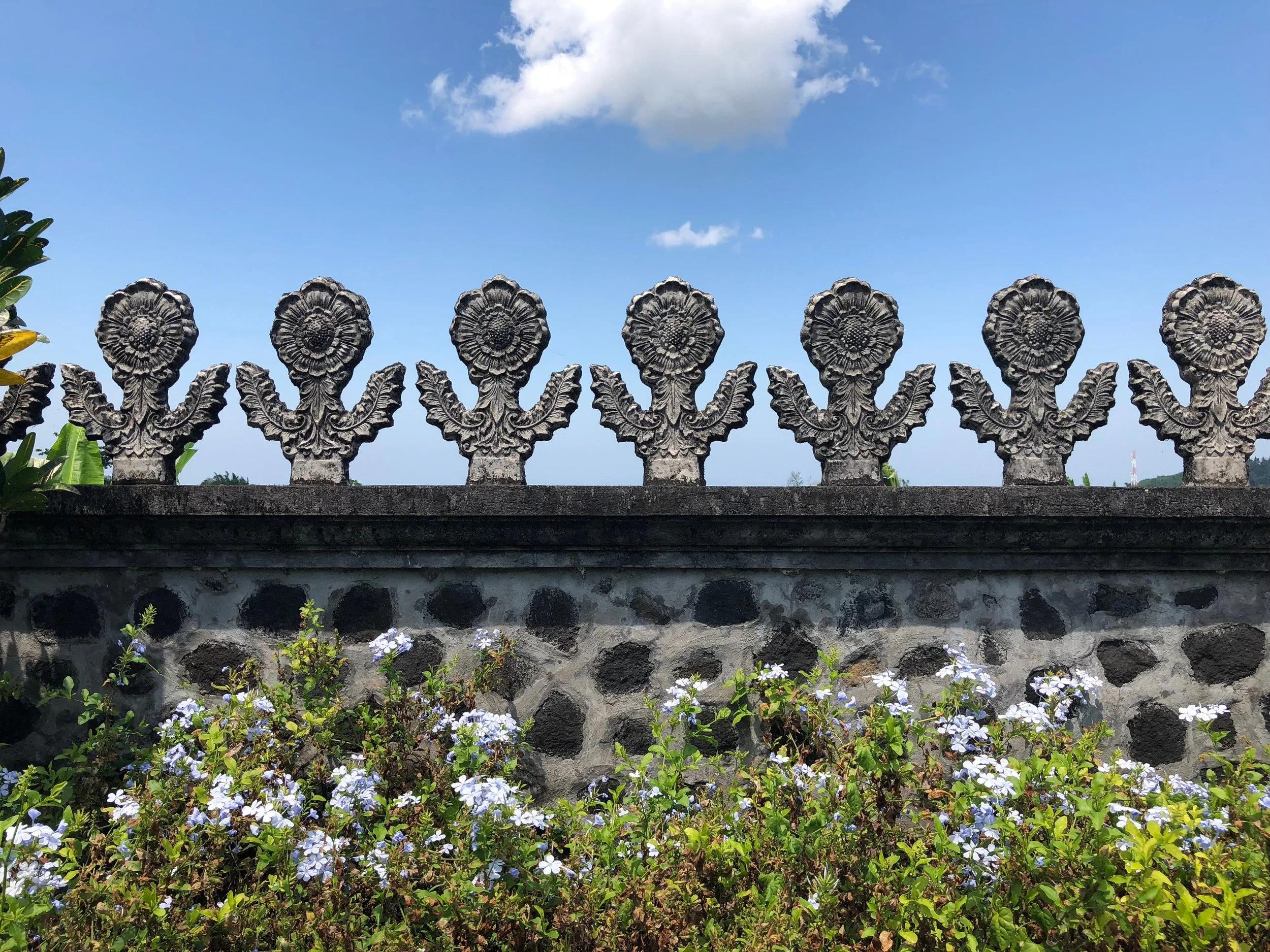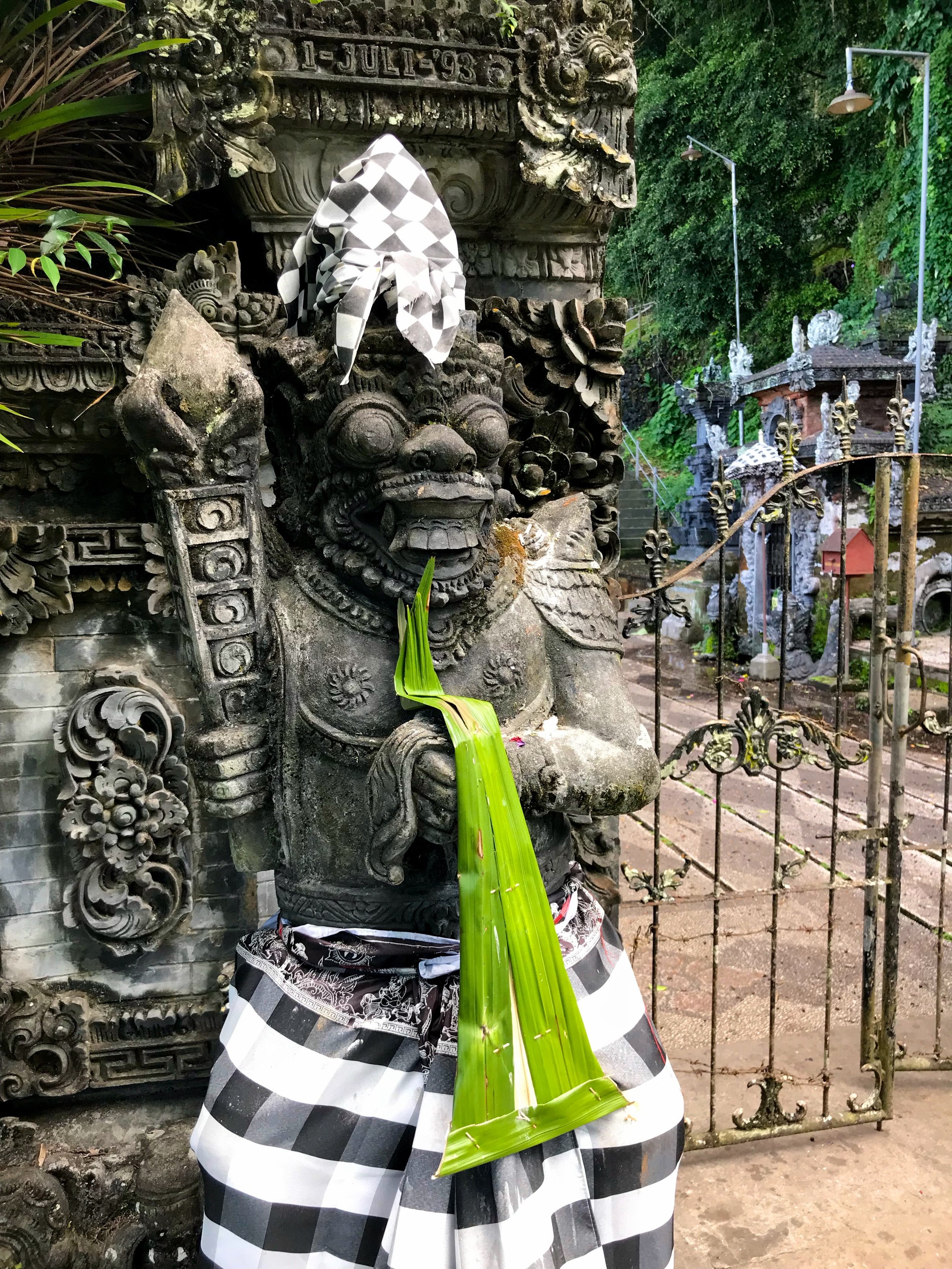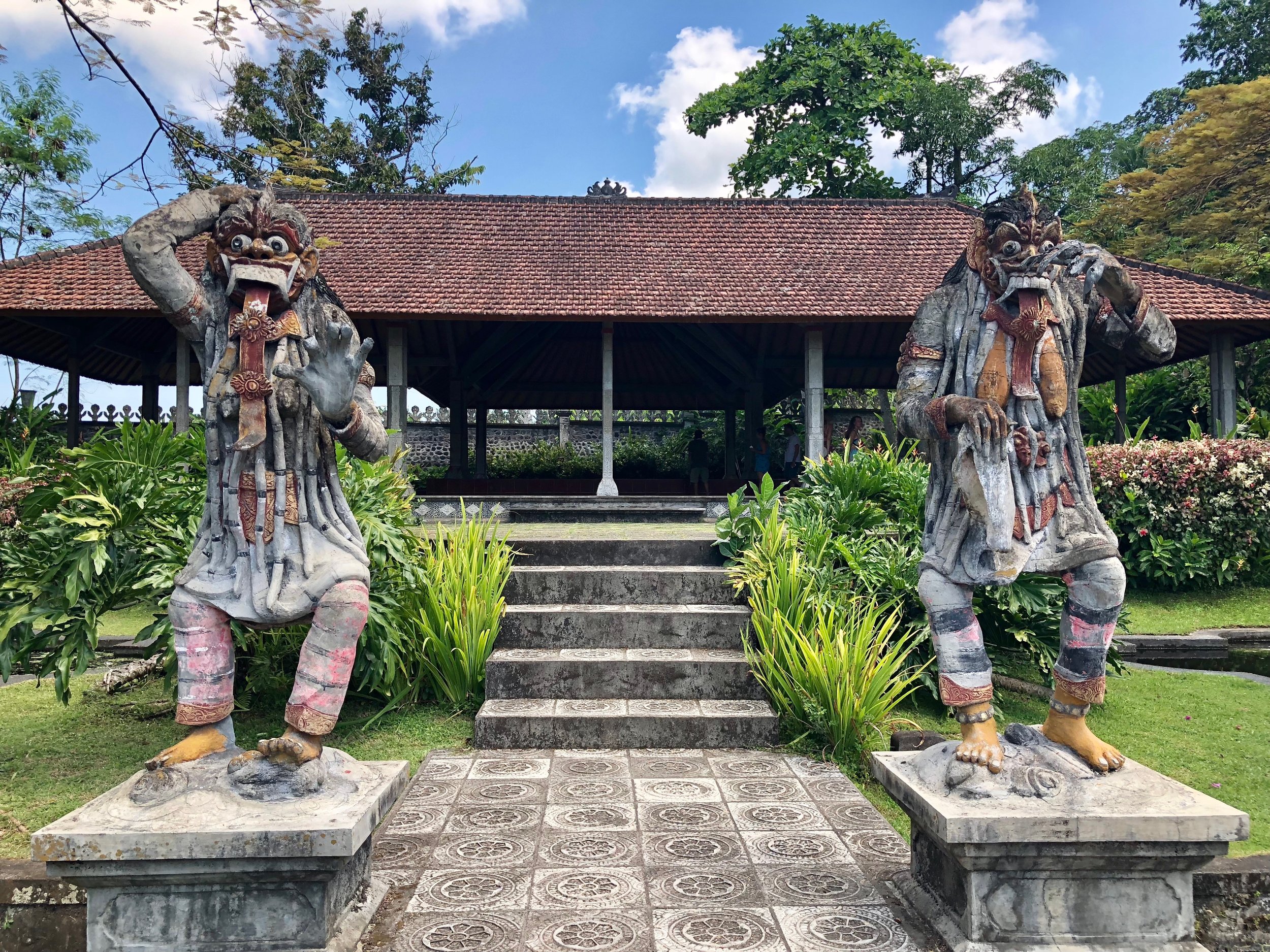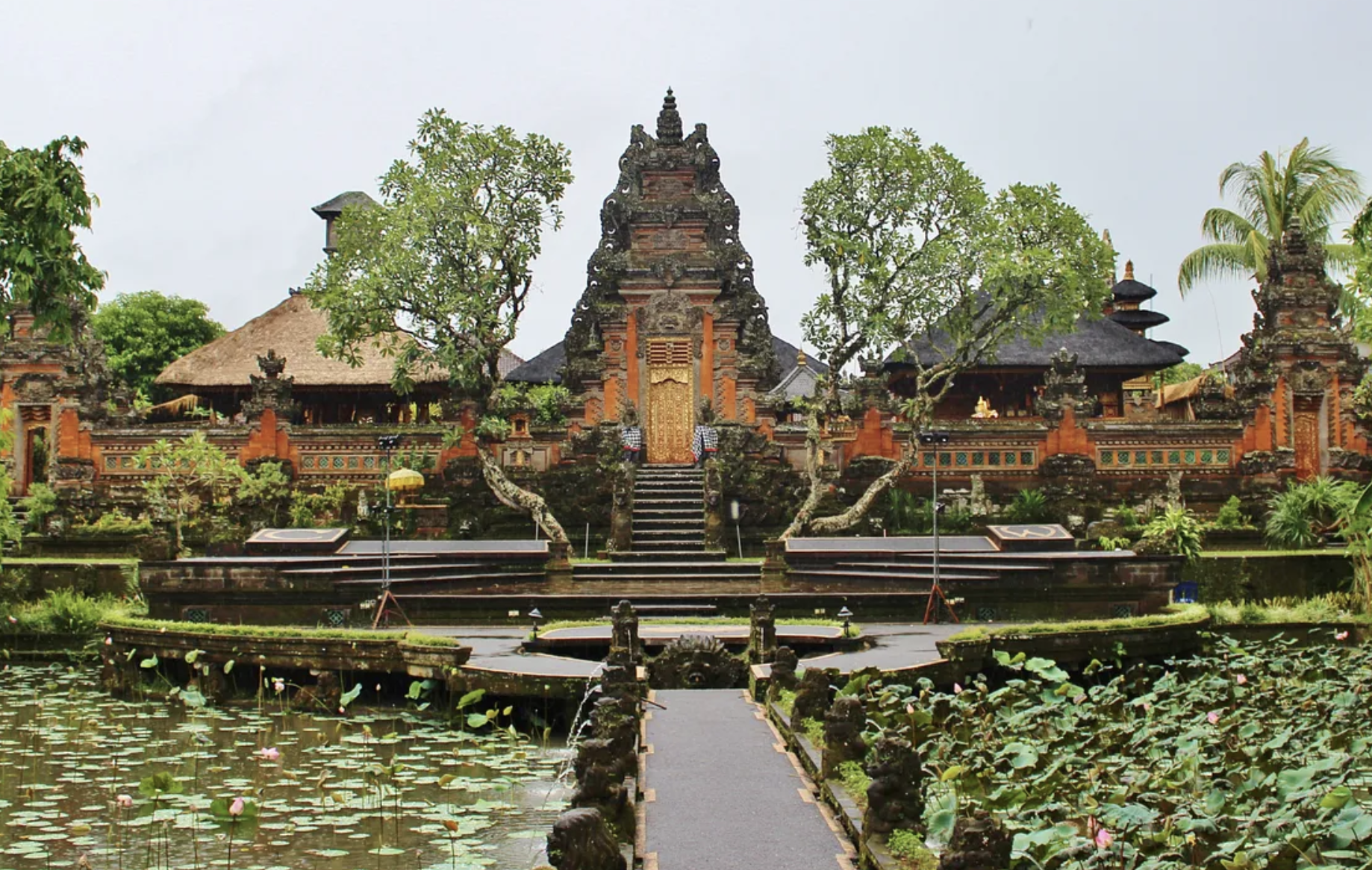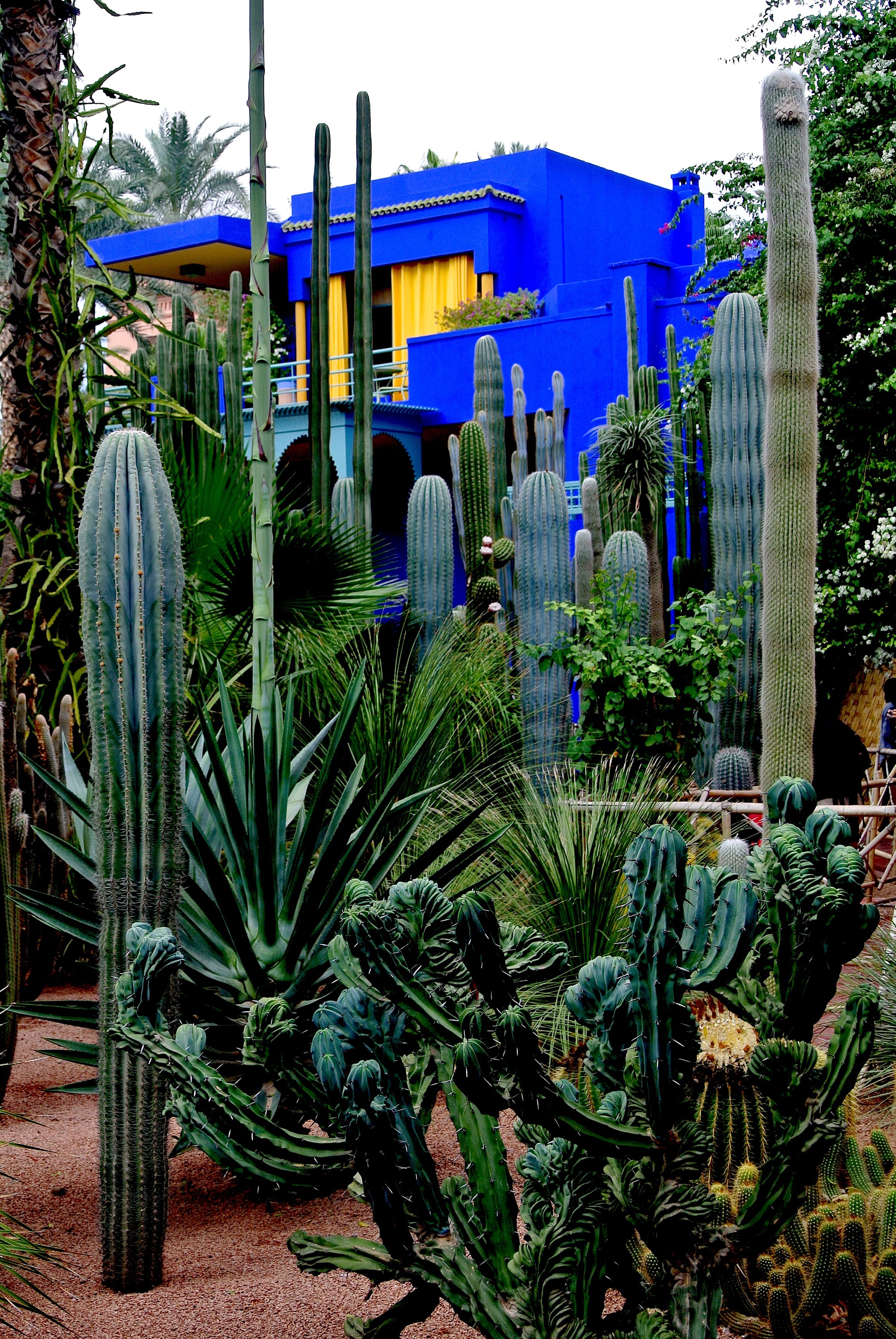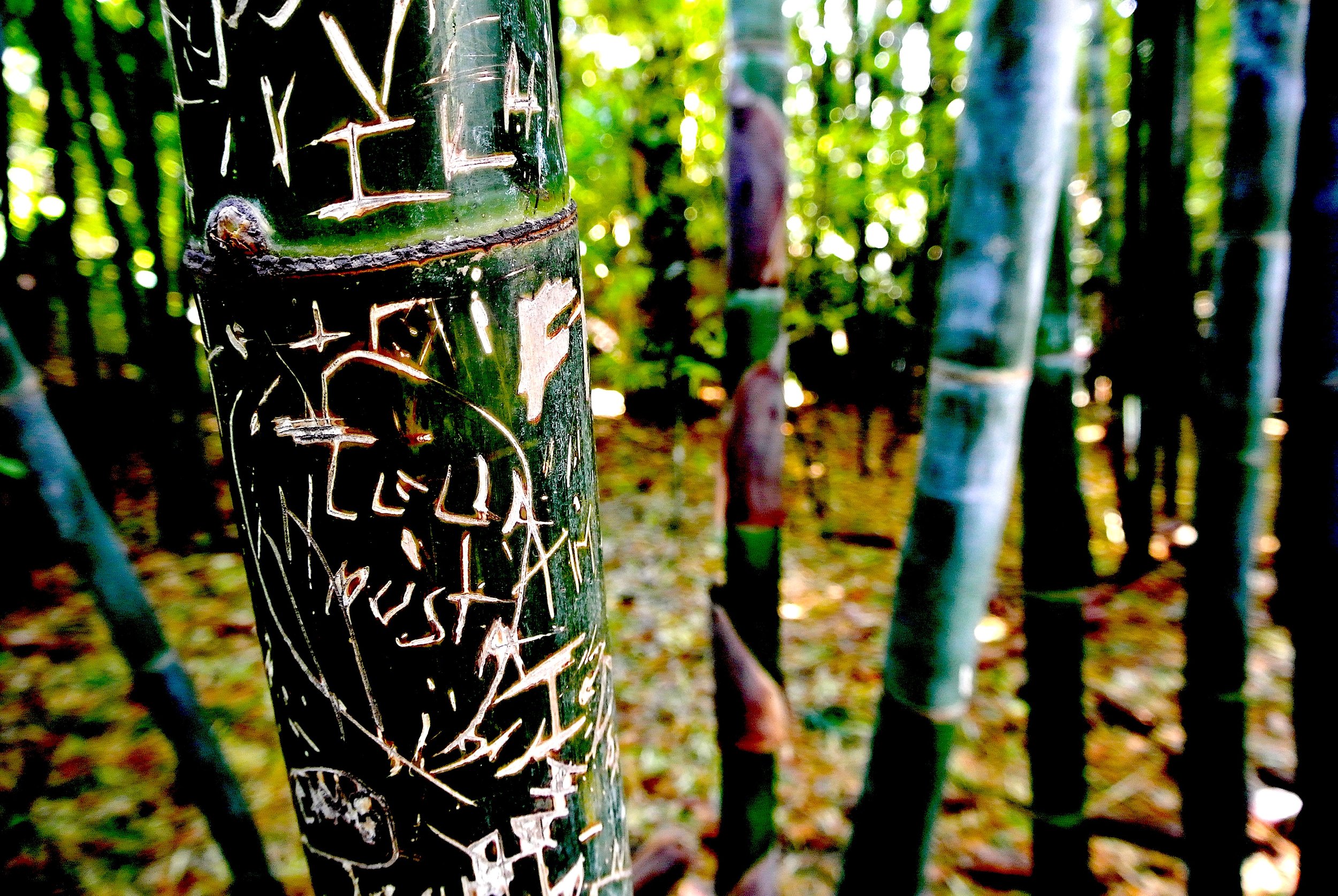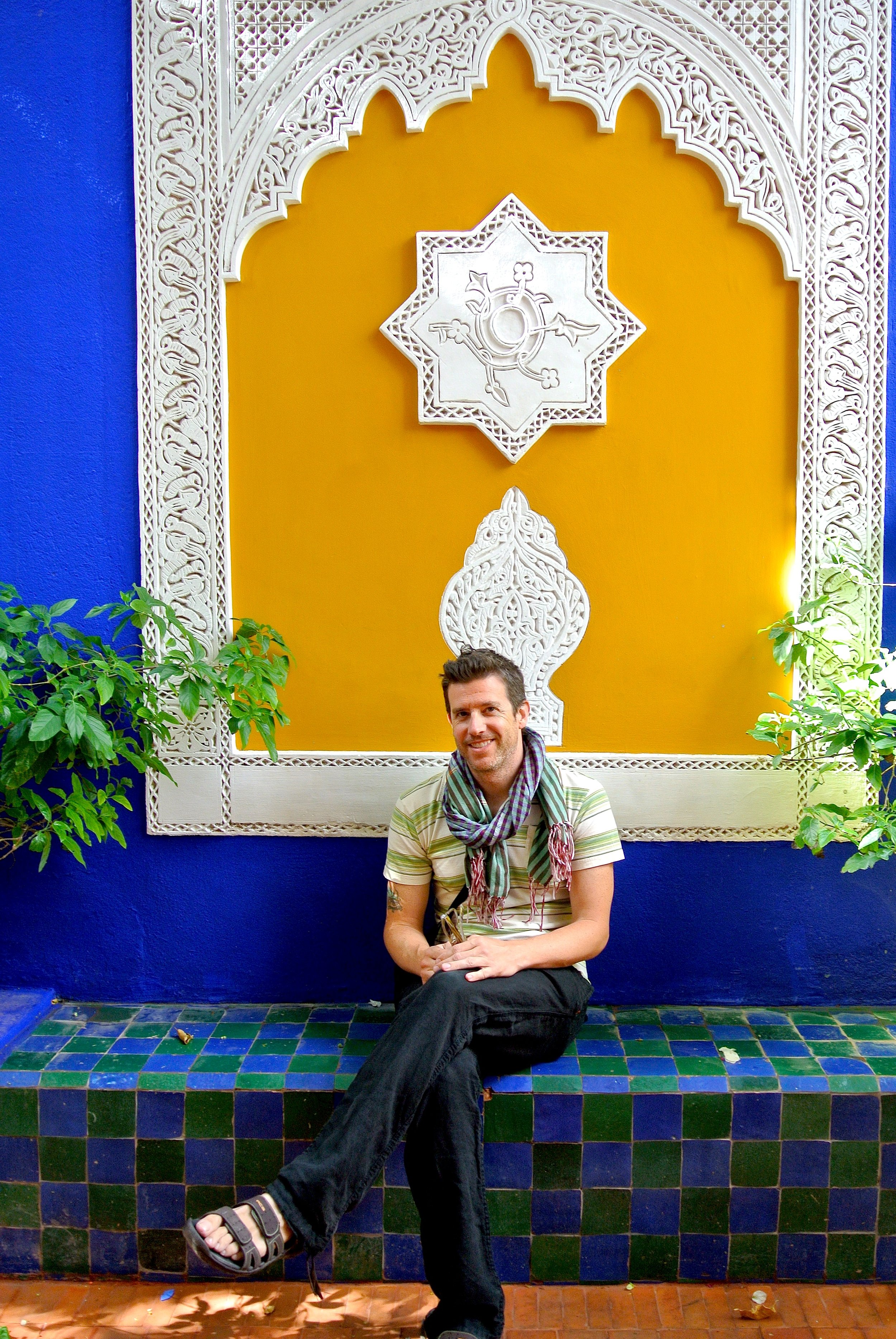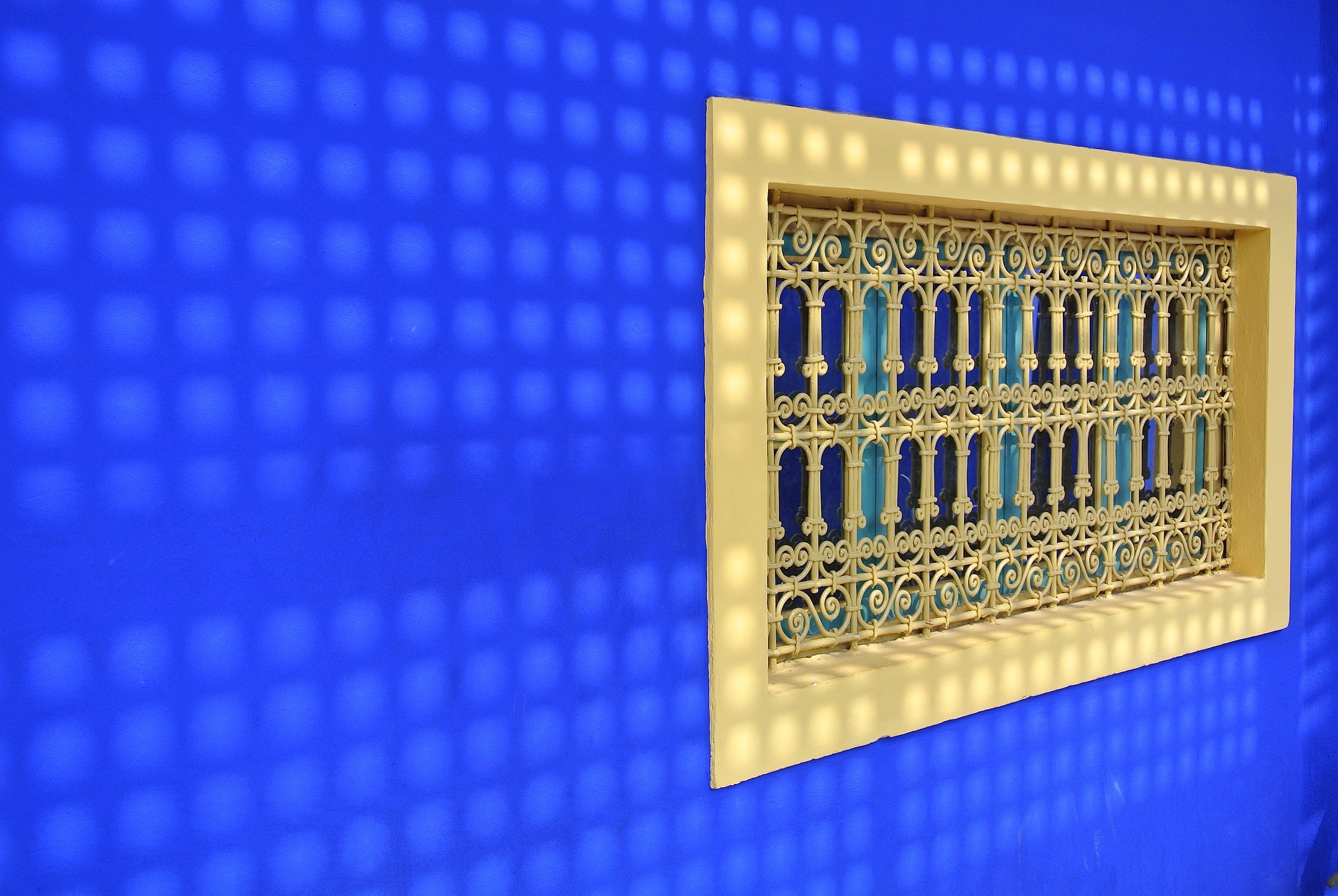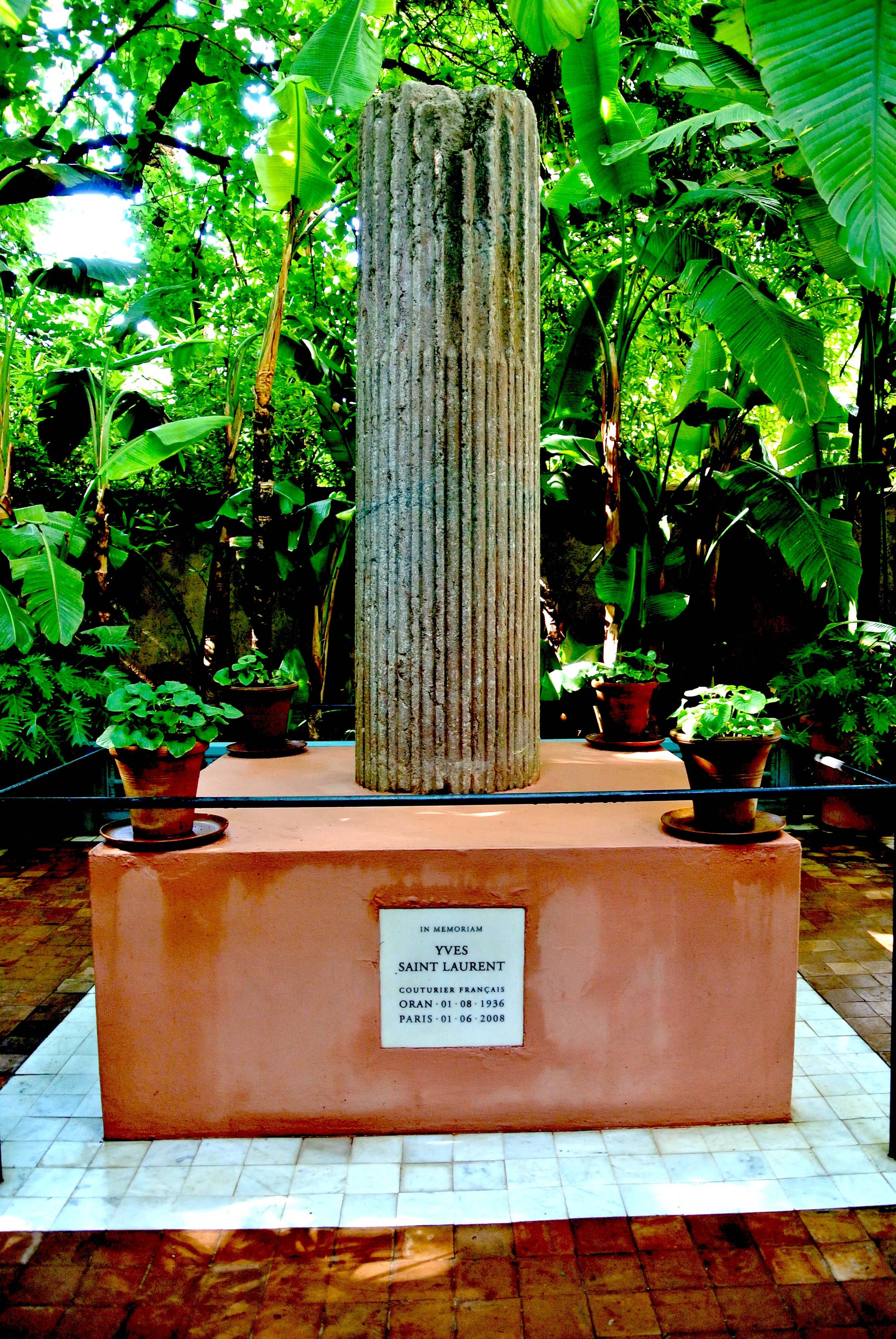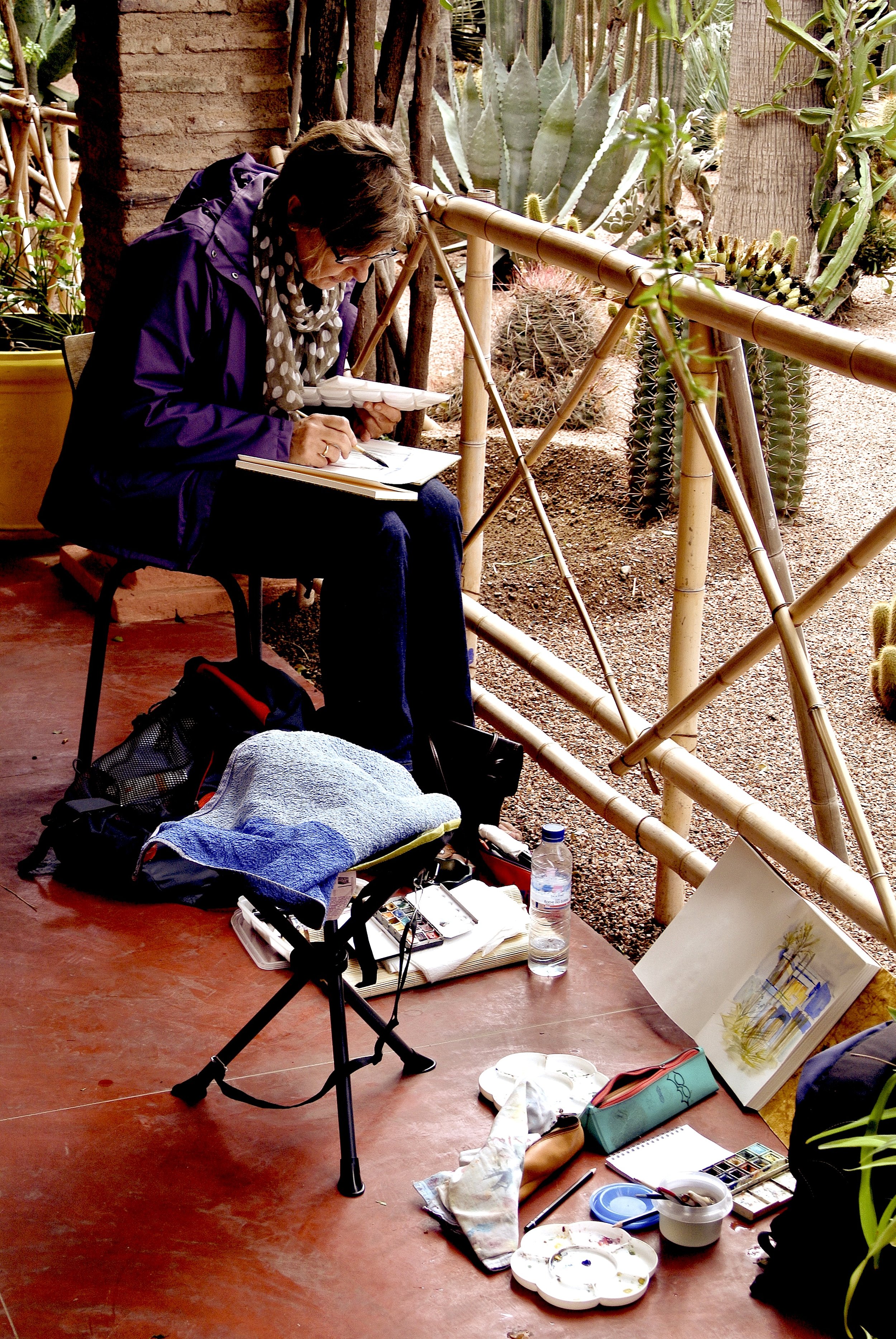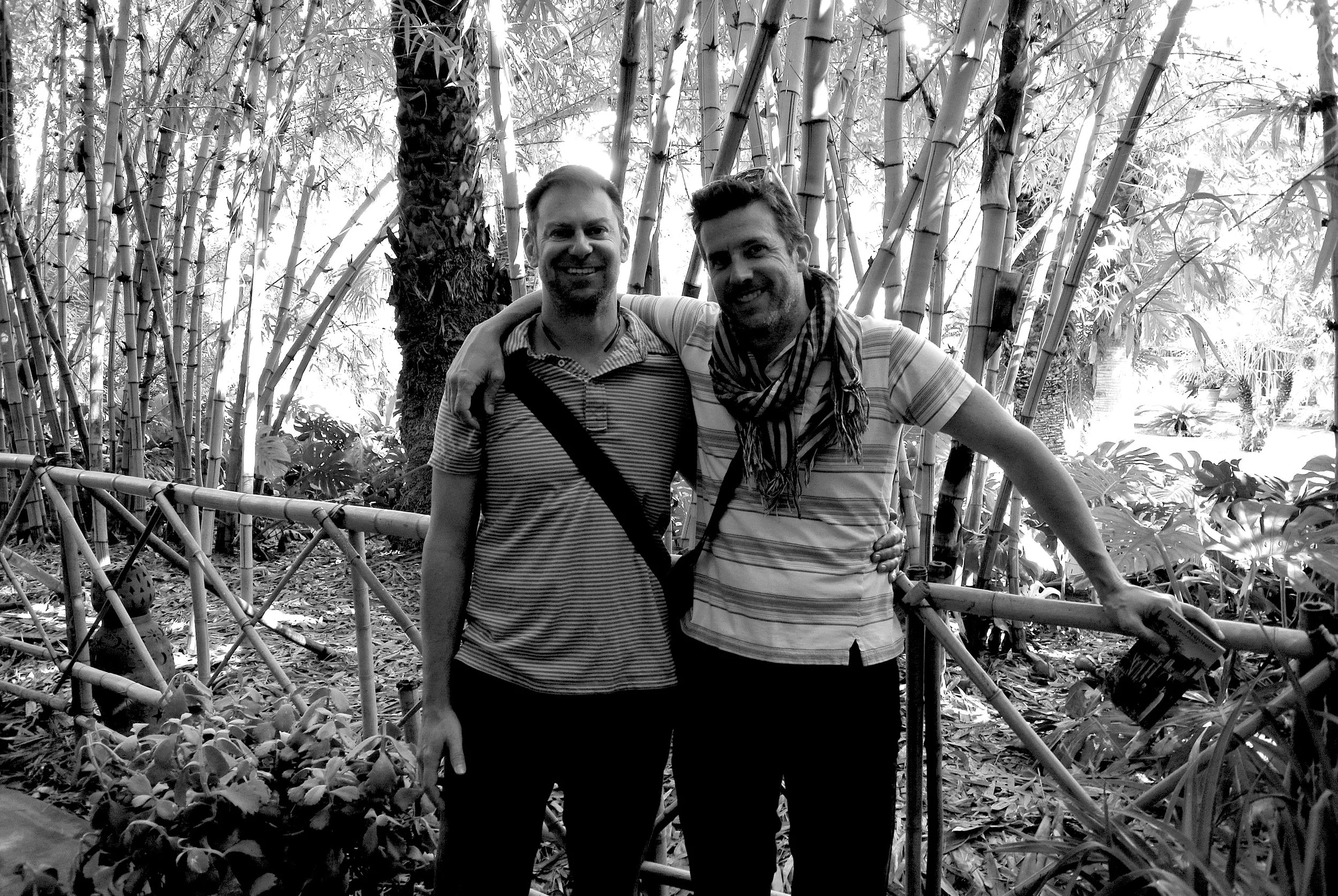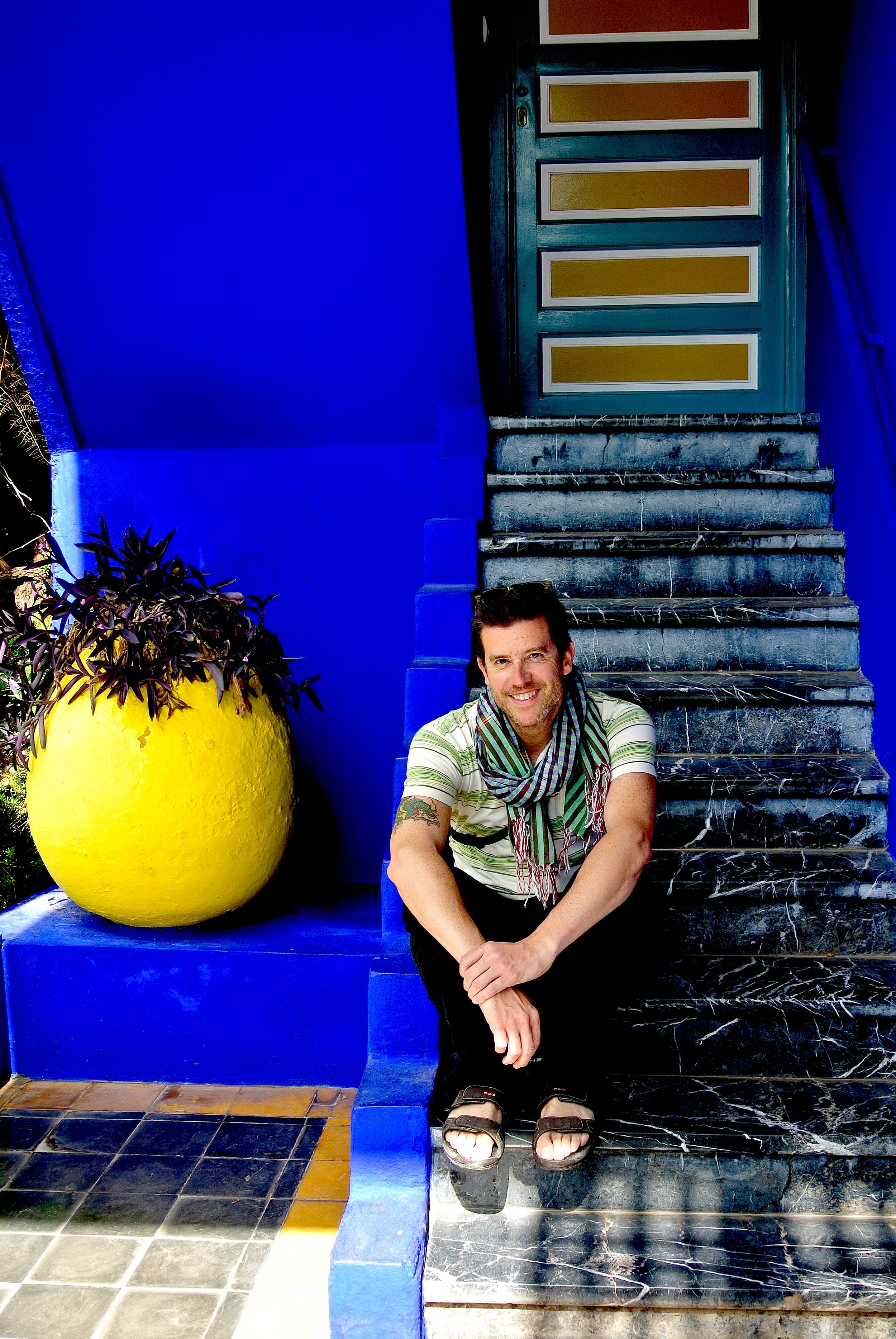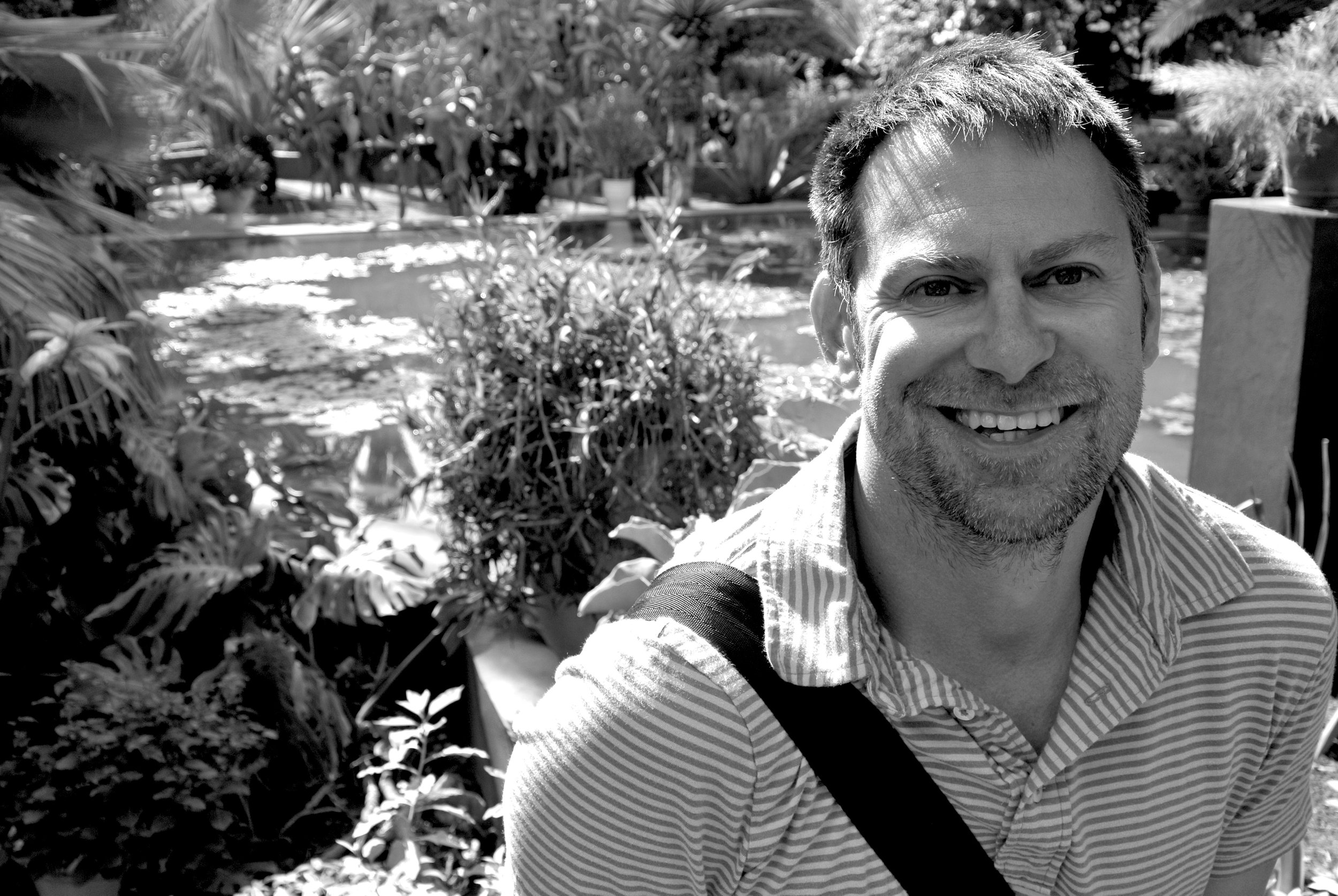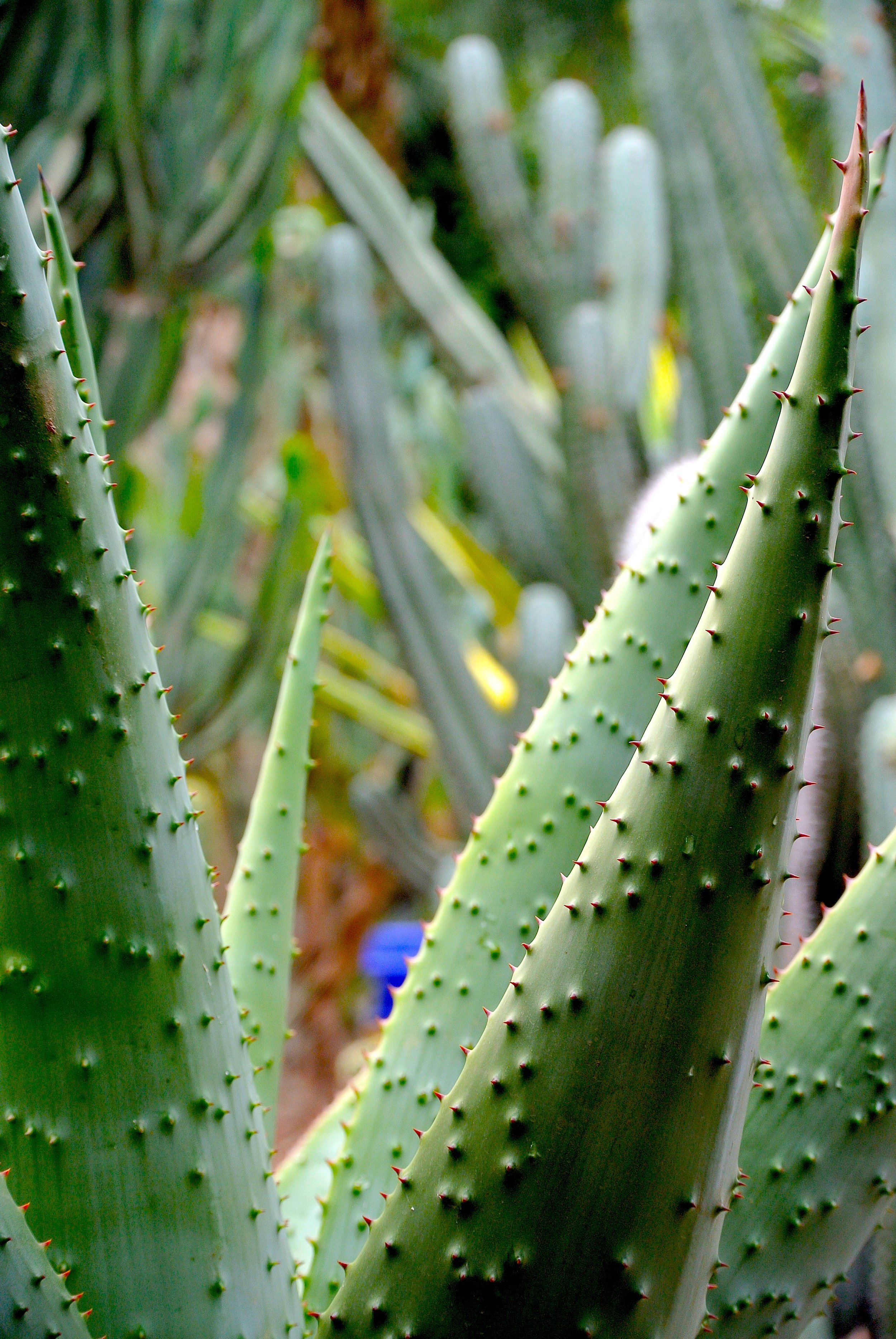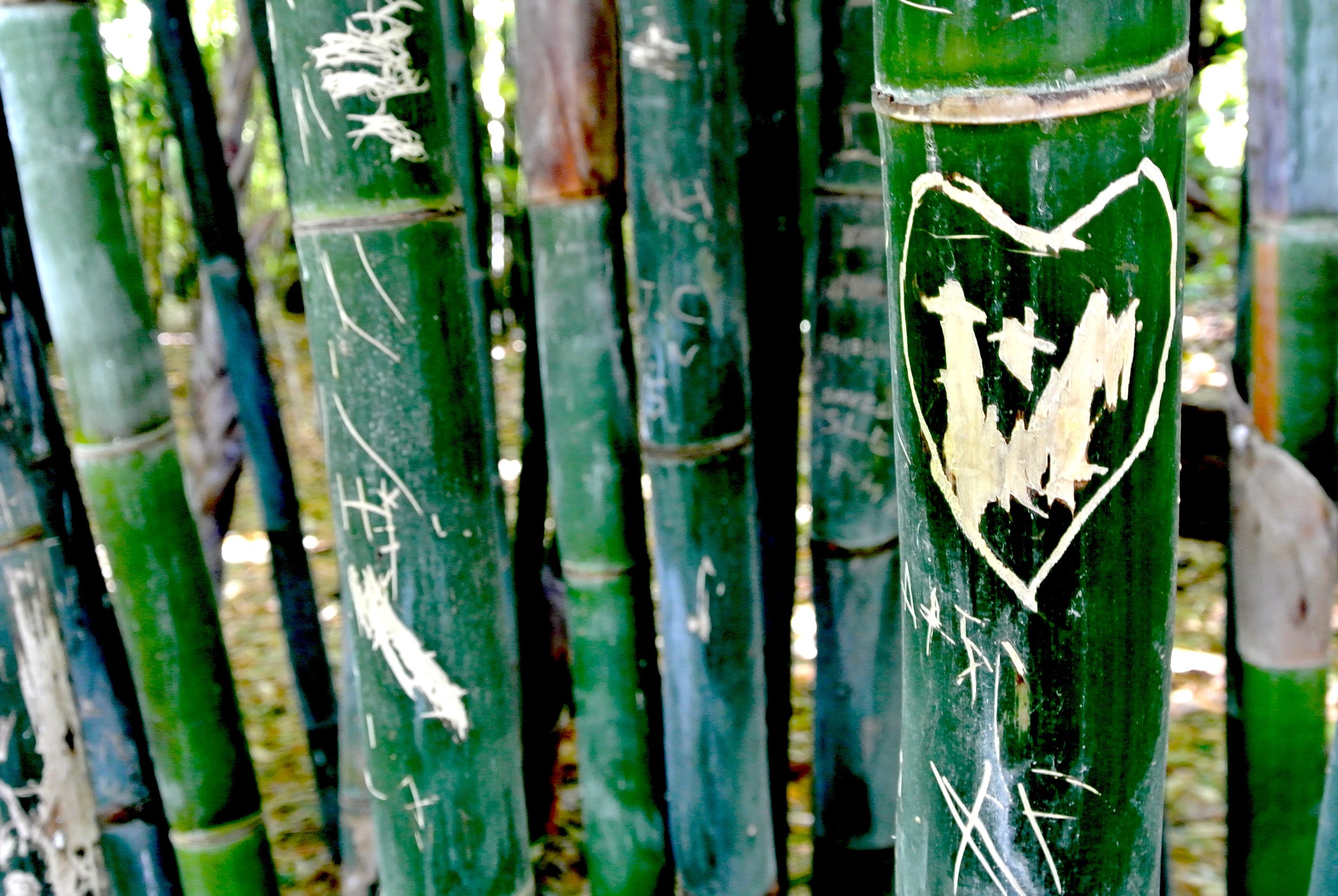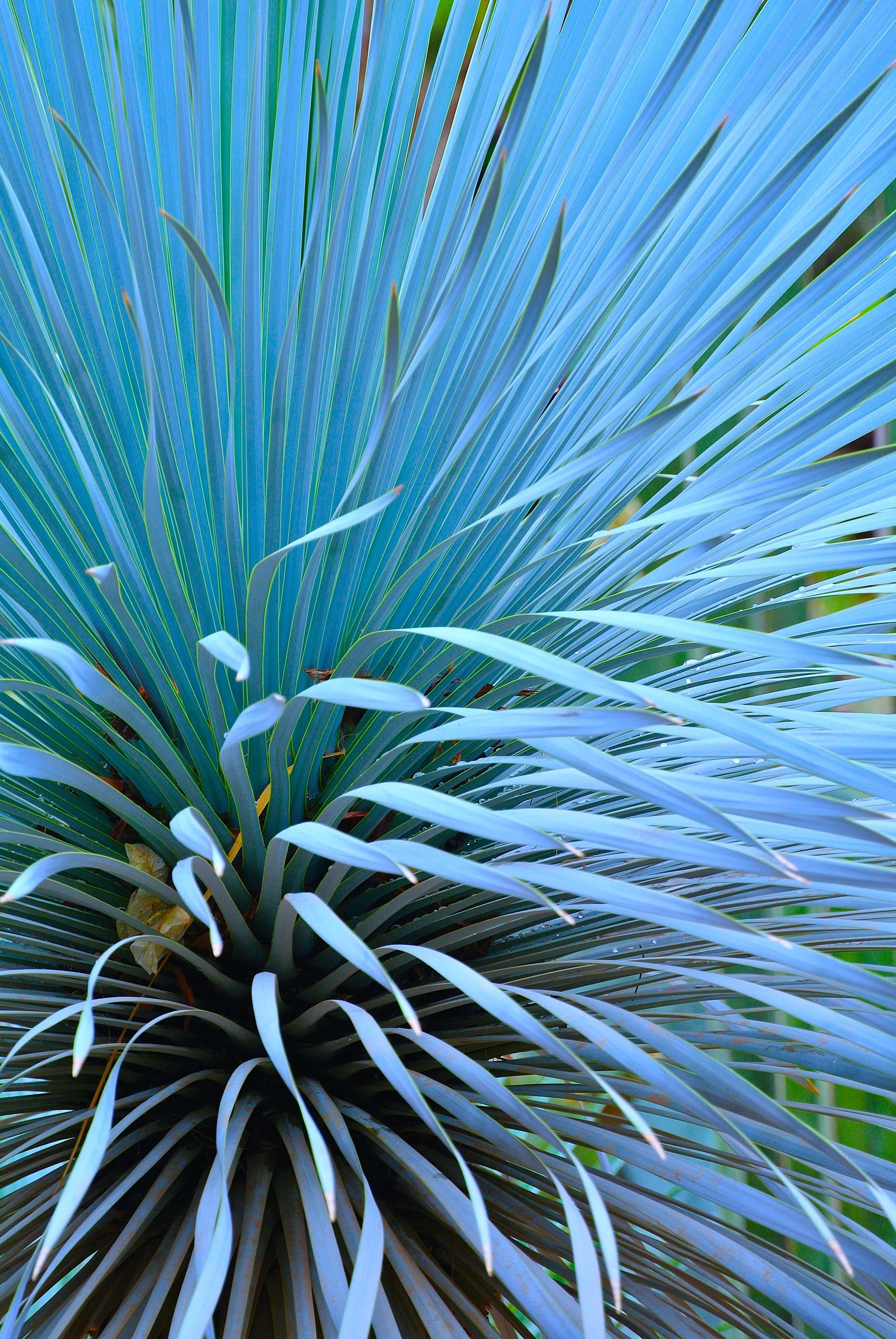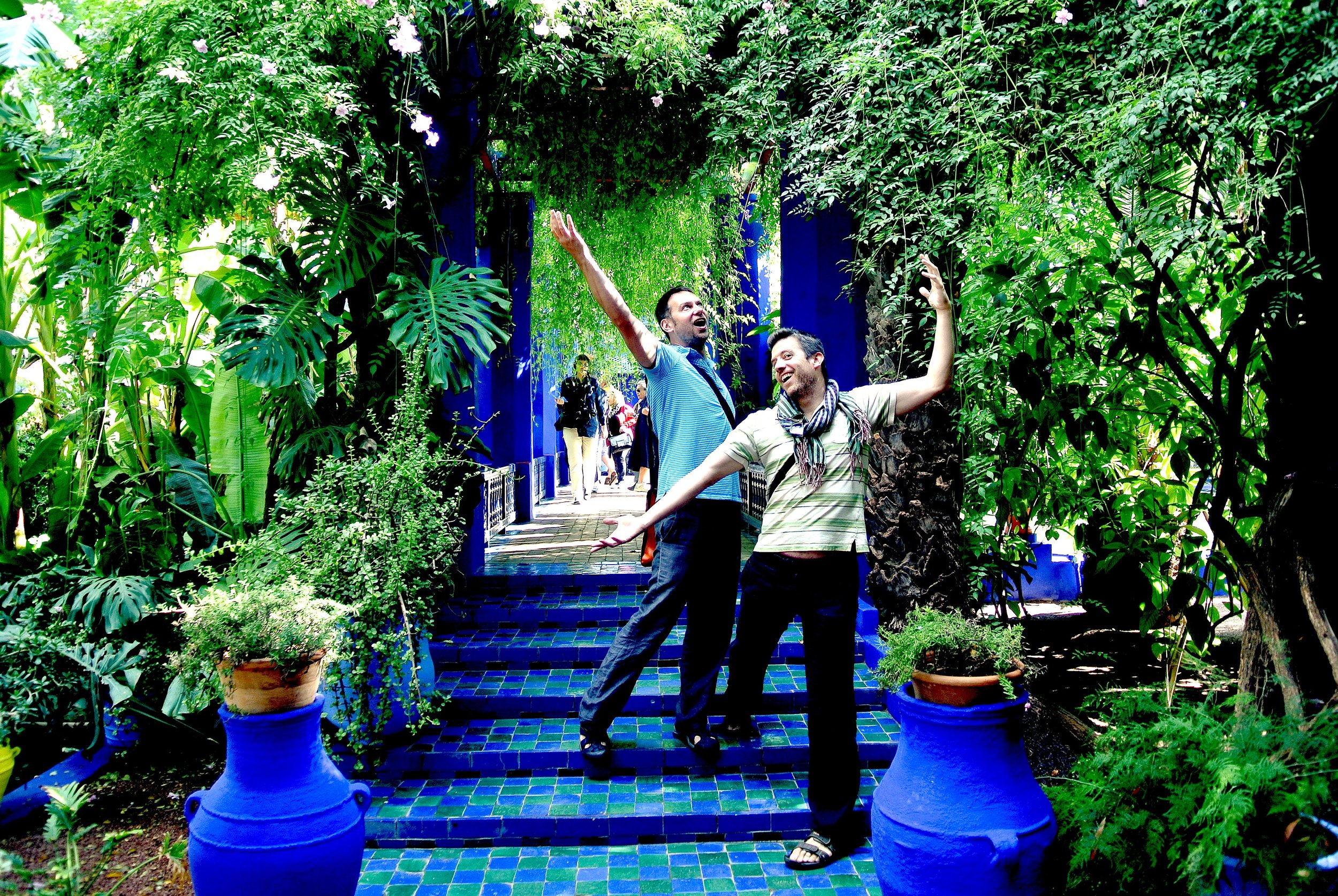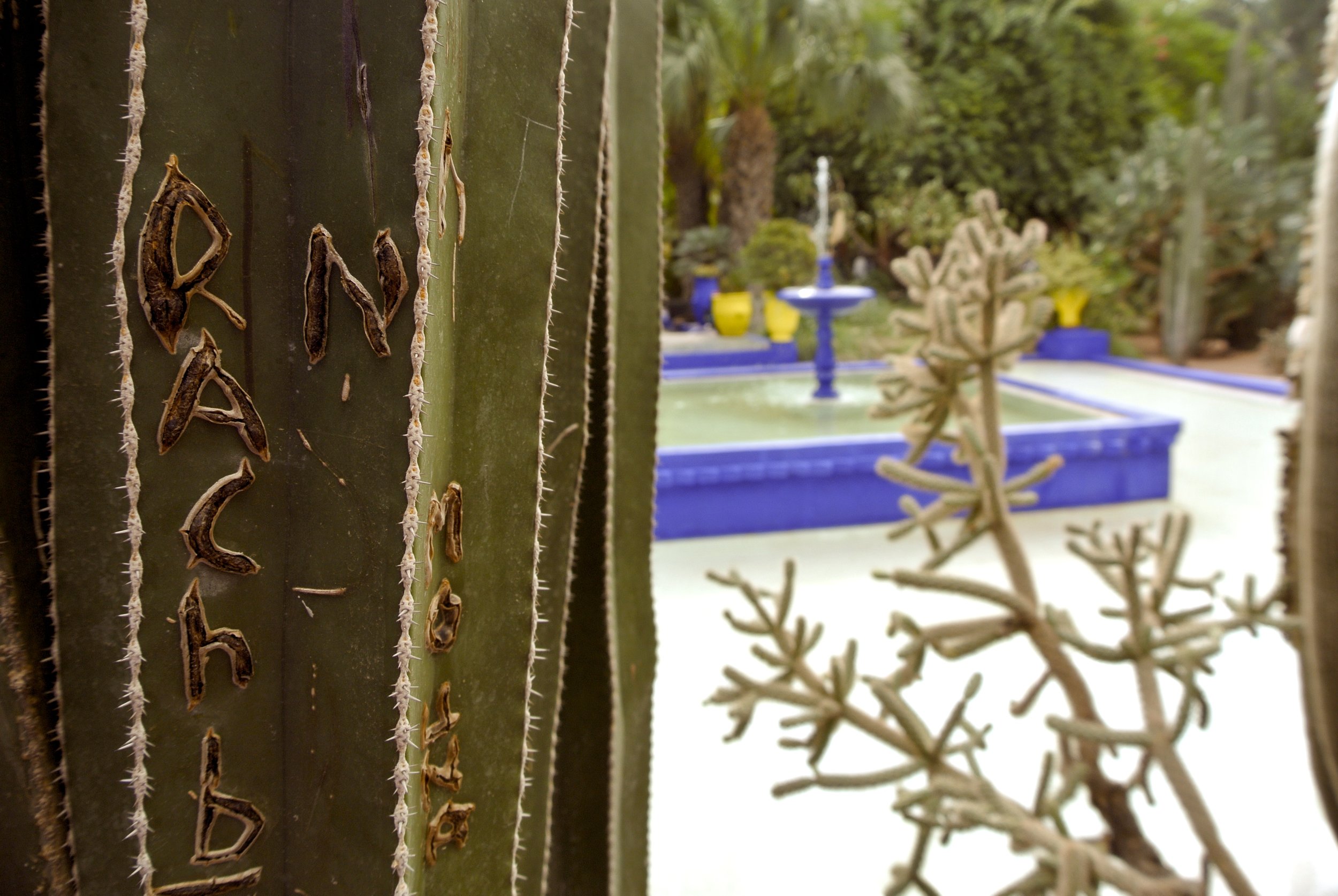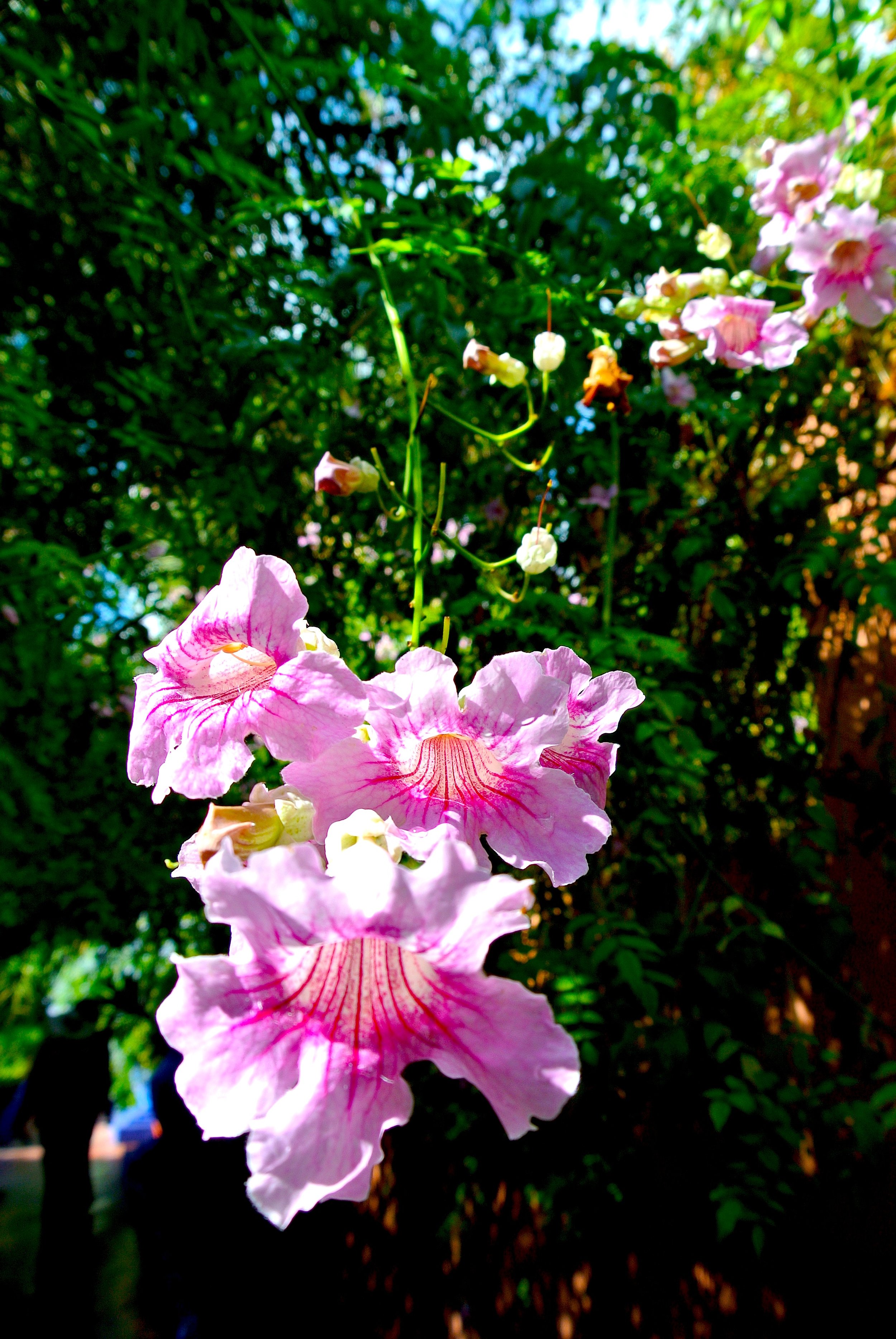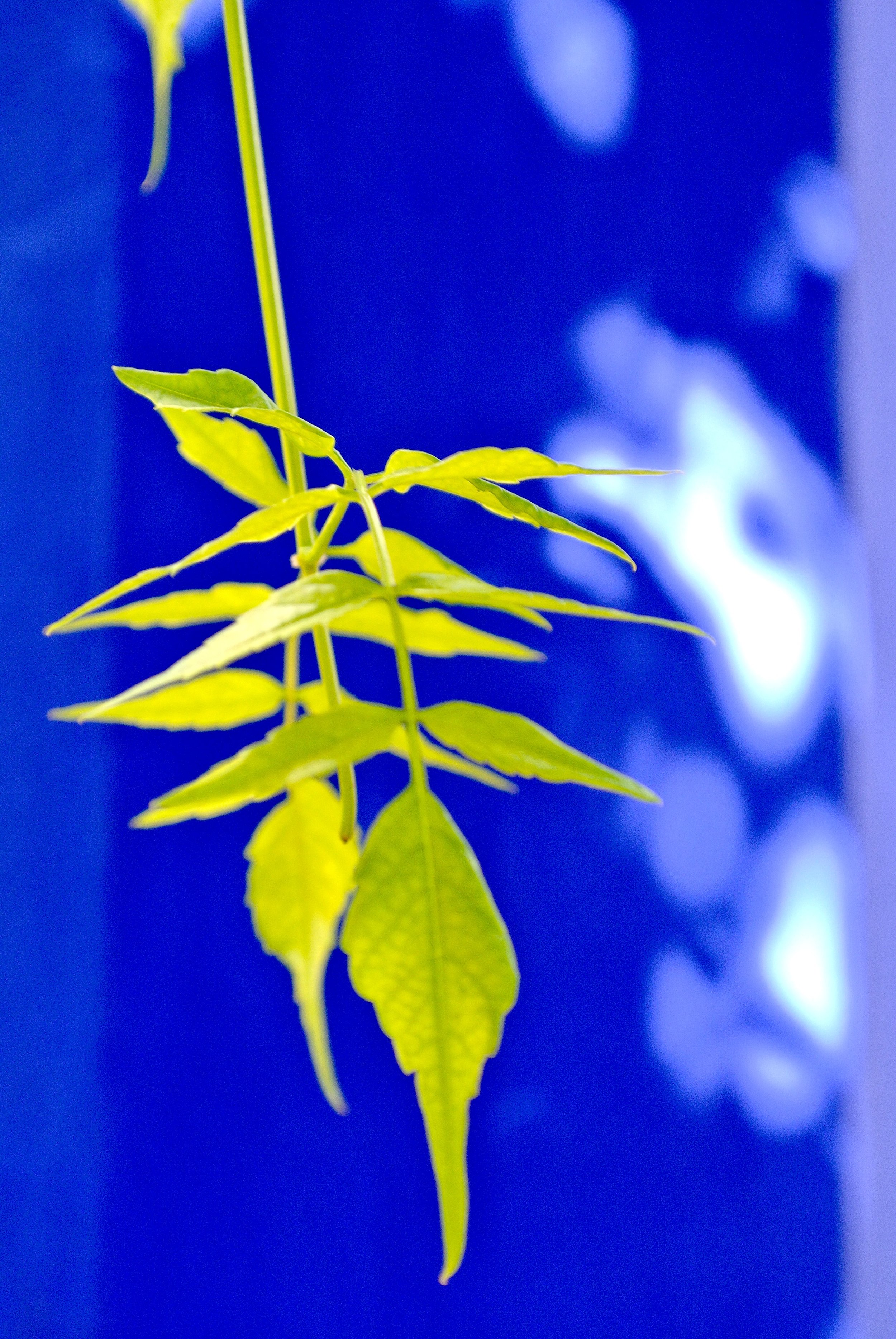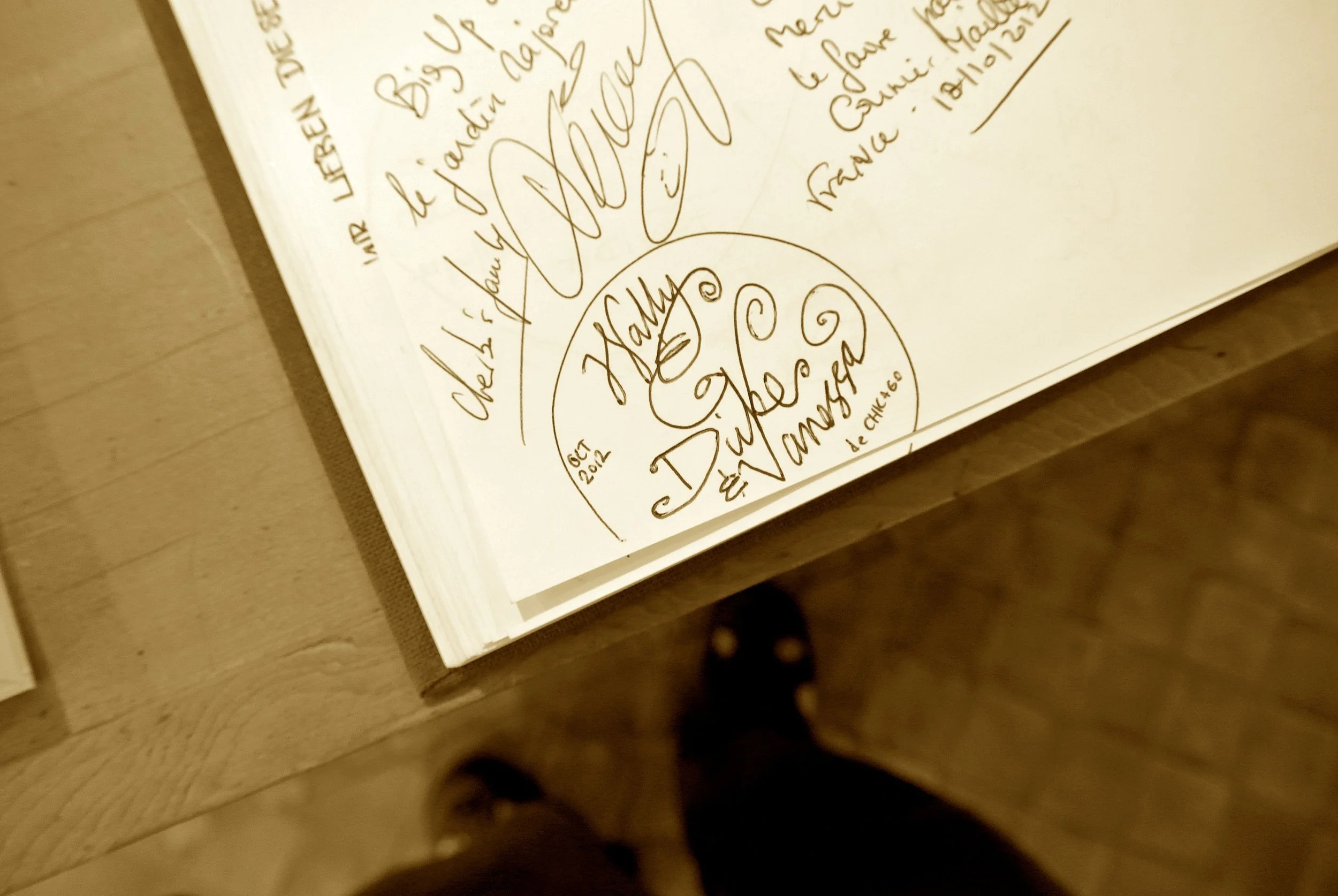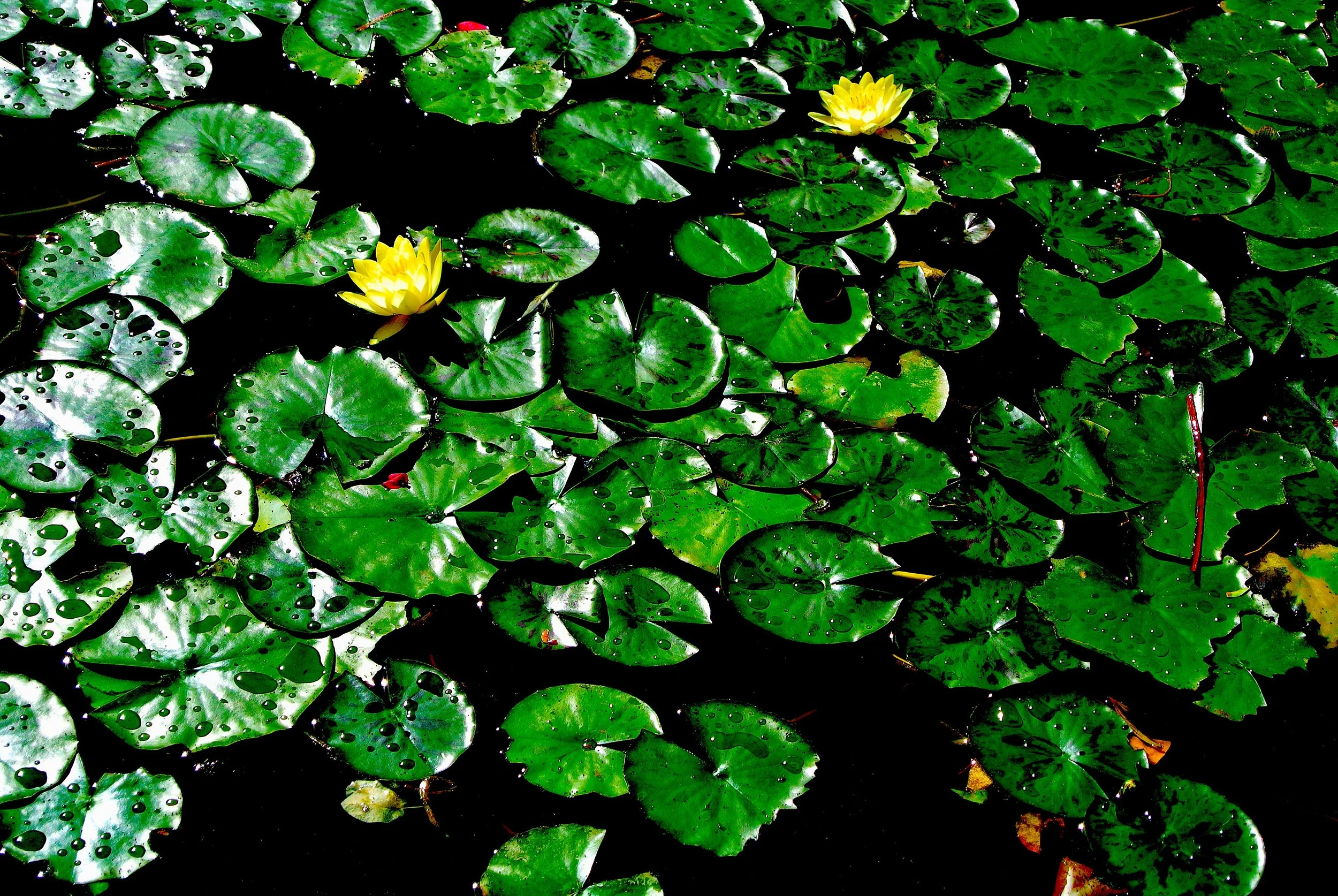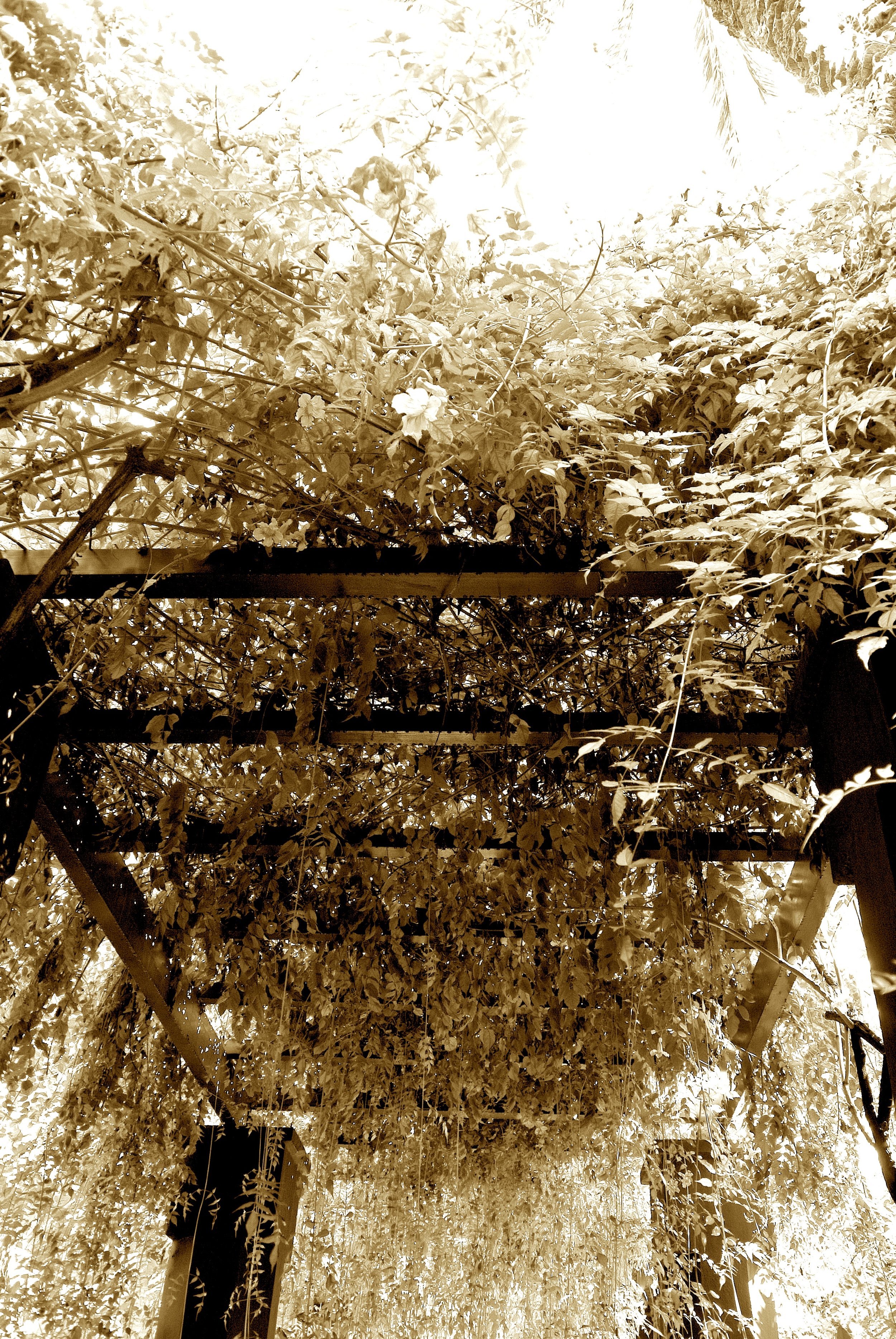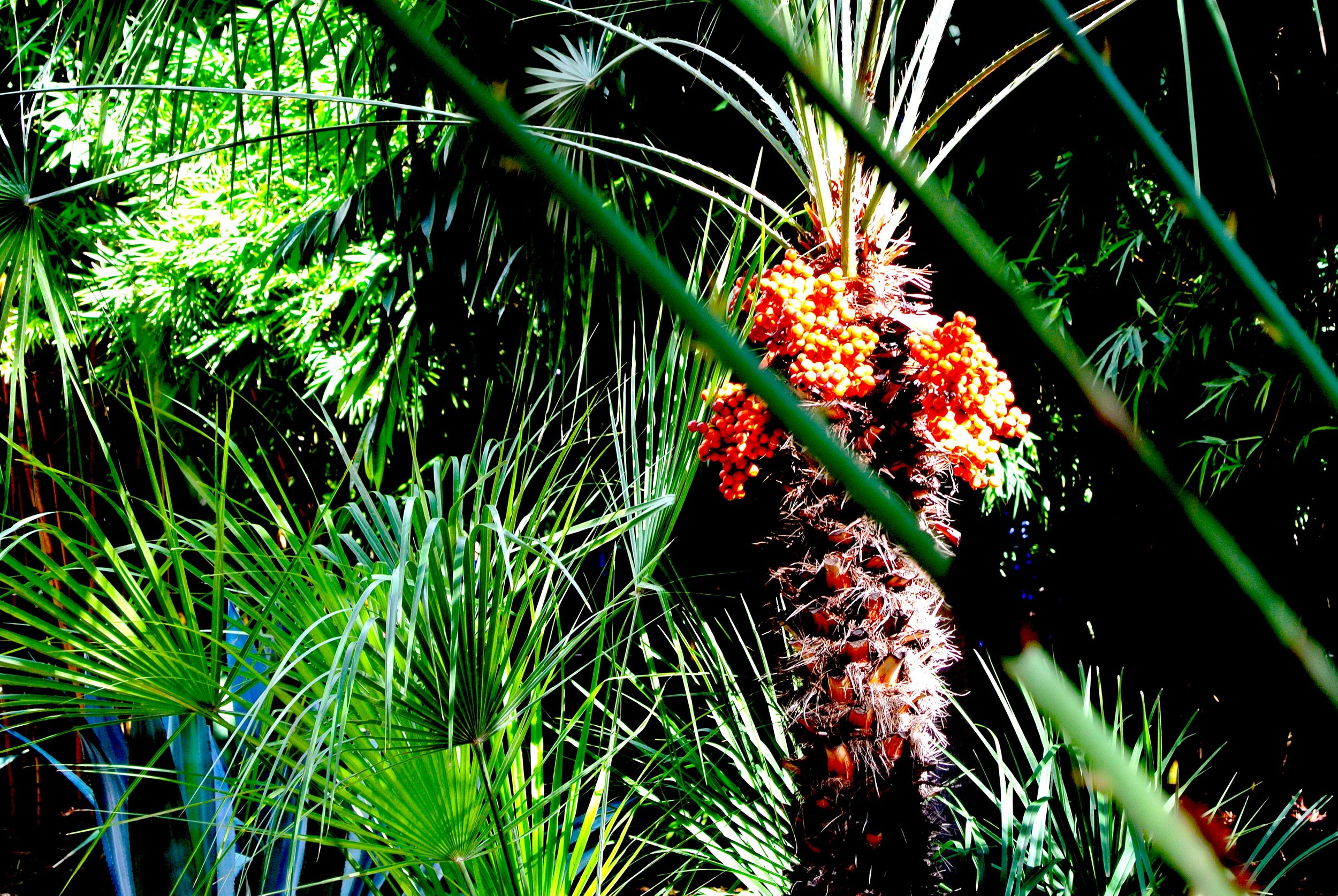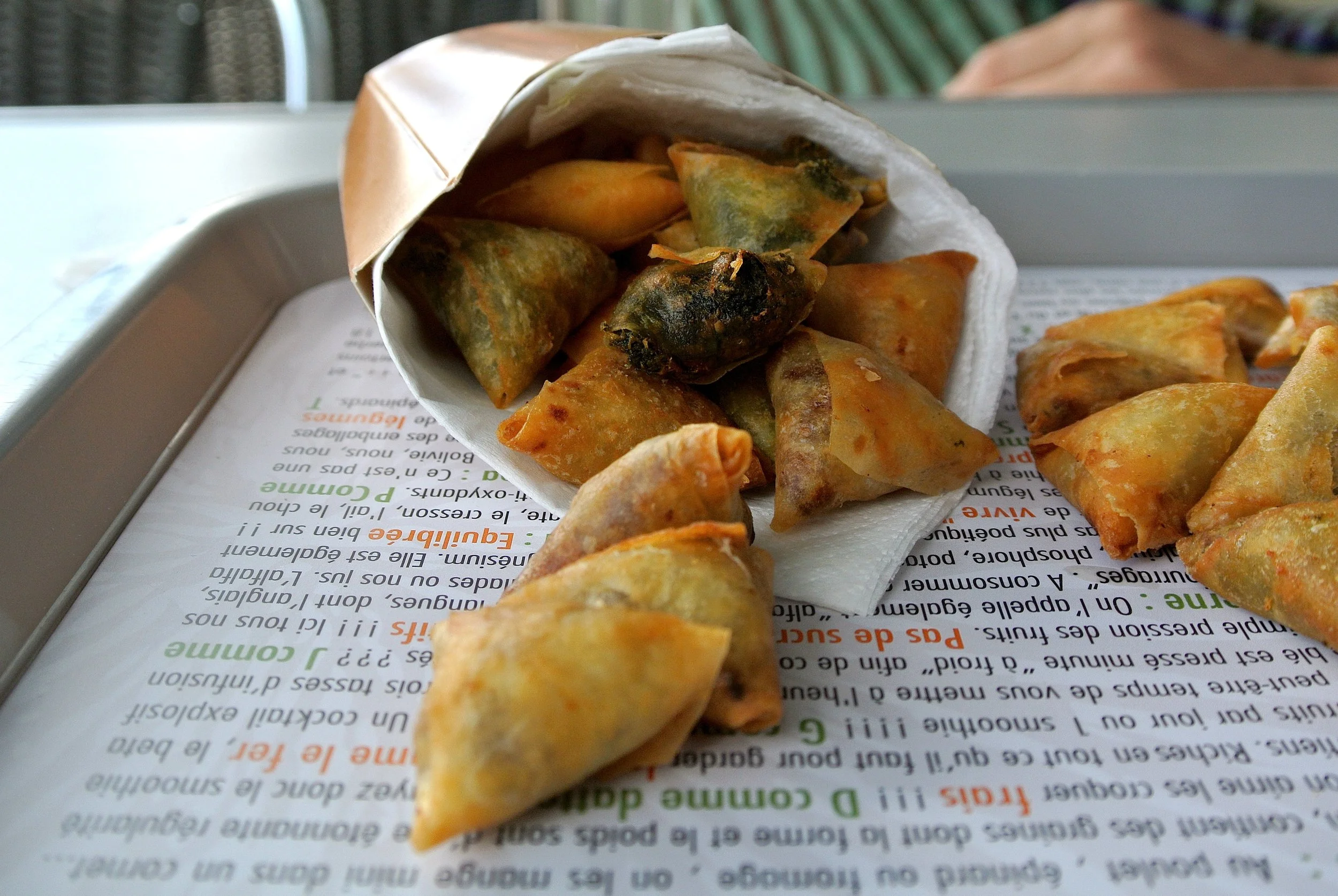Learn this UNESCO site’s colorful past, from convent to cinema, from prison to palace — and even a Masonic lodge still in use — and explore its beautiful grounds.
A tour of the grounds of the Quinta Real Oaxaca hotel yields unexpected delights, like this glimpse of a lush interior courtyard.
It’s undeniably one of the most popular hotels in Oaxaca, and even though we weren’t staying there, we read that we simply had to have a drink there and admire the gardens, which rivaled those at the Alhambra in Spain. (They’re perfectly delightful, but that’s a bit of a stretch.)
Duke and I popped into the Quinta Real on our last day in Oaxaca. We wanted to get a drink and enjoy it in one of their courtyards — but we couldn’t find an actual bar at the hotel; you have to sit at a table to get served. Not sure if we’d be able to get a drink and wander around, we opted to forgo the booze and just wander the grounds on our own.
“In the late 1800s, a buyer purchased the northeast section of the property to use as a Masonic lodge — which still operates to this day!”
One of the highlights of an exploration of the grounds is the stone gazebo and fountain in the Los Lavaderos Courtyard, so named because it was once used for laundry by the nuns.
Repurposed a Seemingly Endless Number of Times
The hotel began as property of the Roman Catholic Church, much like the Ex Convento de San Pablo, about another historic building in town, now home to the Casa Antonieta boutique hotel, the Textile Museum of Oaxaca and the Centro Cultural de San Pablo.
The Quinta Real is housed in the former Convent of Santa Catalina de Siena, which was built in 1577. The nuns lived a life of seclusion and quiet meditation there for centuries — until 1859, when they were booted out by Benito Juárez’s Reform laws, which nationalized the church and seized its property.
“The monument would then begin a long history of deterioration, monstrous construction work and atrocious transformations,” reads a sign out front.
You can see part of the original convent exterior in the gorgeous pool area.
Not a bad spot to catch some rays
The ex-convent was put to a crazy amount of uses by the state government. In addition to a stint as a prison from 1862 to 1958, the structure also housed, at varying times, the civil registry office, the weights and measures office, the state printing press, a police precinct, the craftsman’s society, criminal courts, a night school and the Abraham Castellano Primary School from 1956 to 1962.
What was the convent’s atrium even became the municipal palace for almost a century, from 1873 to 1970.
Cantera stone, used in the façade of the convent, which is now a hotel, has a distinctive greenish color.
The Quinta Real is succulent — in more ways than one.
The sprawling grounds have undergone numerous and varied uses over the years, including a police precinct, printing press, school — even a municipal palace!
The Quinta Real is housed in the former Convent of Santa Catalina de Siena, which was built in 1577.
The Quinta Real property takes up an entire city block and has lots of nooks to discover. It’s now a UNESCO World Heritage Site.
In the late 1800s, a private buyer purchased the northeast section of the property to use it as a Masonic lodge — which still operates there to this day!
The onsite chapel has its own storied past: It was first converted to a municipal warehouse, but in the 1930s it became an art school, and then a movie theater from 1950 to 1960. Then, in 1972 the chapel was finally restored, along with the rest of the estate, when it was reconceptualized as a hotel.
Paintings and statues can be found throughout the hotel.
Be sure to check out the faded fresco on the wall of the gift shop.
The old chapel was empty when we explored the hotel but would make a good event space. It was once used as a cinema.
The Quinta Real has been designated a UNESCO World Heritage Site. It’s worth a visit, even if you’re not staying there, to wander and admire the grounds. Try to figure out a way to have a drink in the gardens — and don’t set your bag down (thankfully empty of everything but the chocolate bars we bought at Mamá Pacha) to take pictures and leave it like I did. –Wally
Orange trees give the restaurant, Los Naranjos, its name.
This dining area, Los Cántaros, has an interesting art installation. Those ceramic containers, cántaros, were unearthed during the renovation and were once used to as pitchers or to hold oil.
Quinta Real Oaxaca
5 de Mayo 300
Ruta Independencia
Centro
68000 Oaxaca de Juárez
Oaxaca
Mexico

